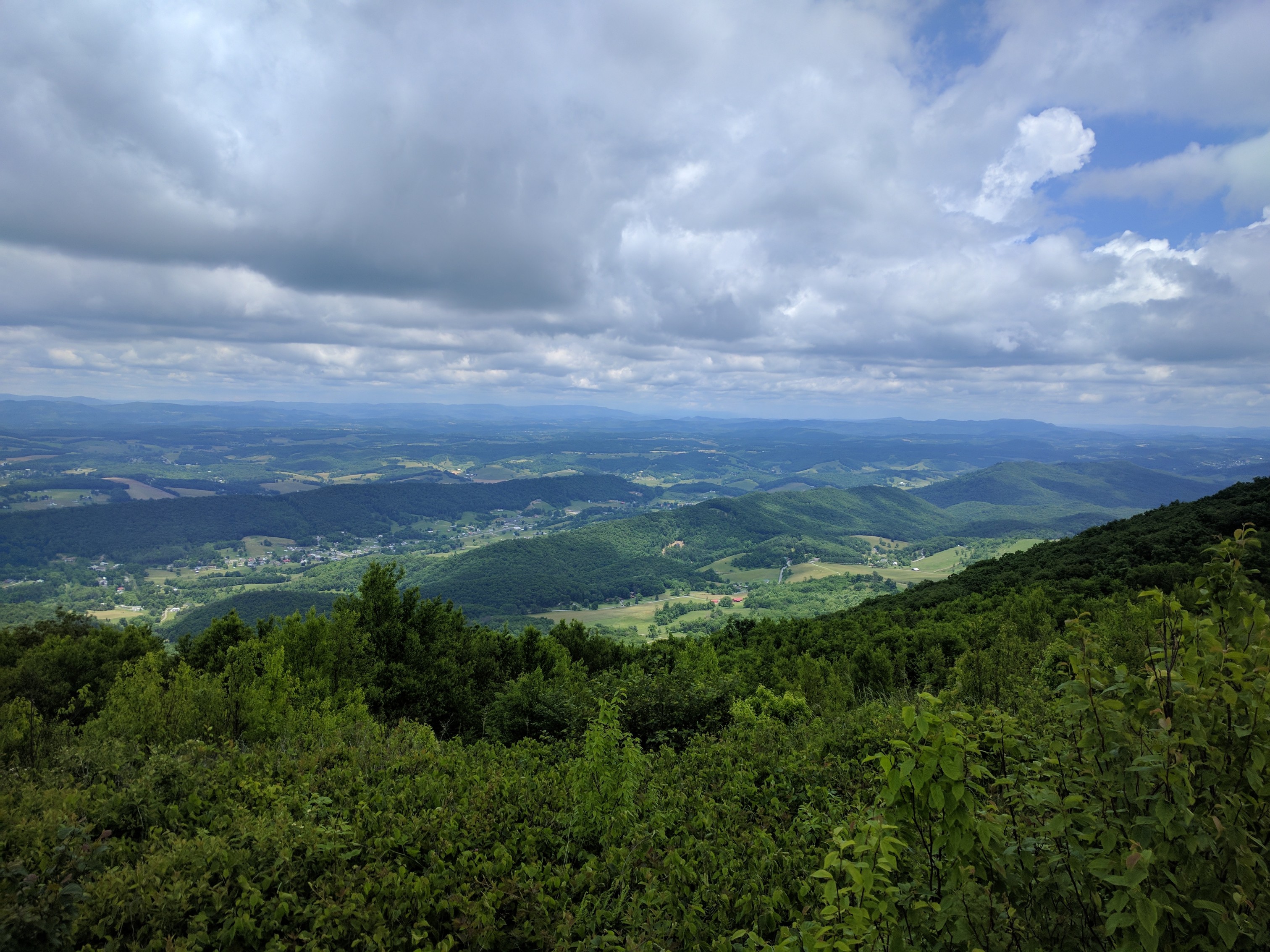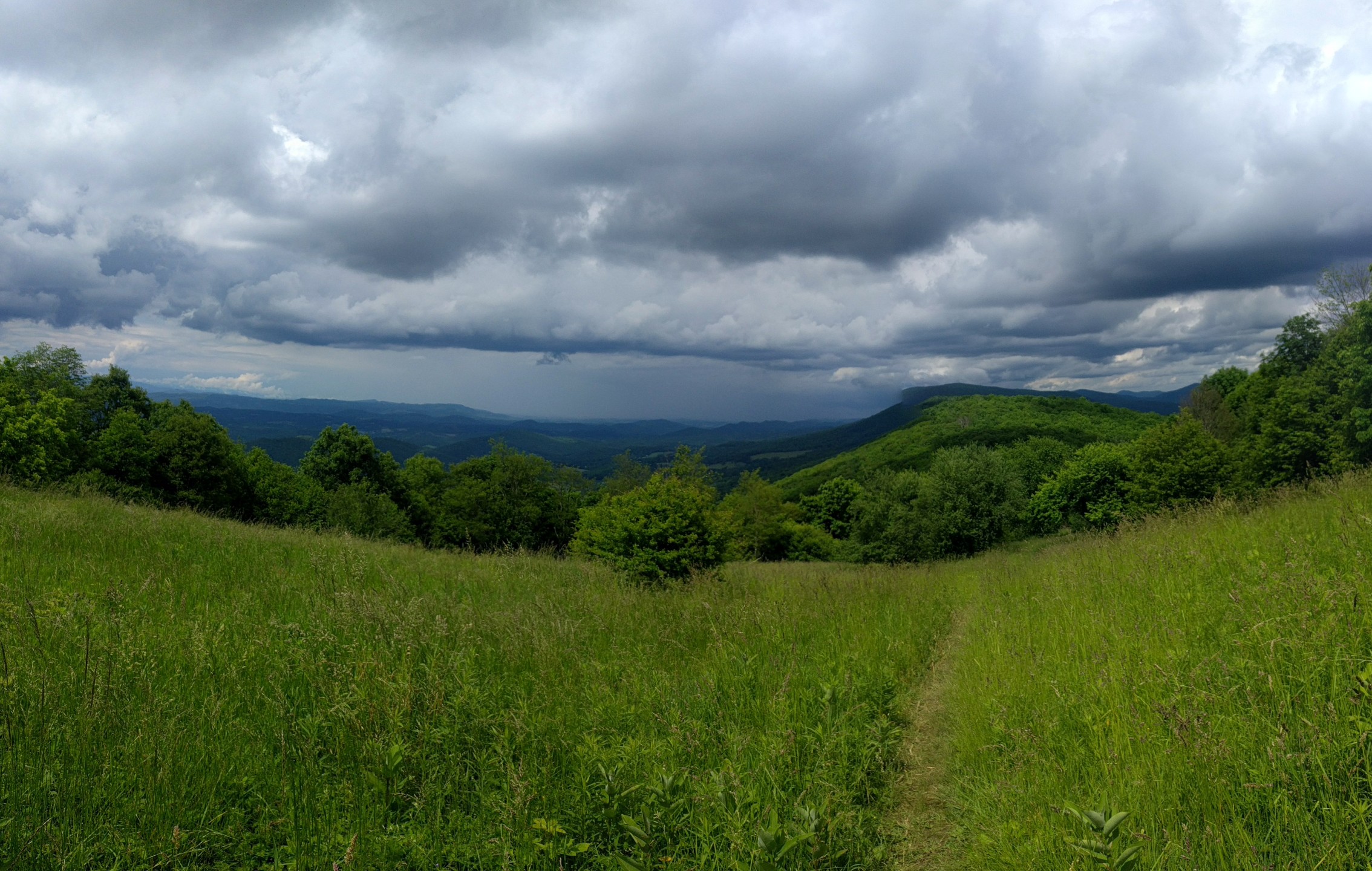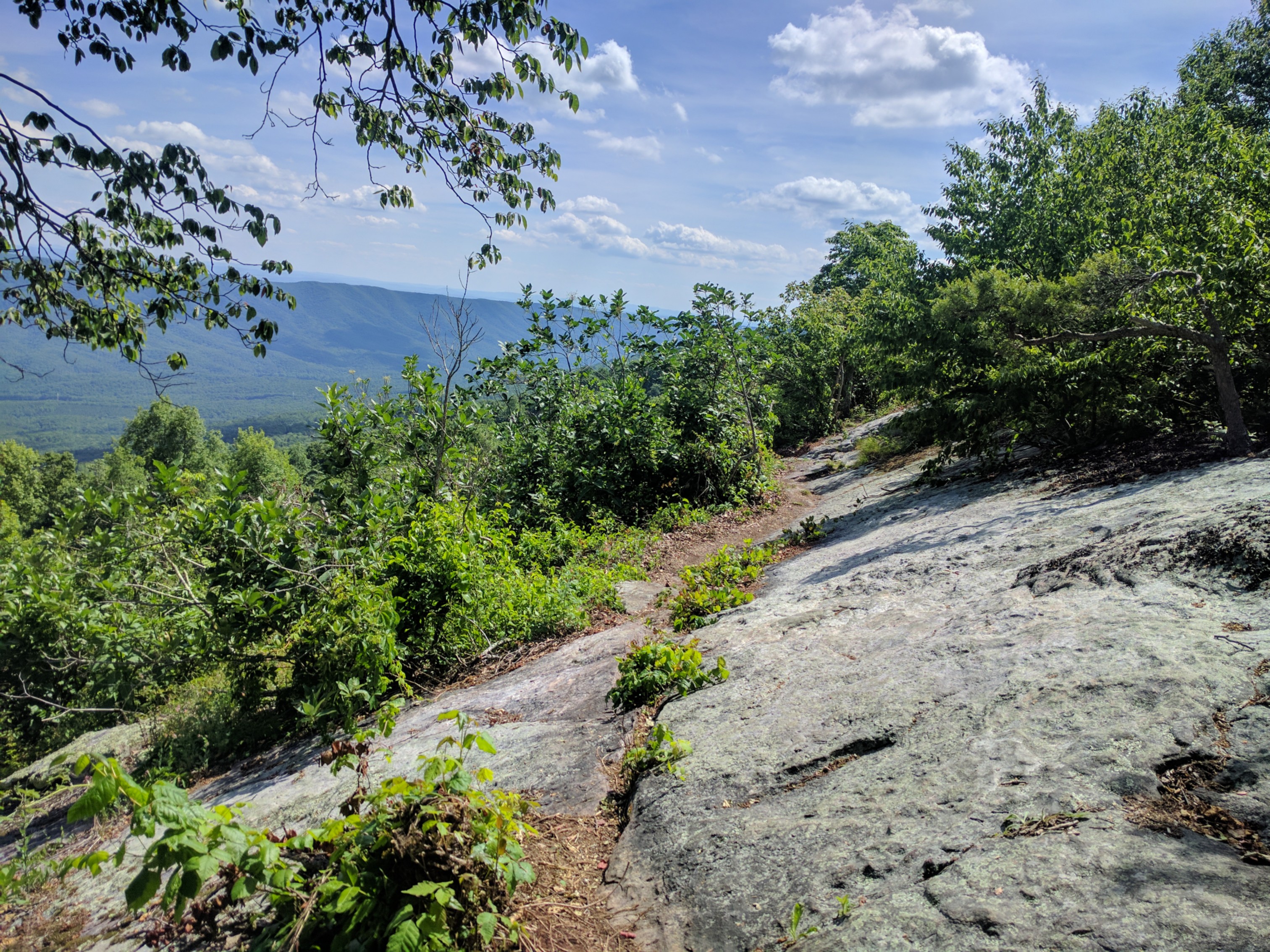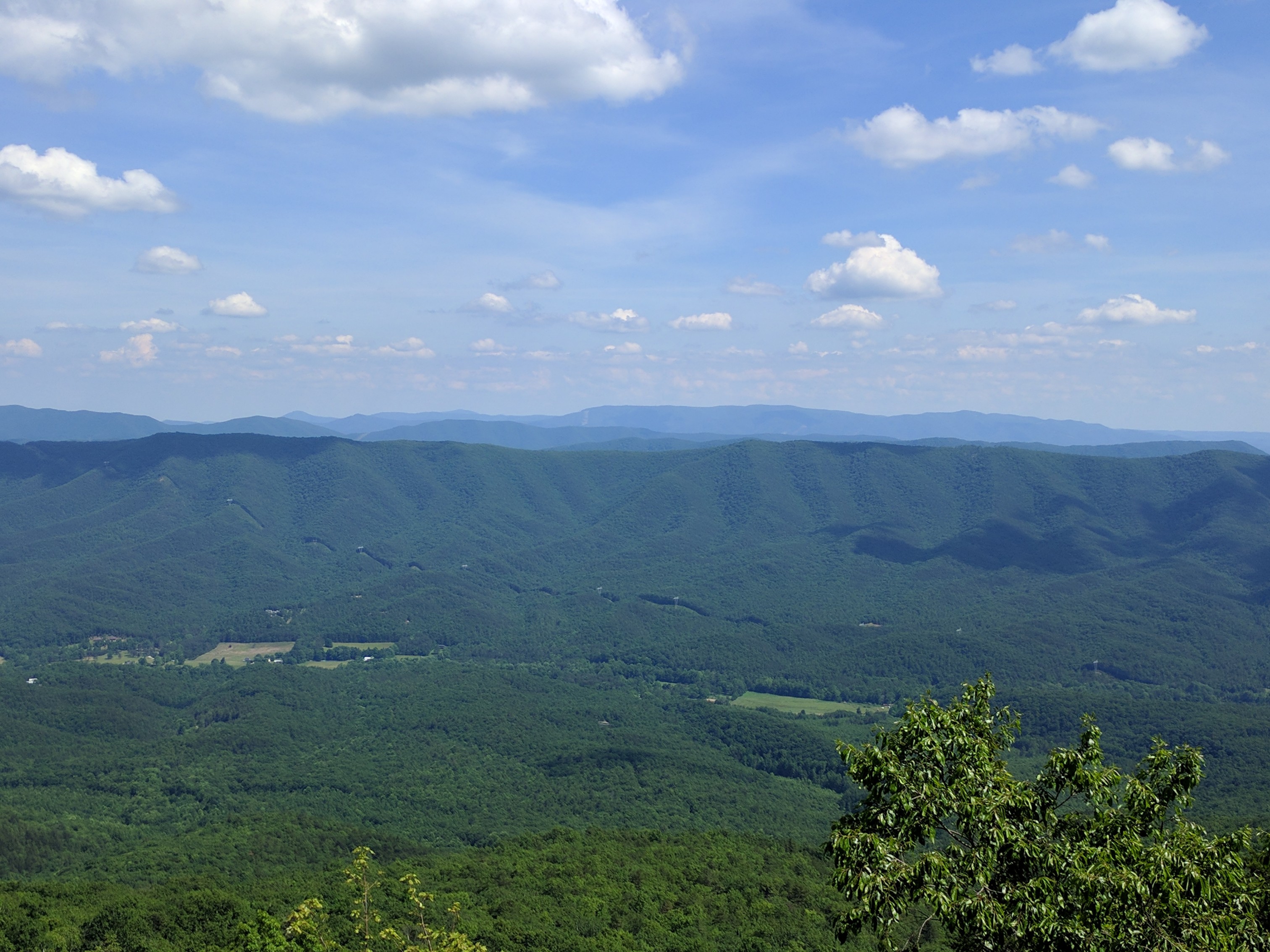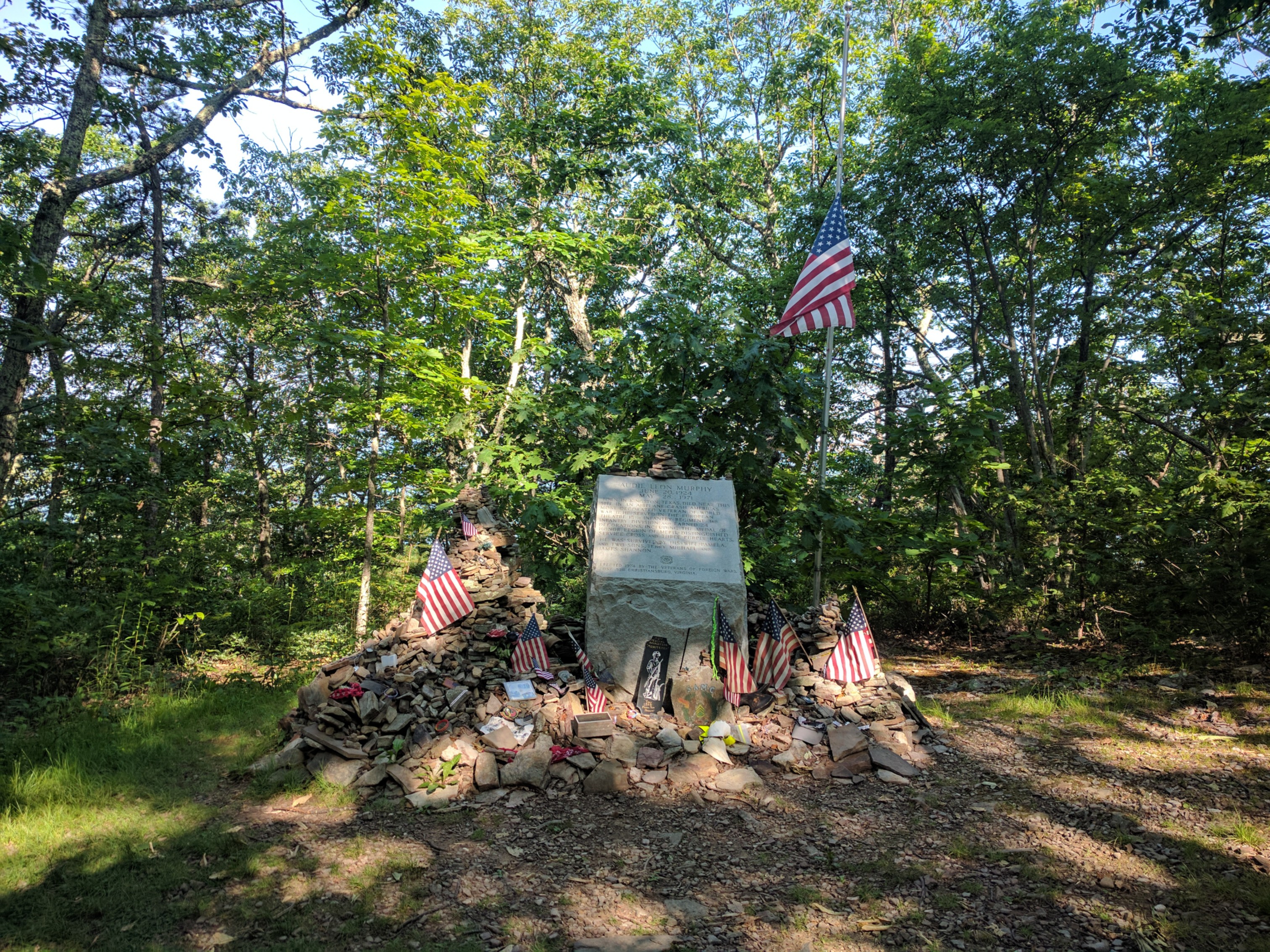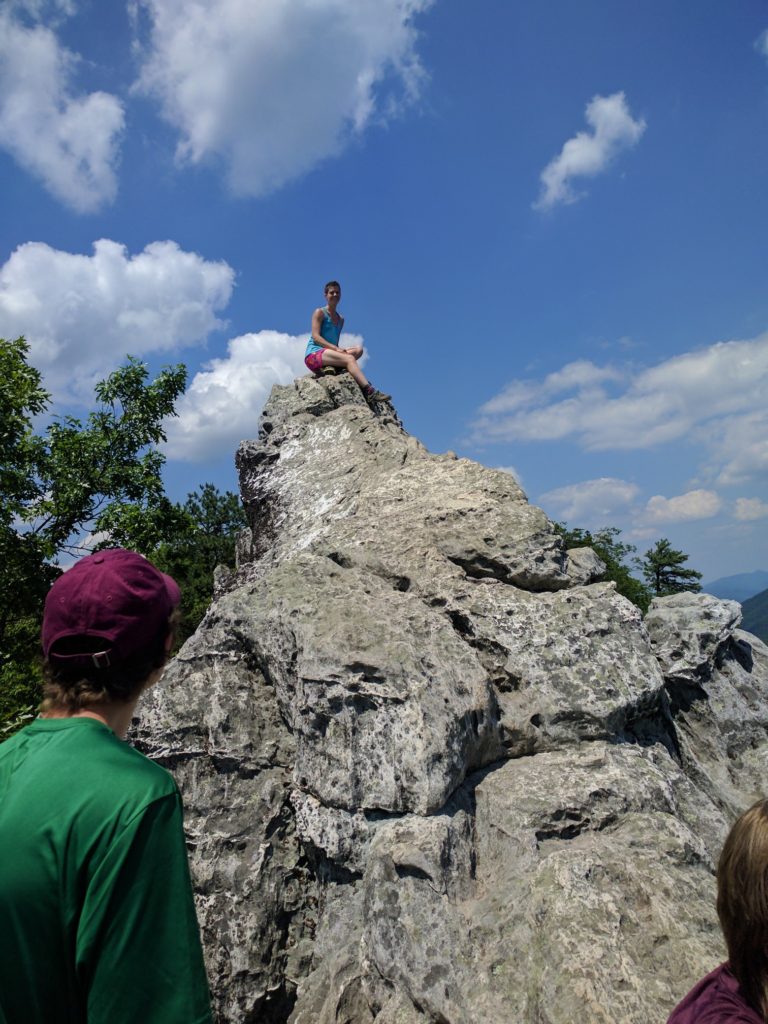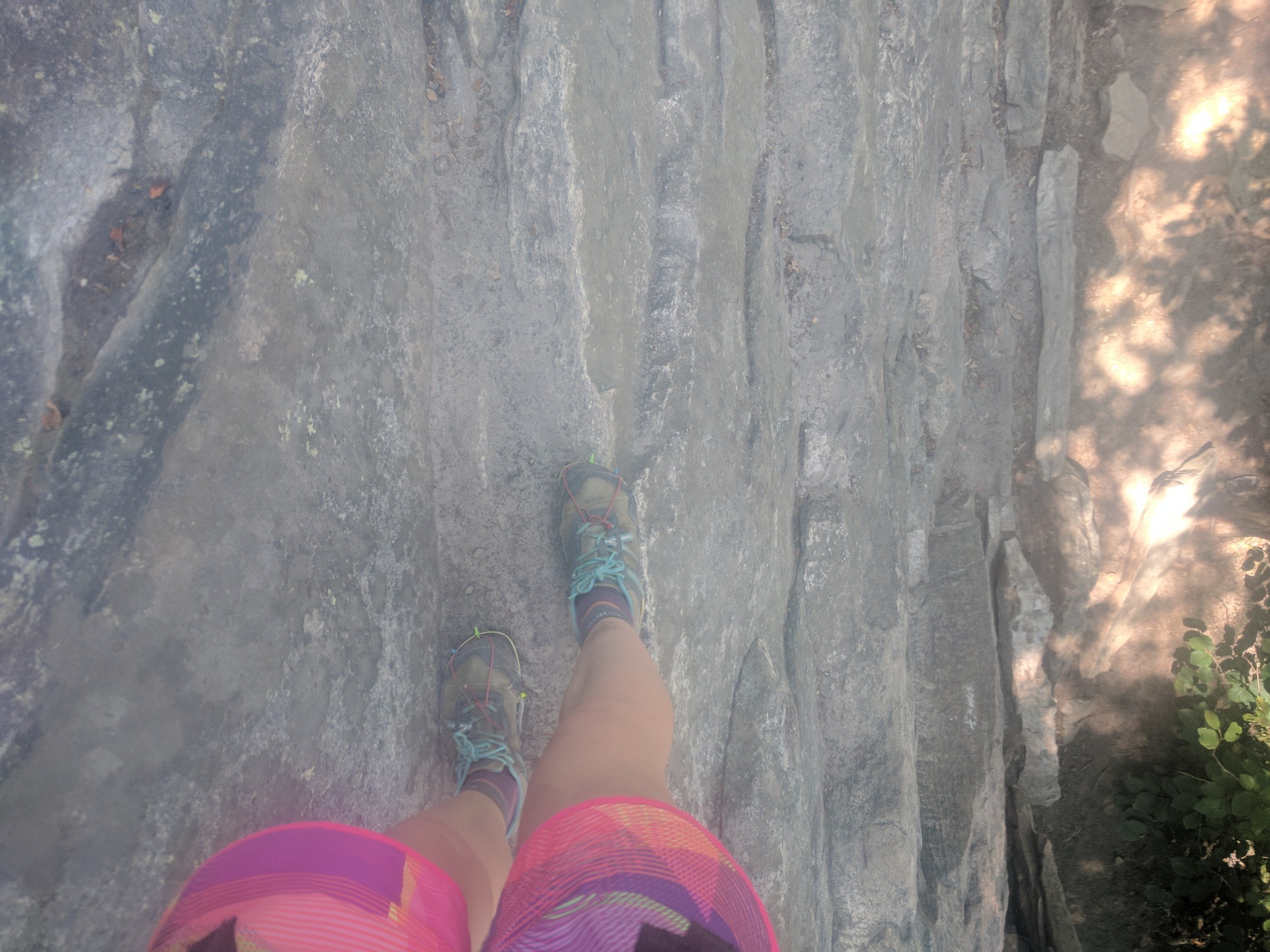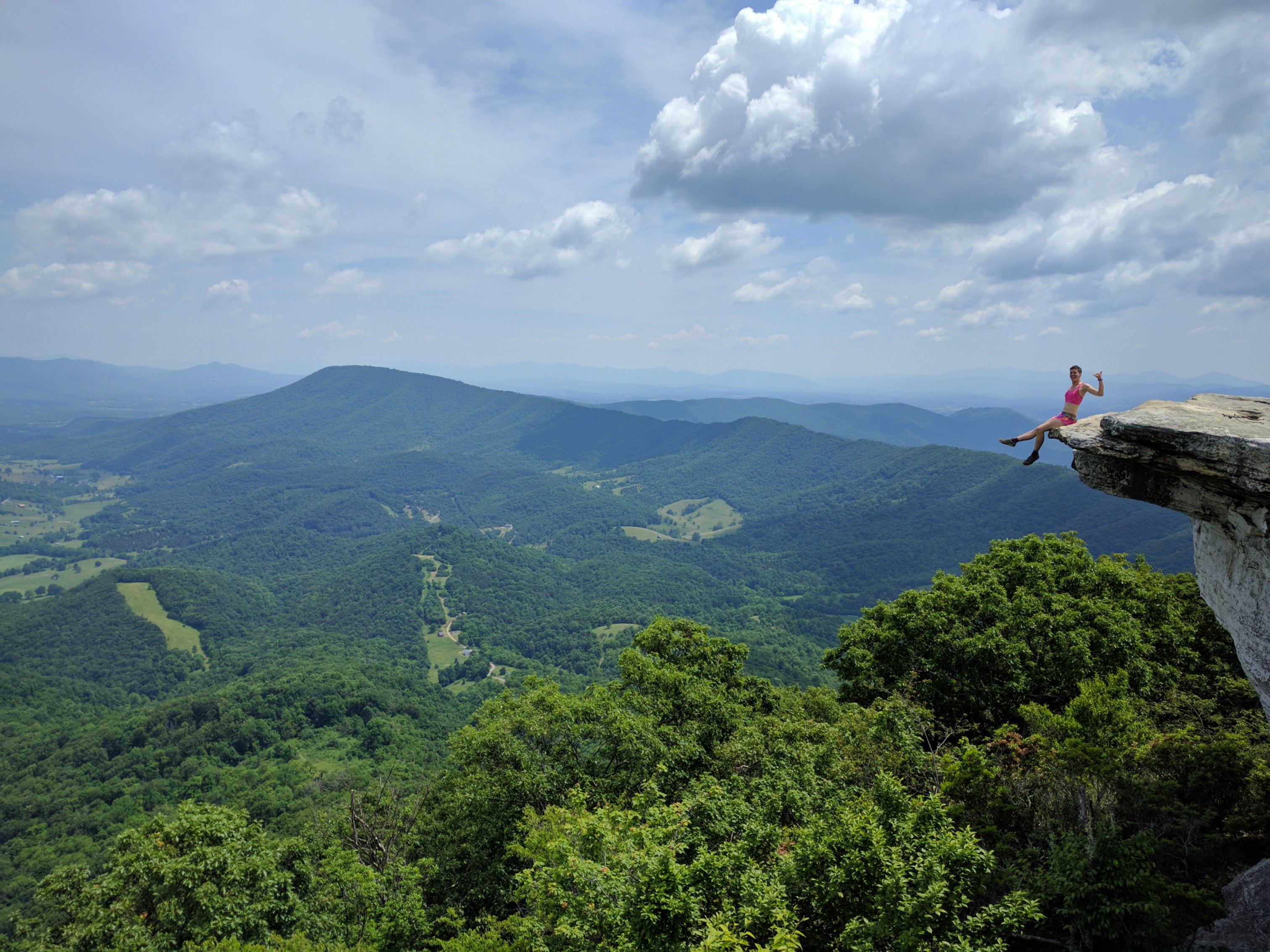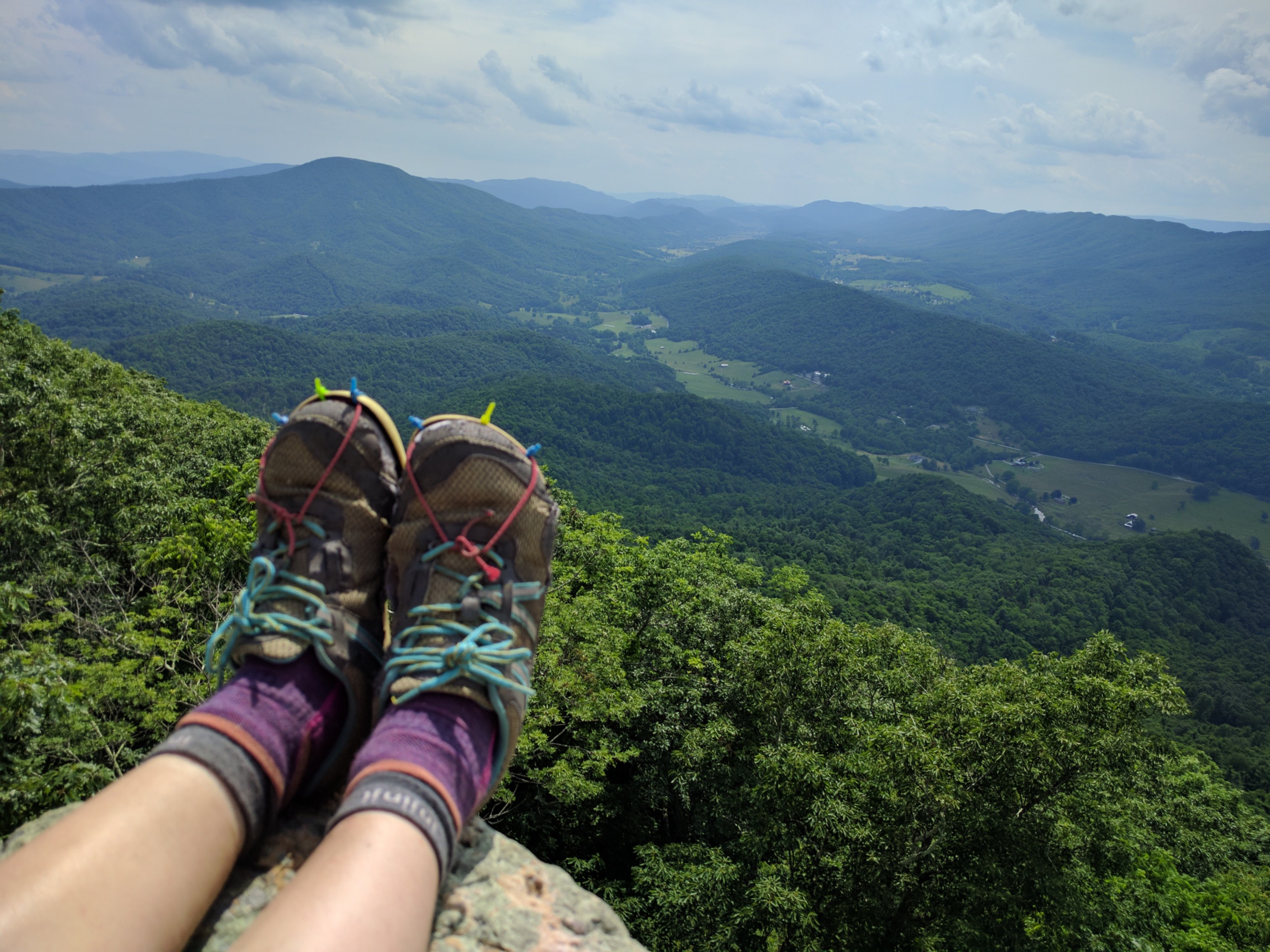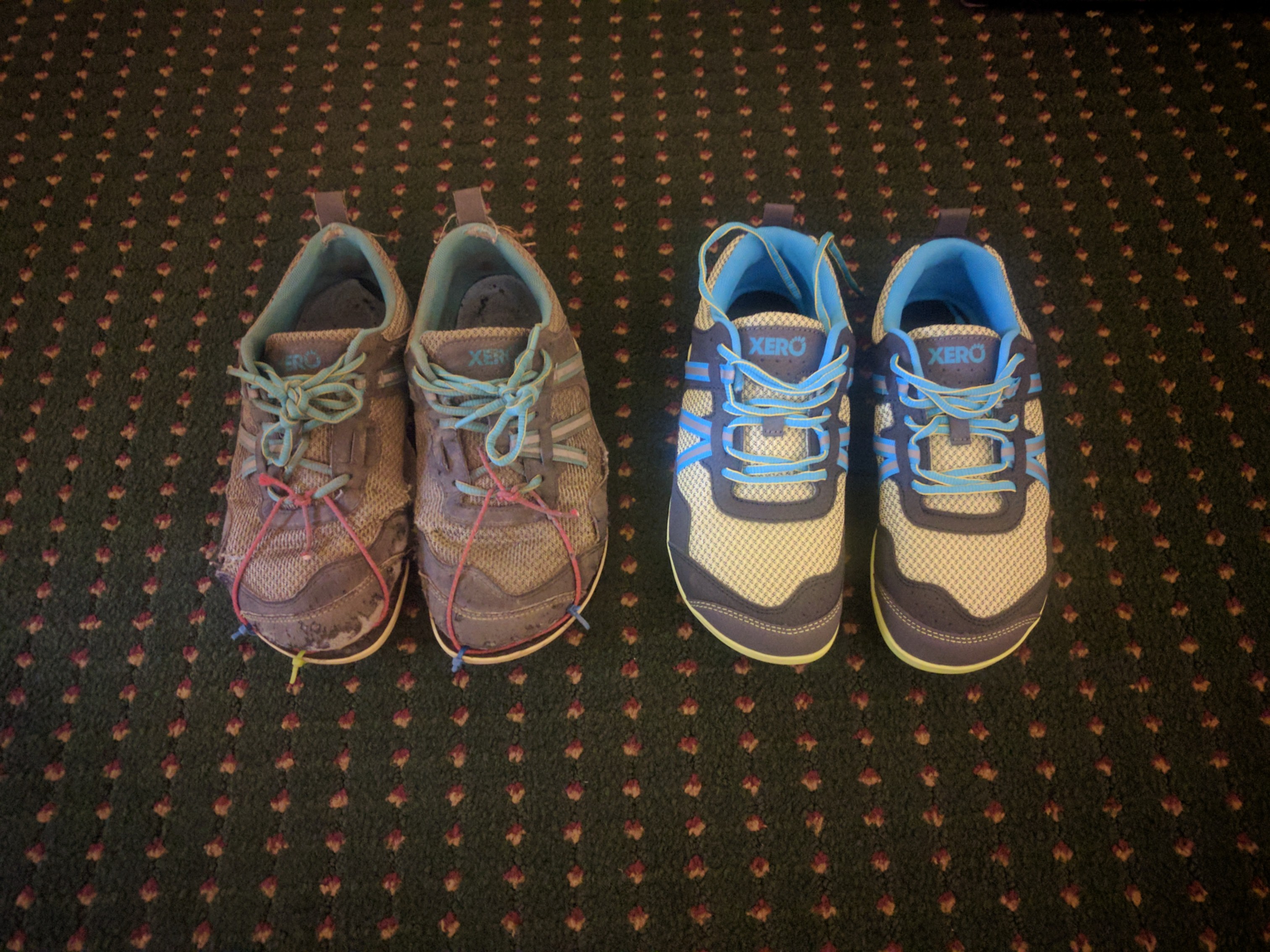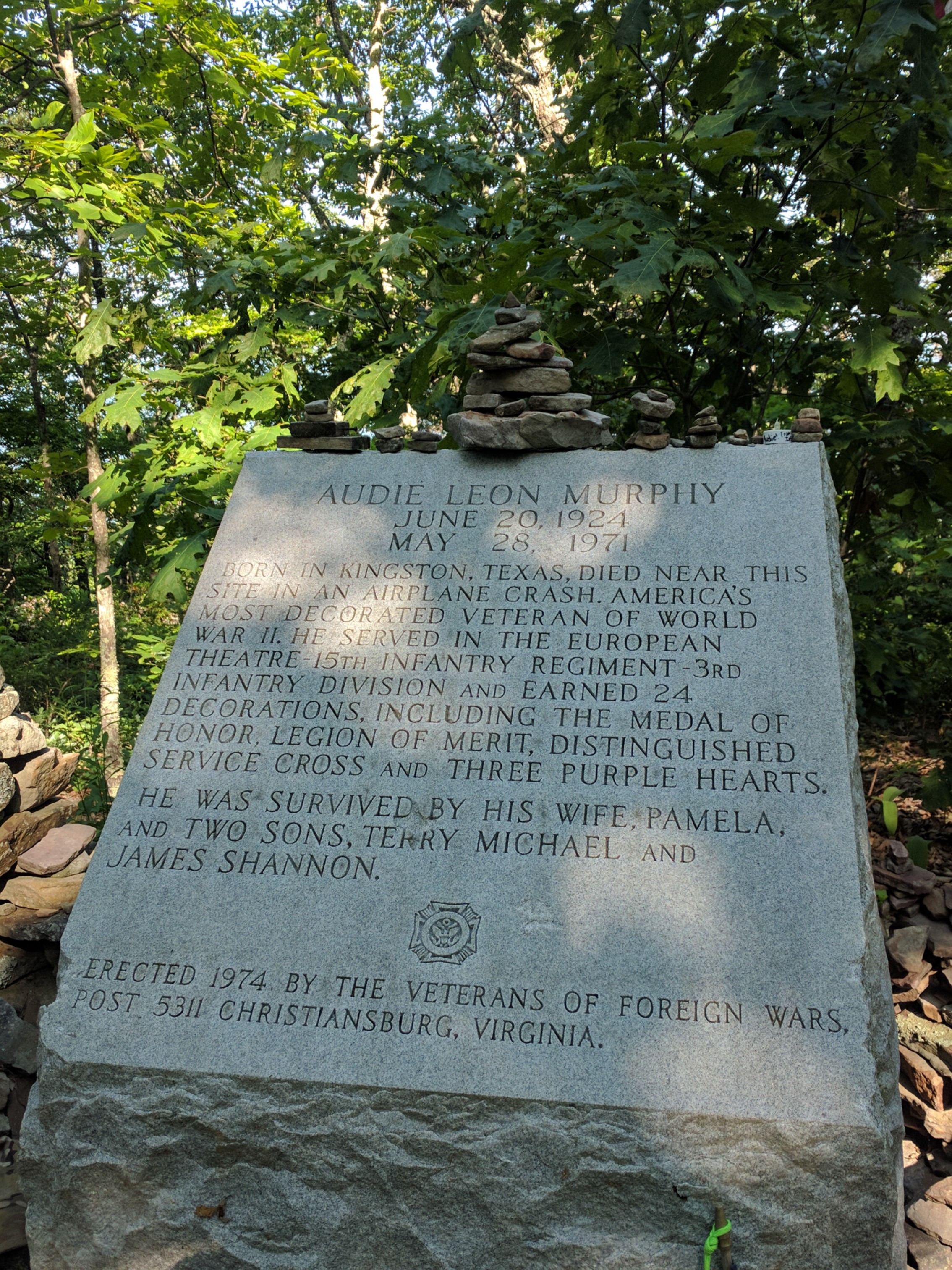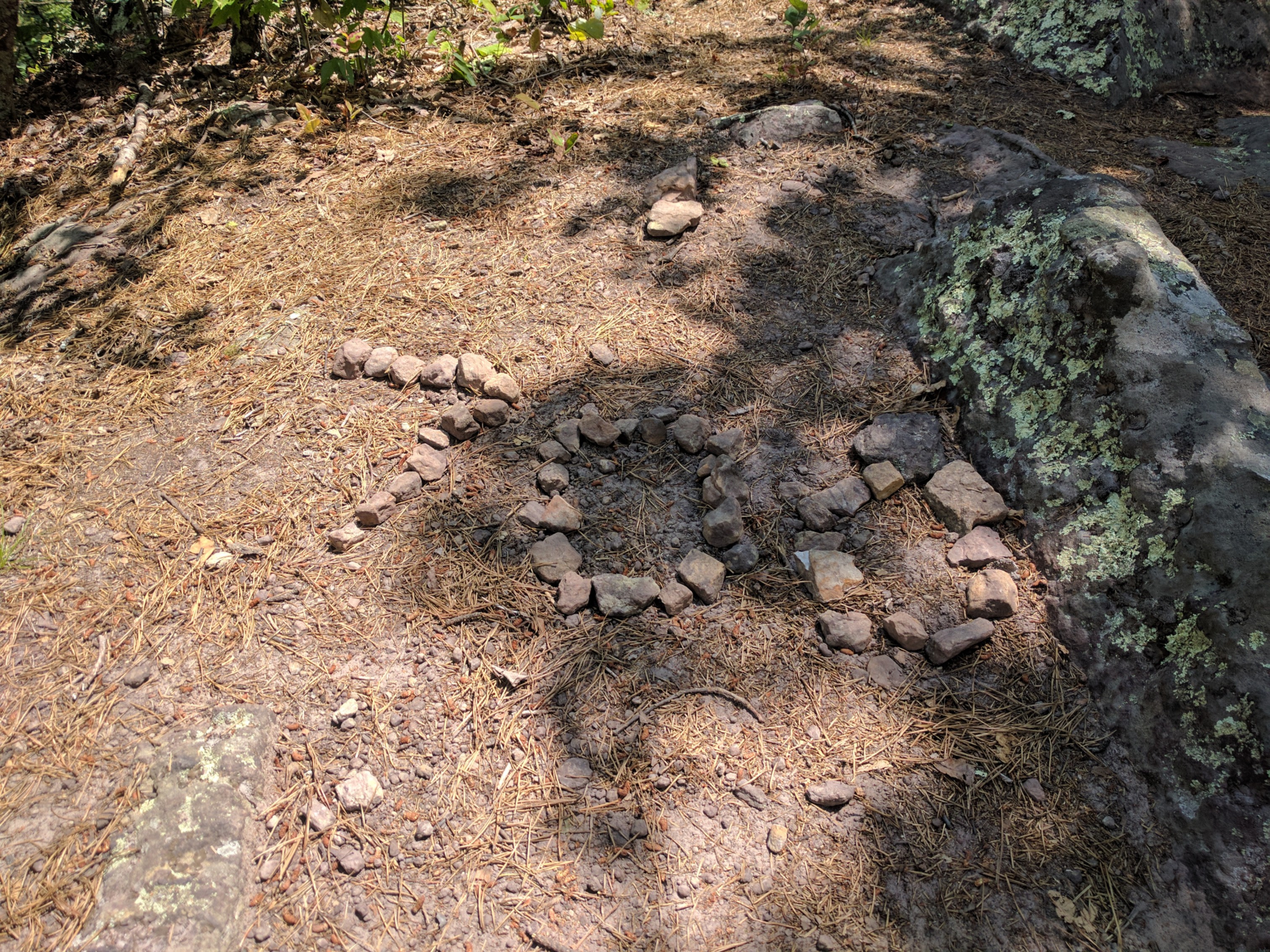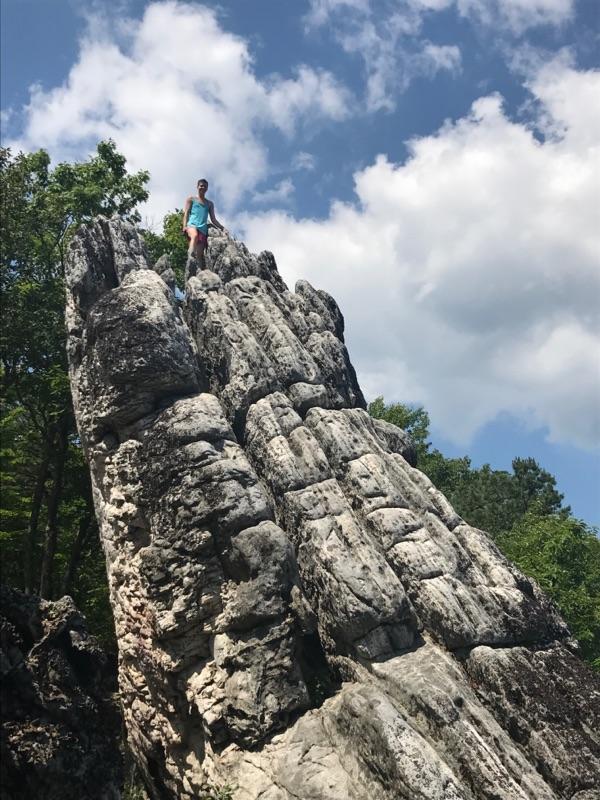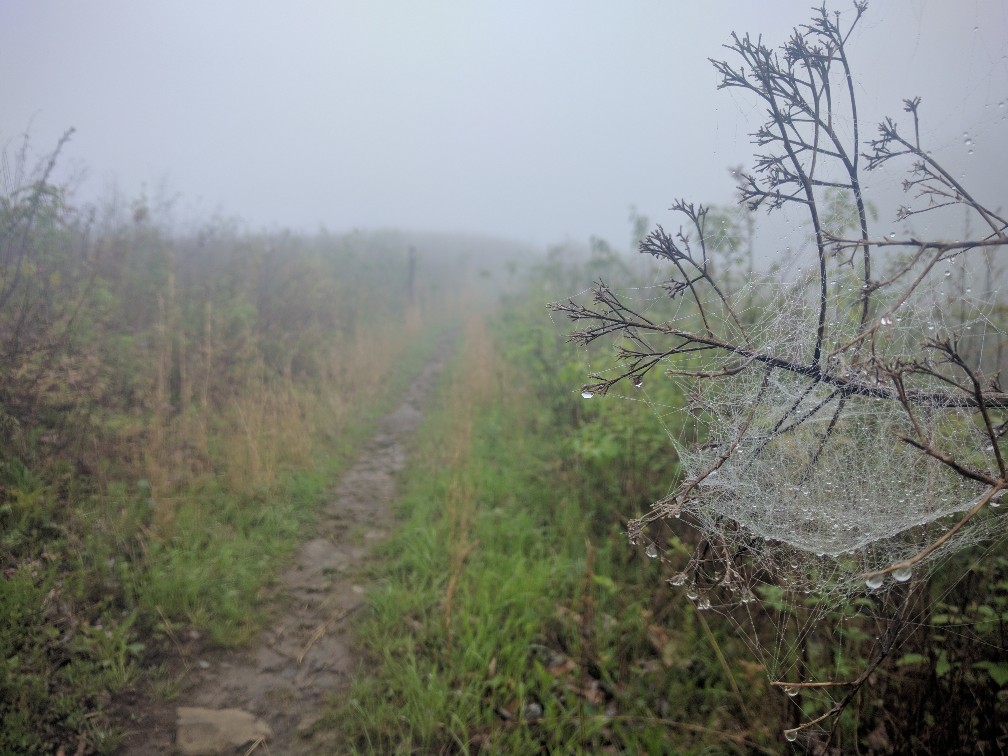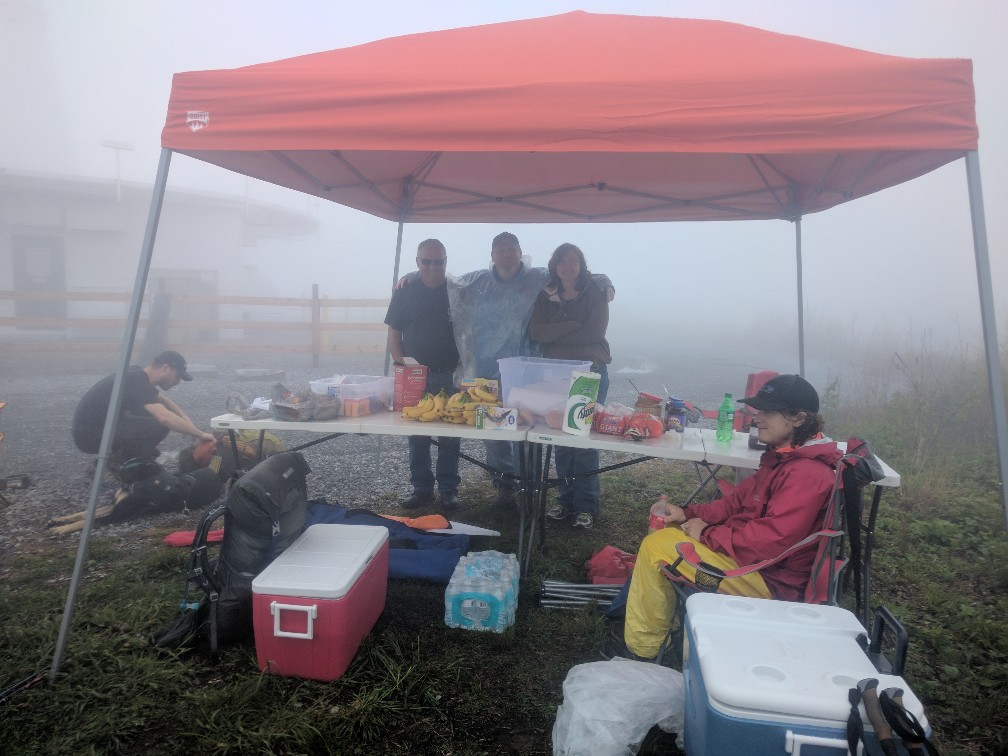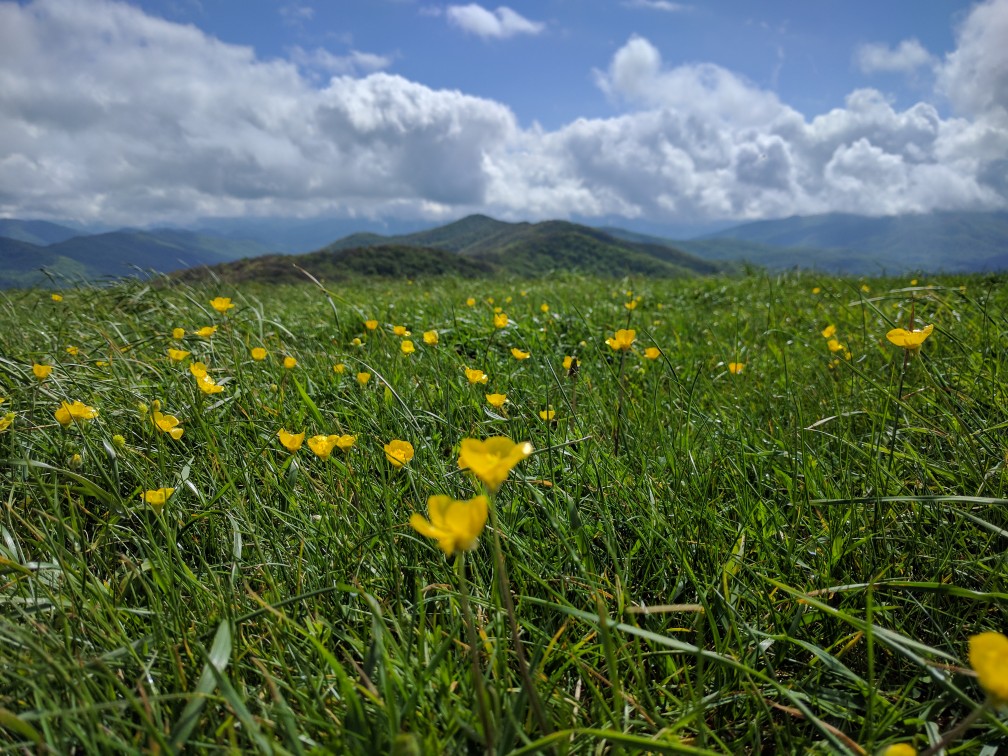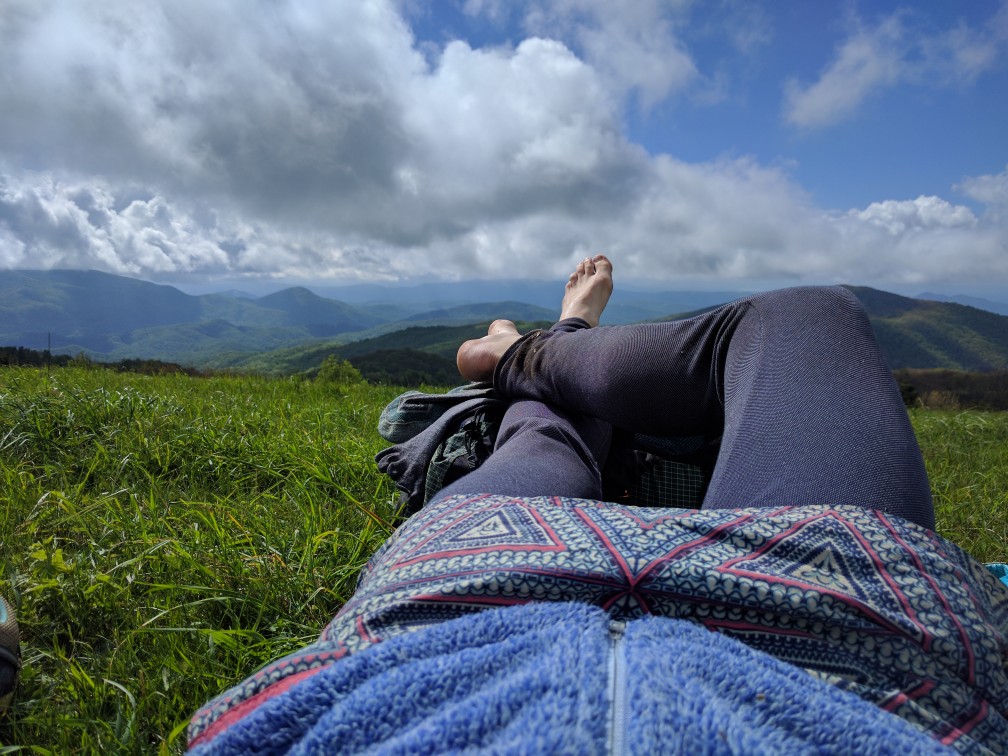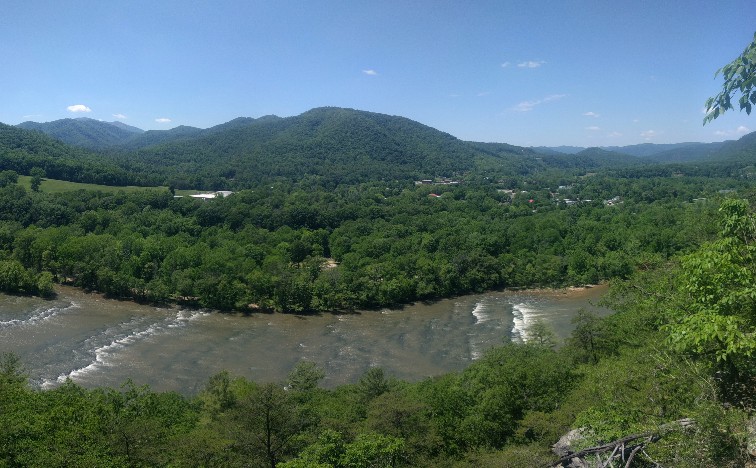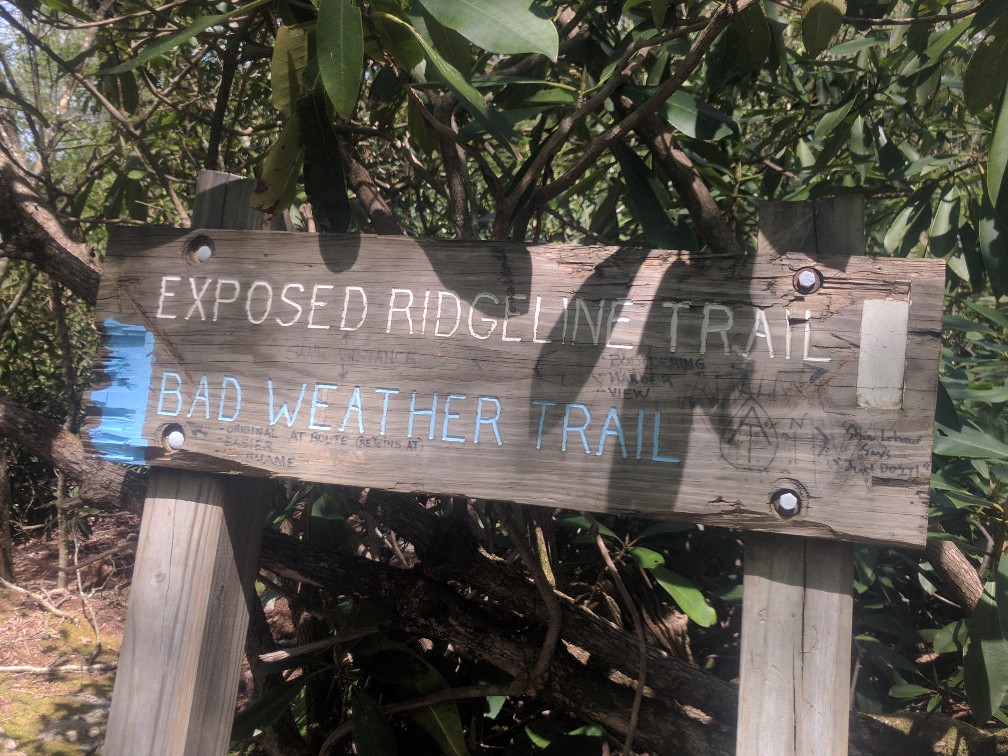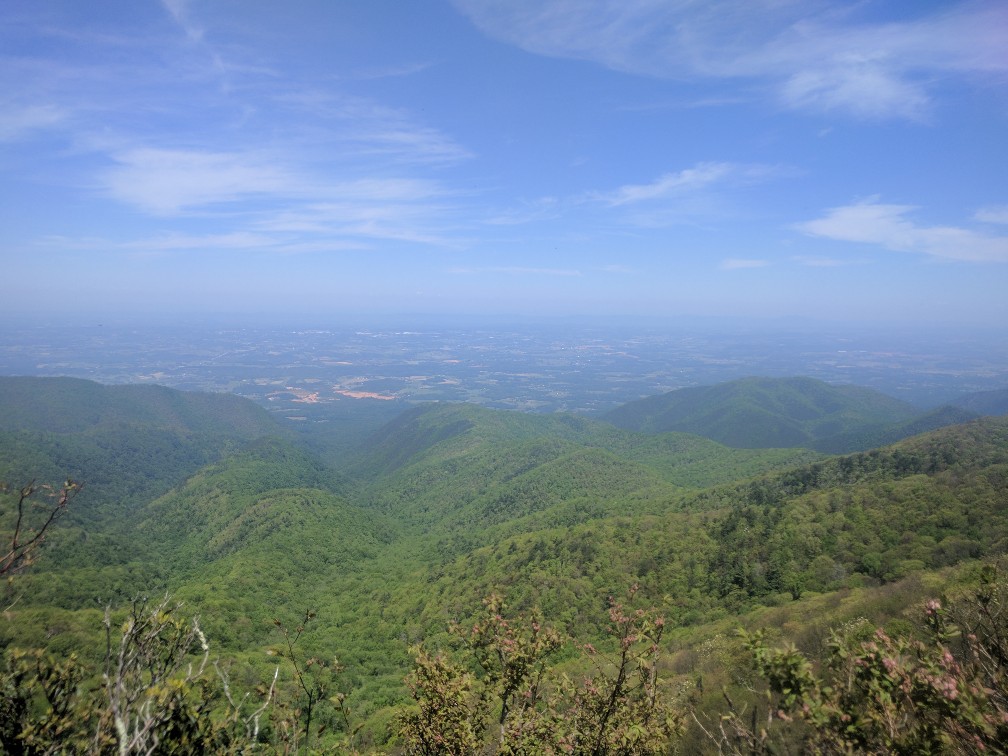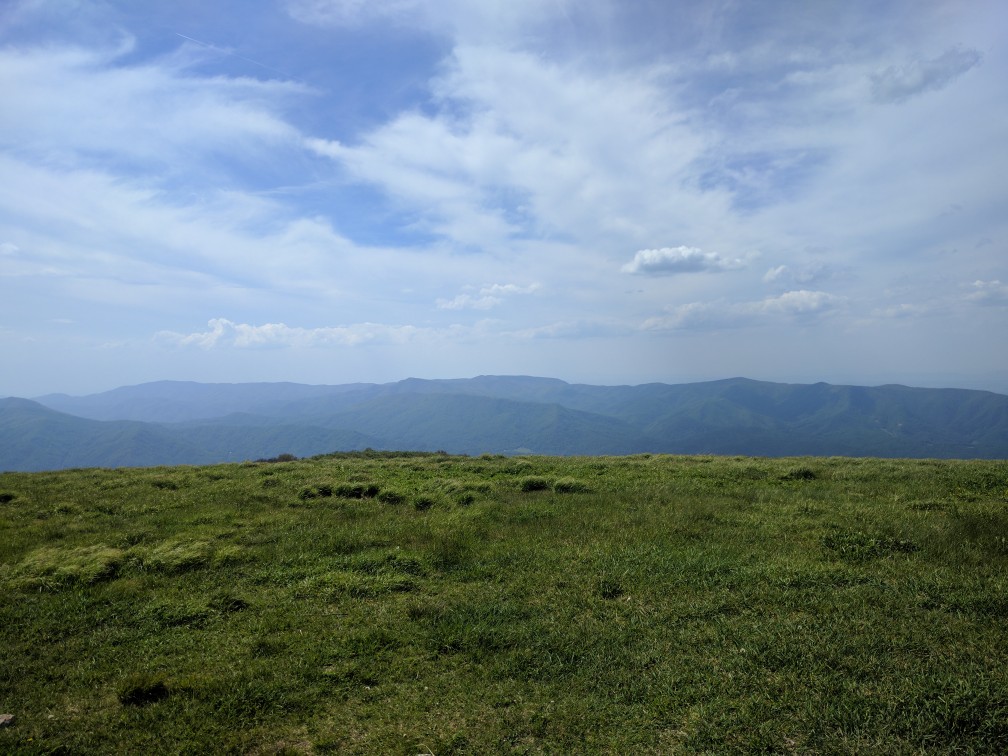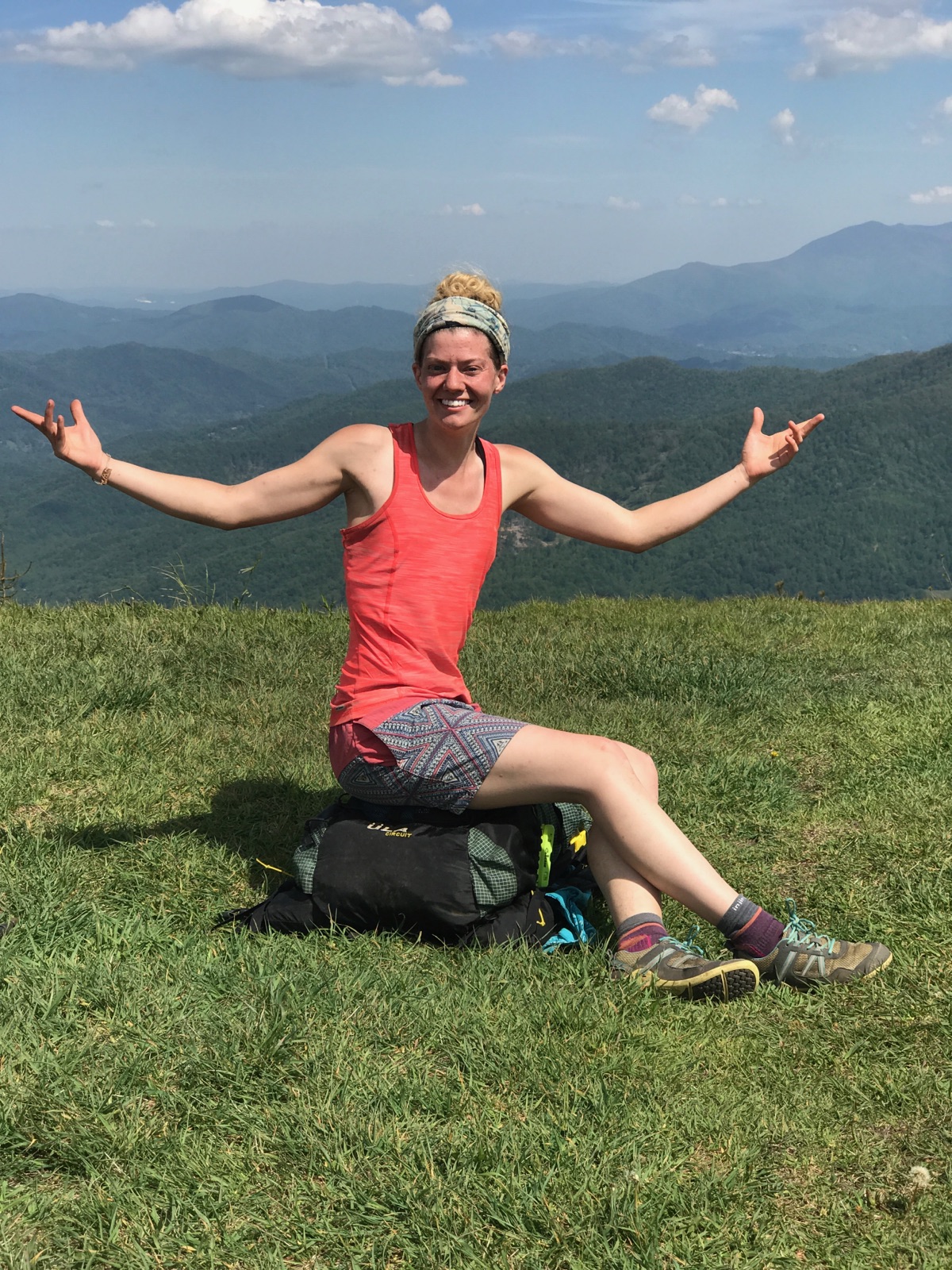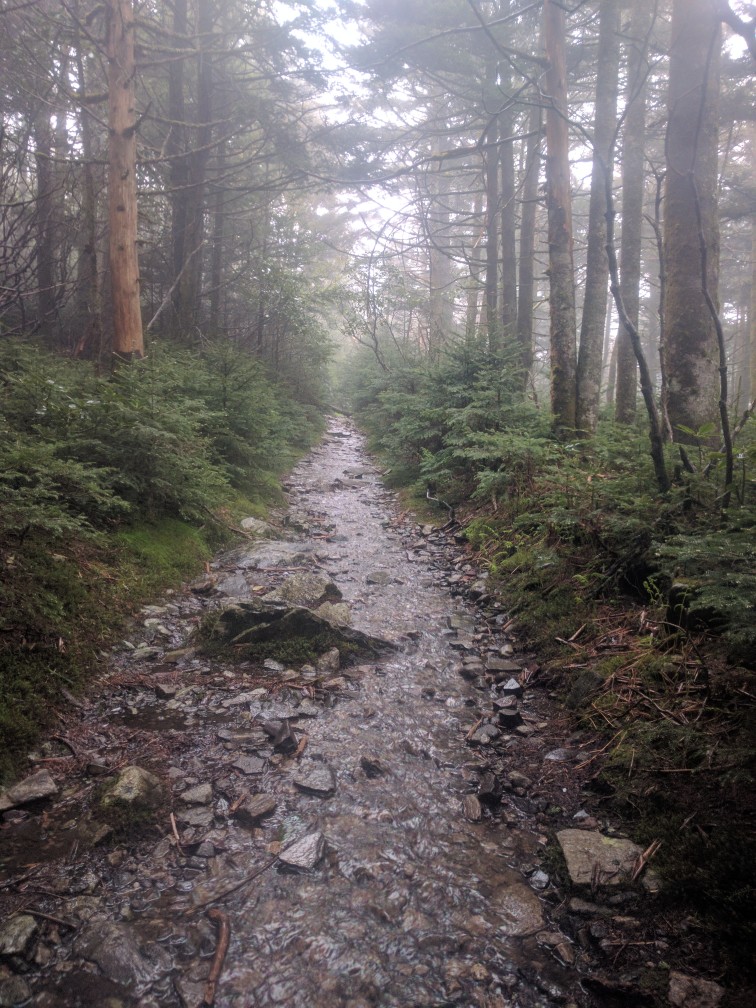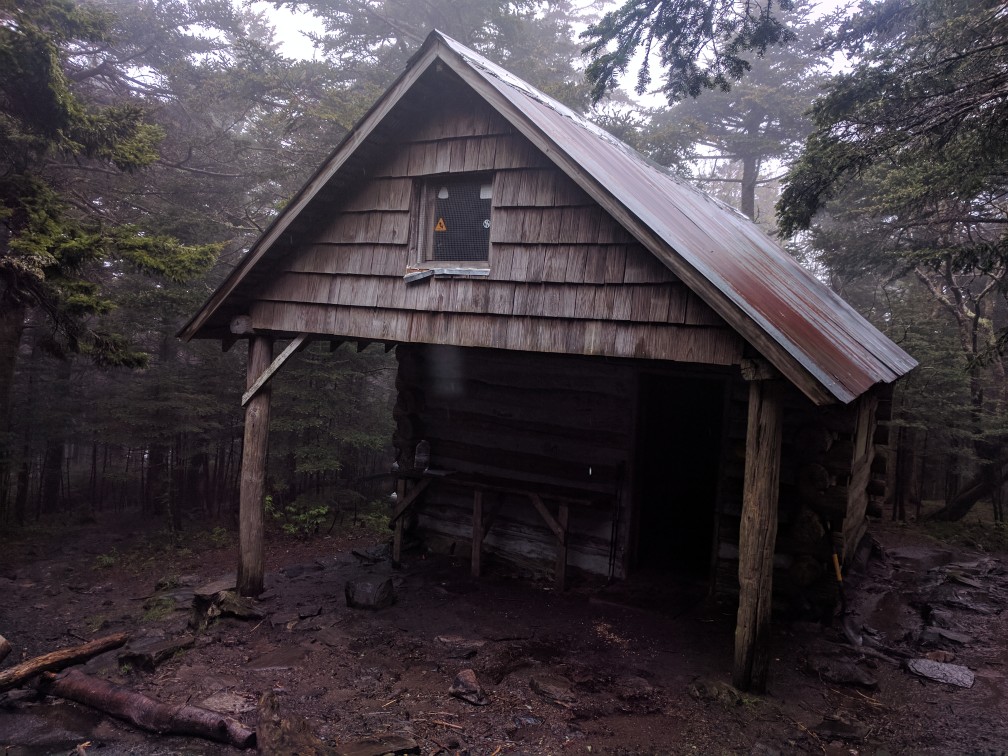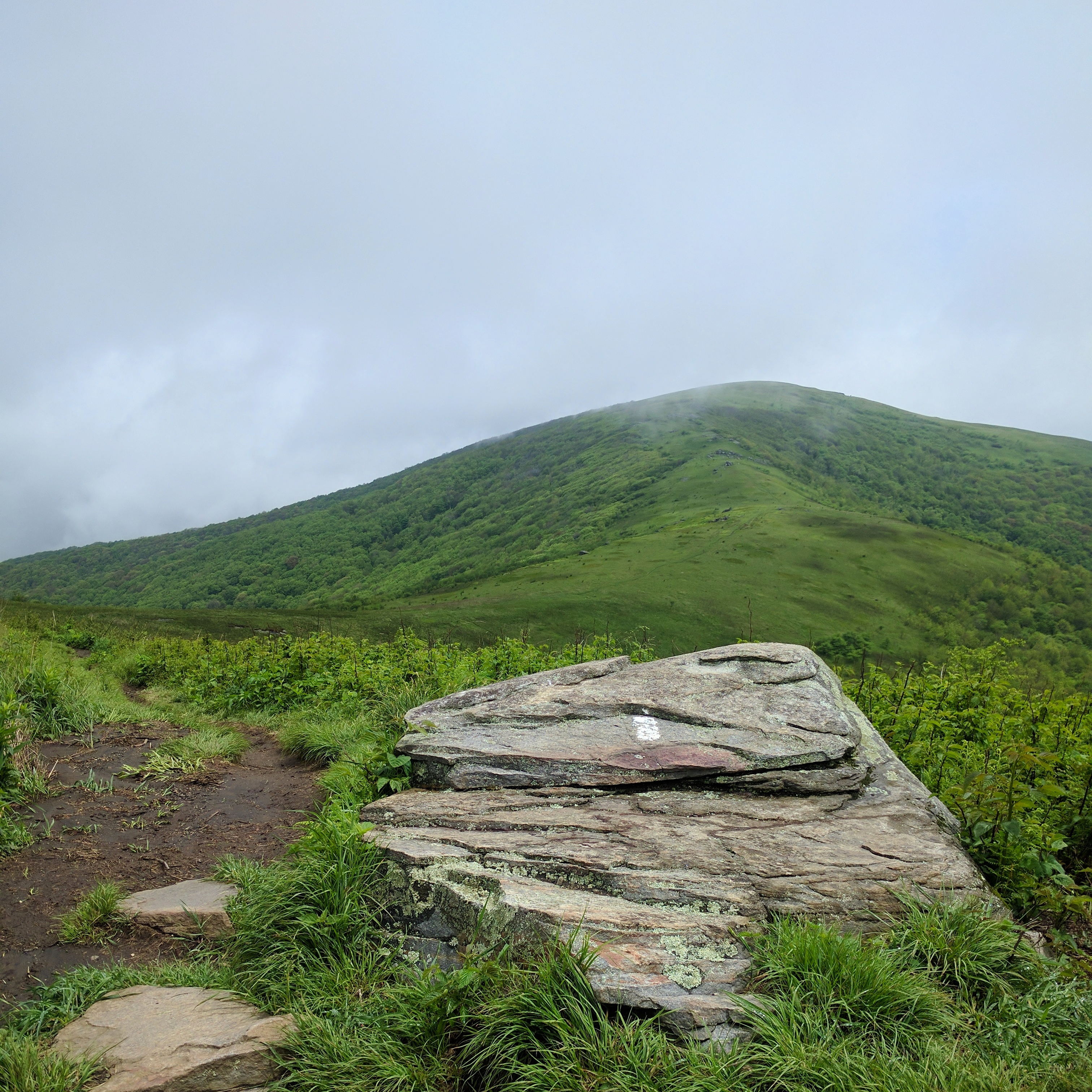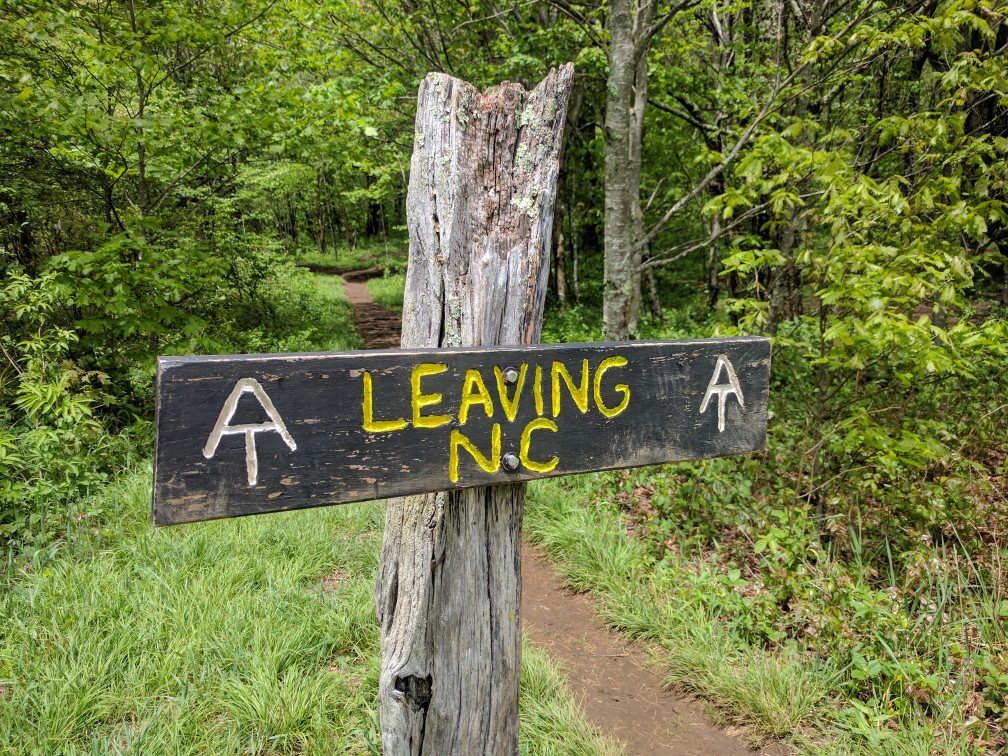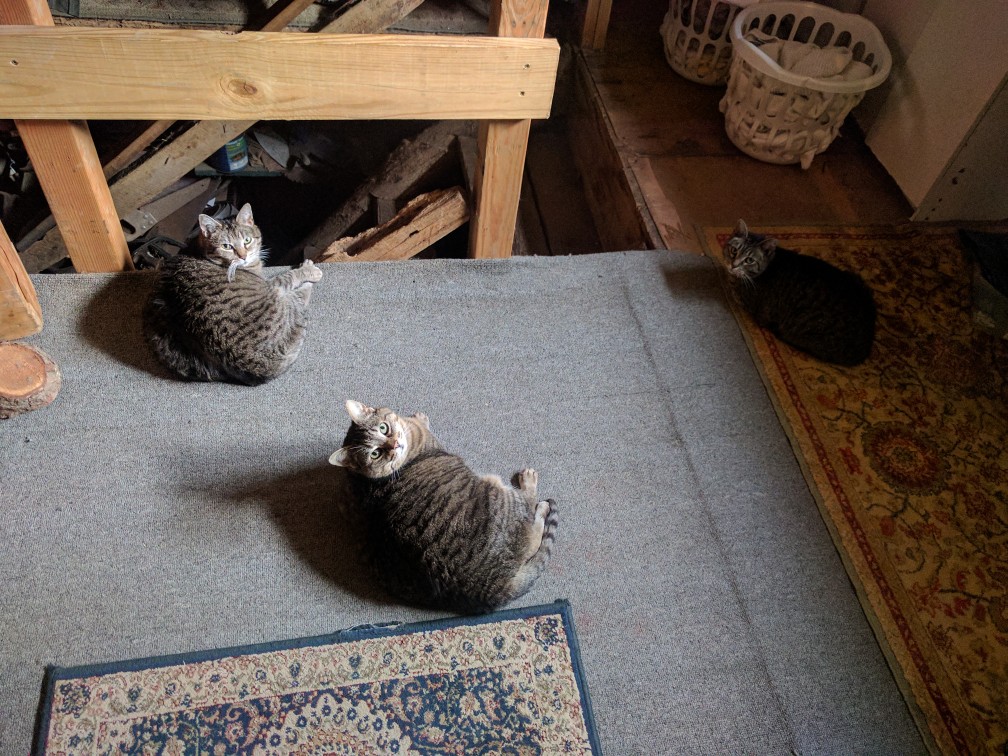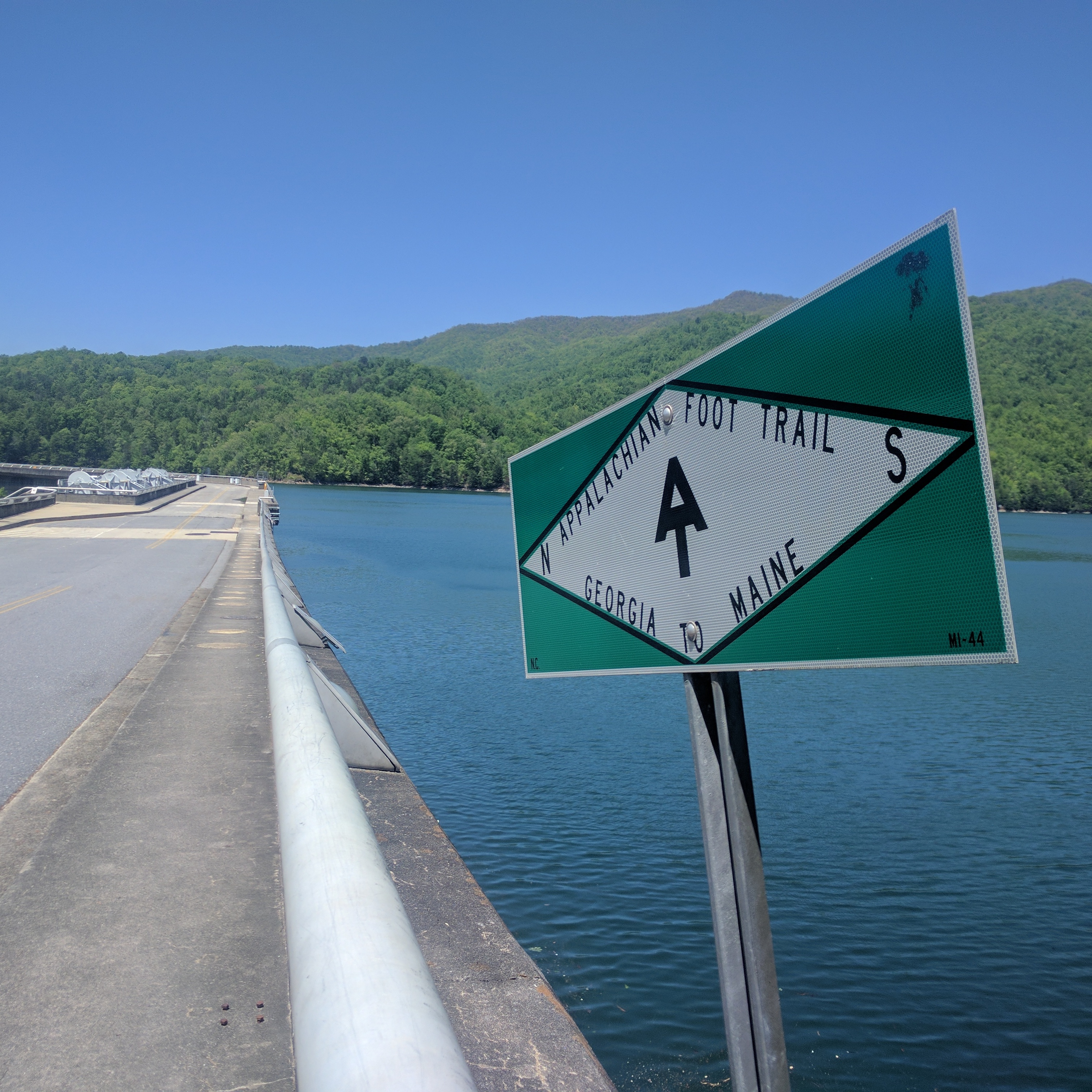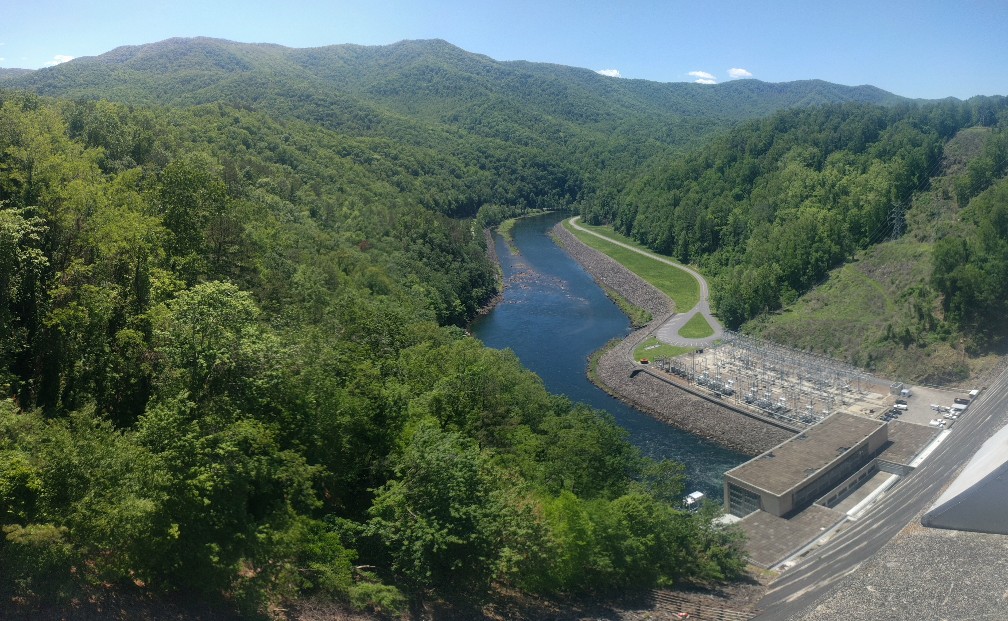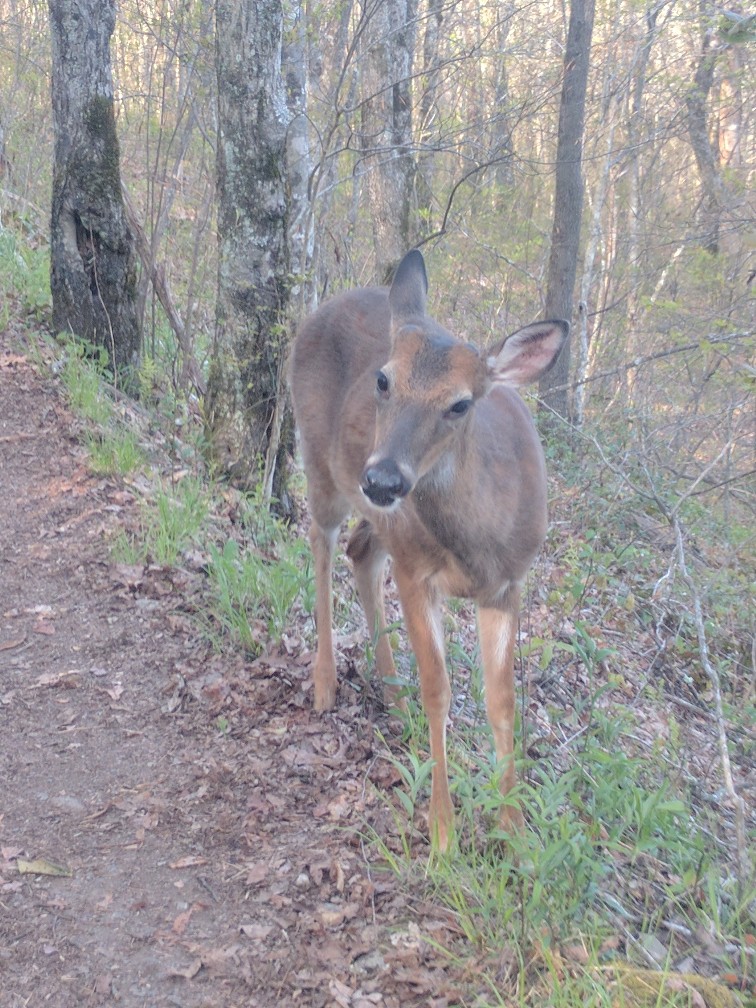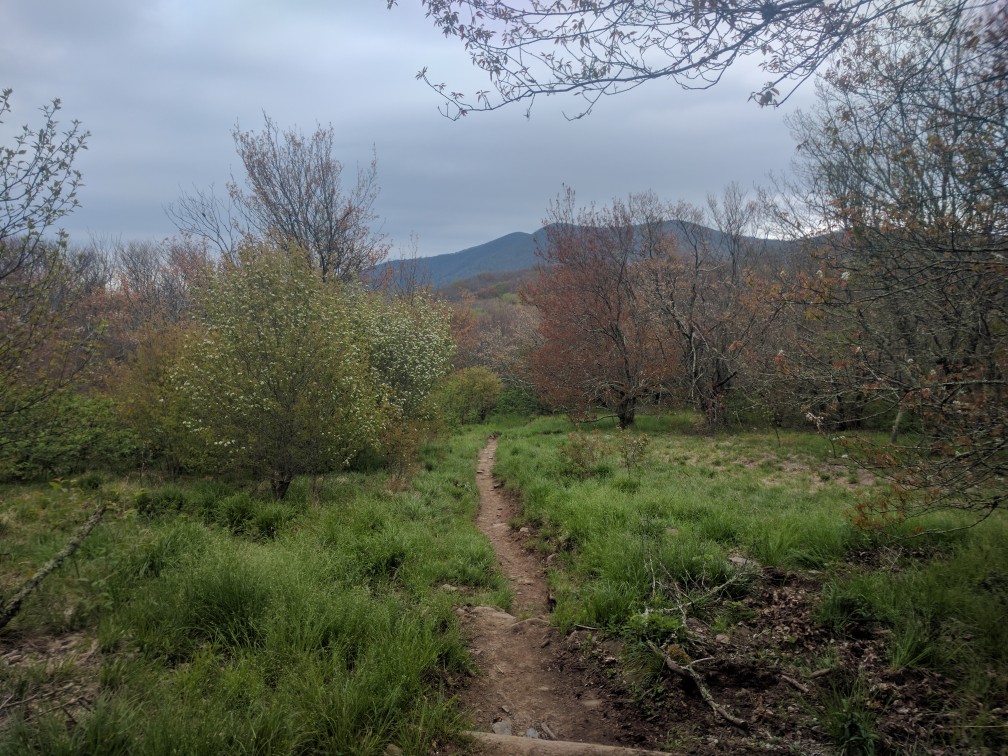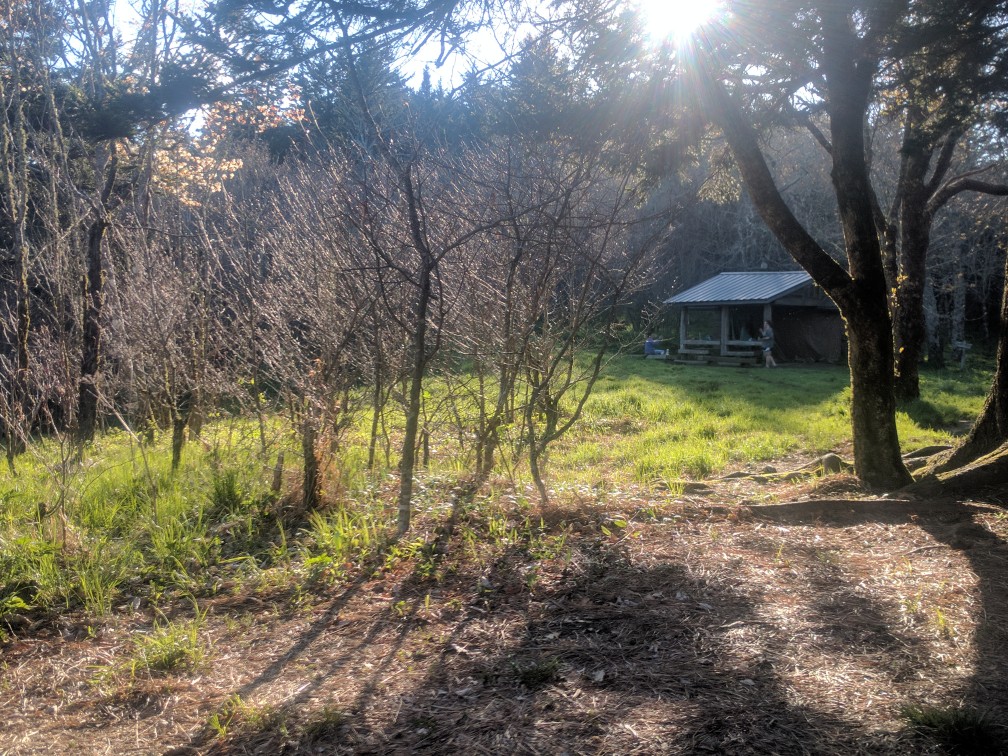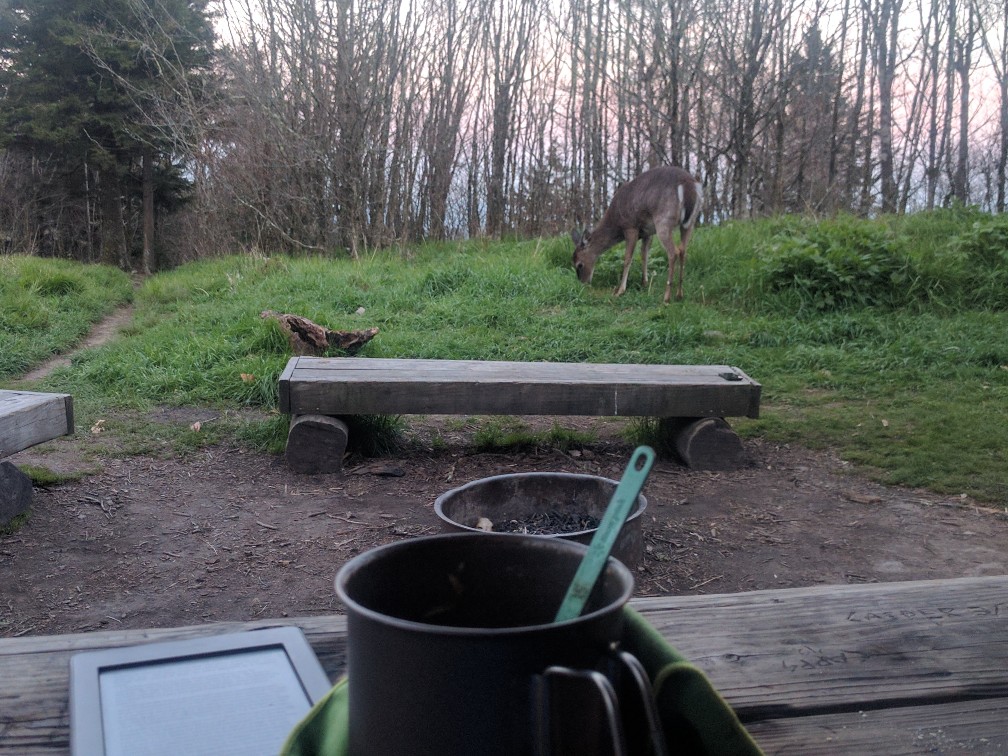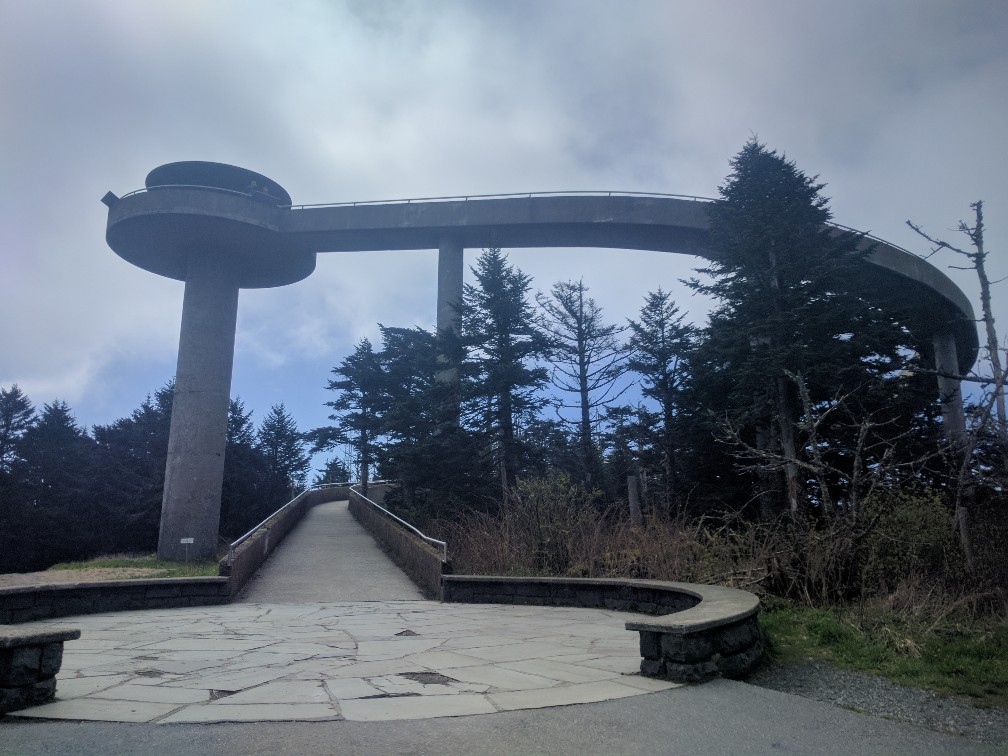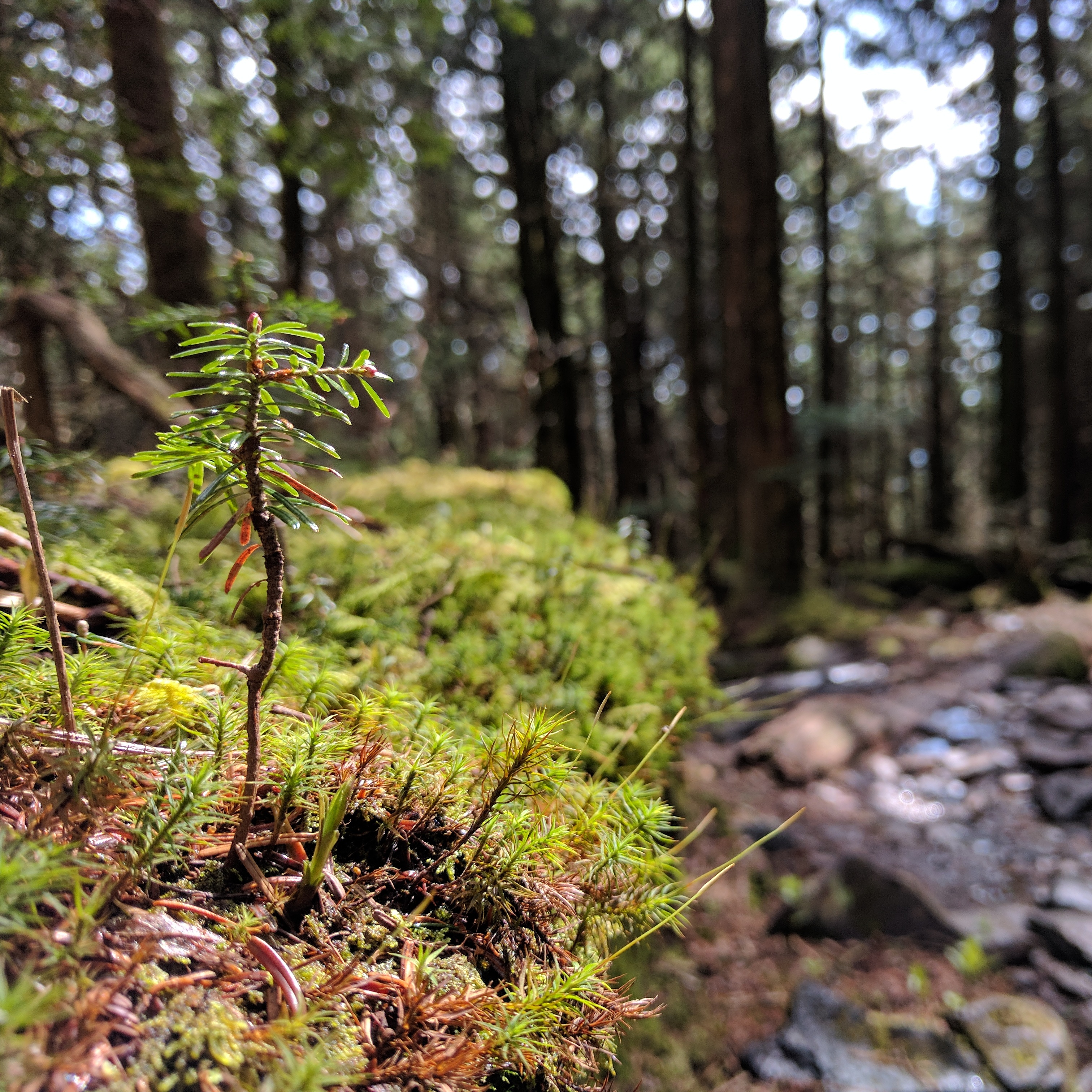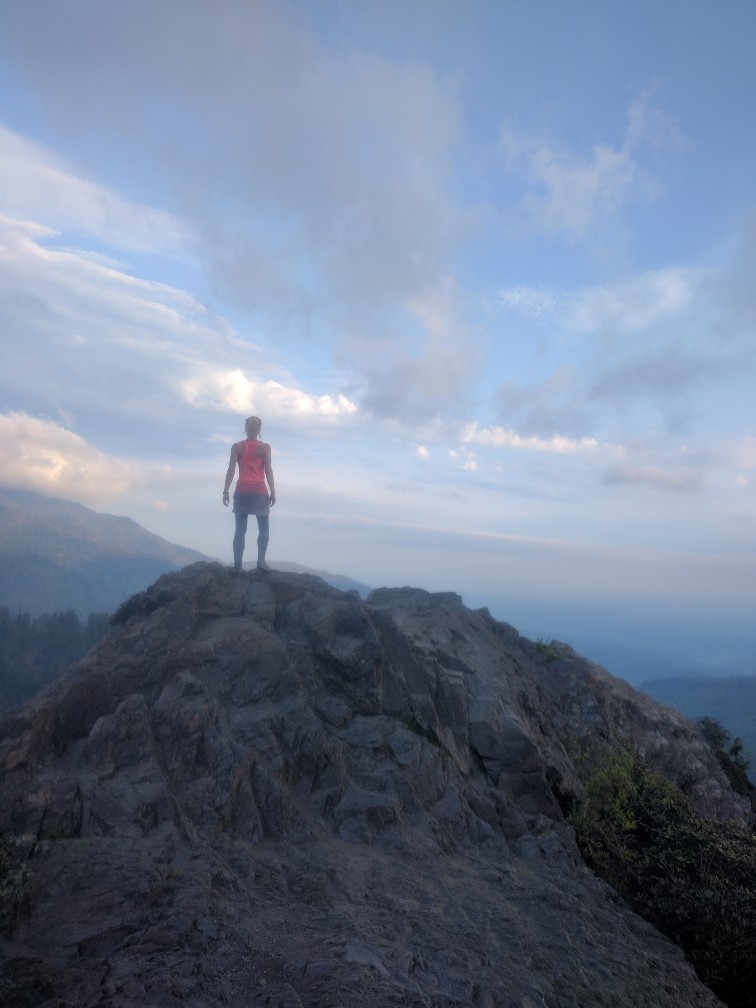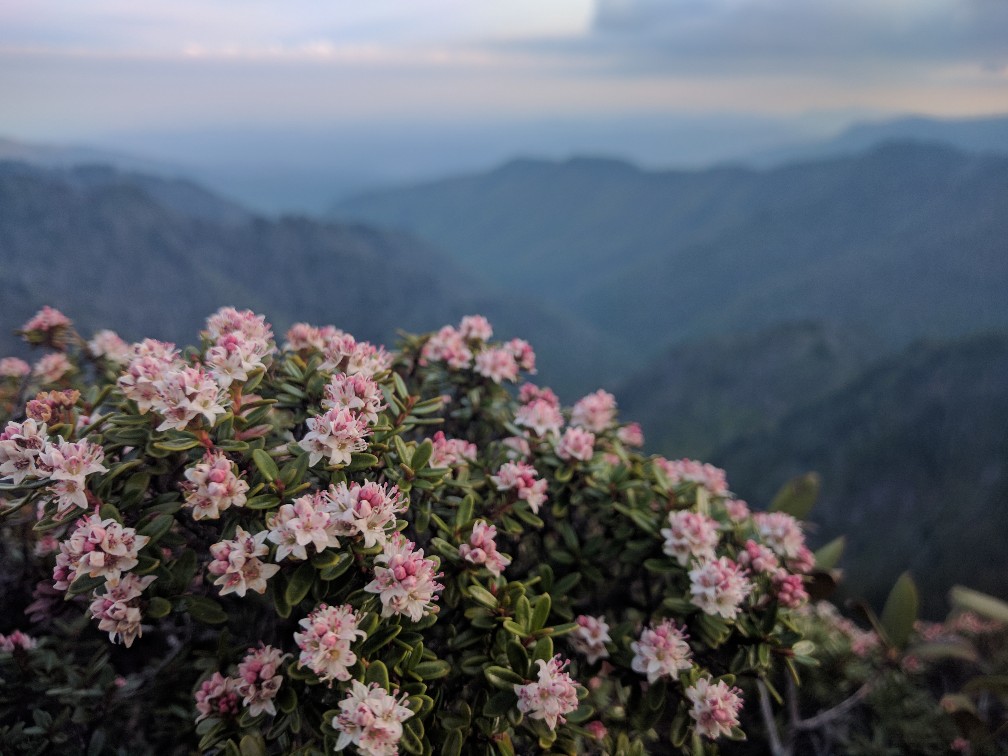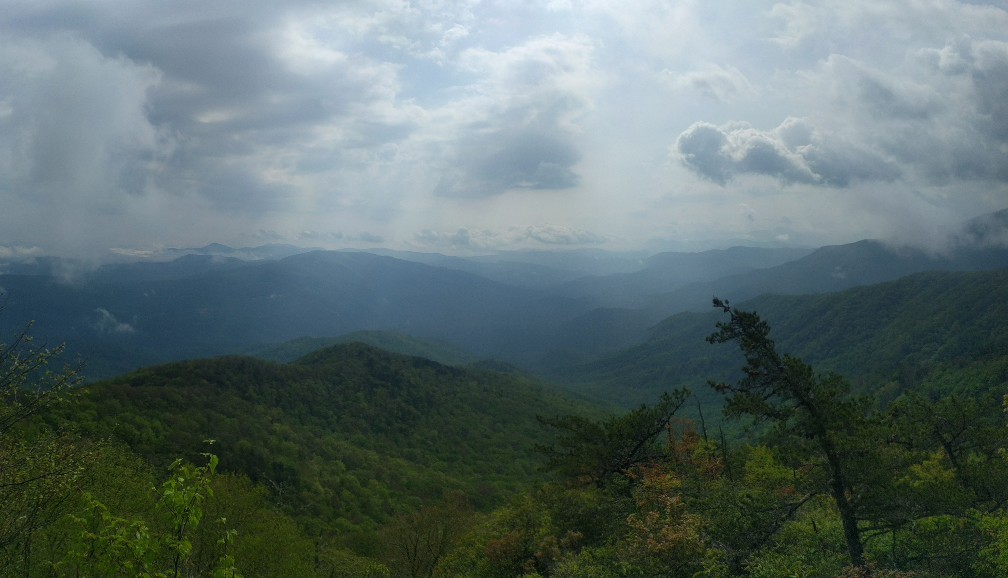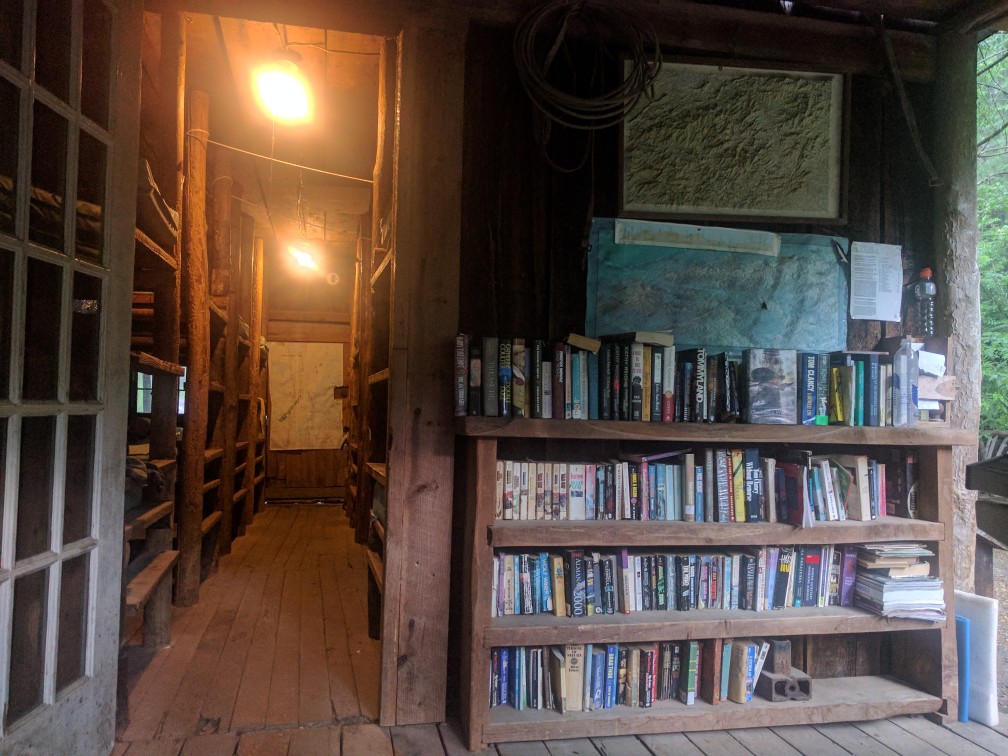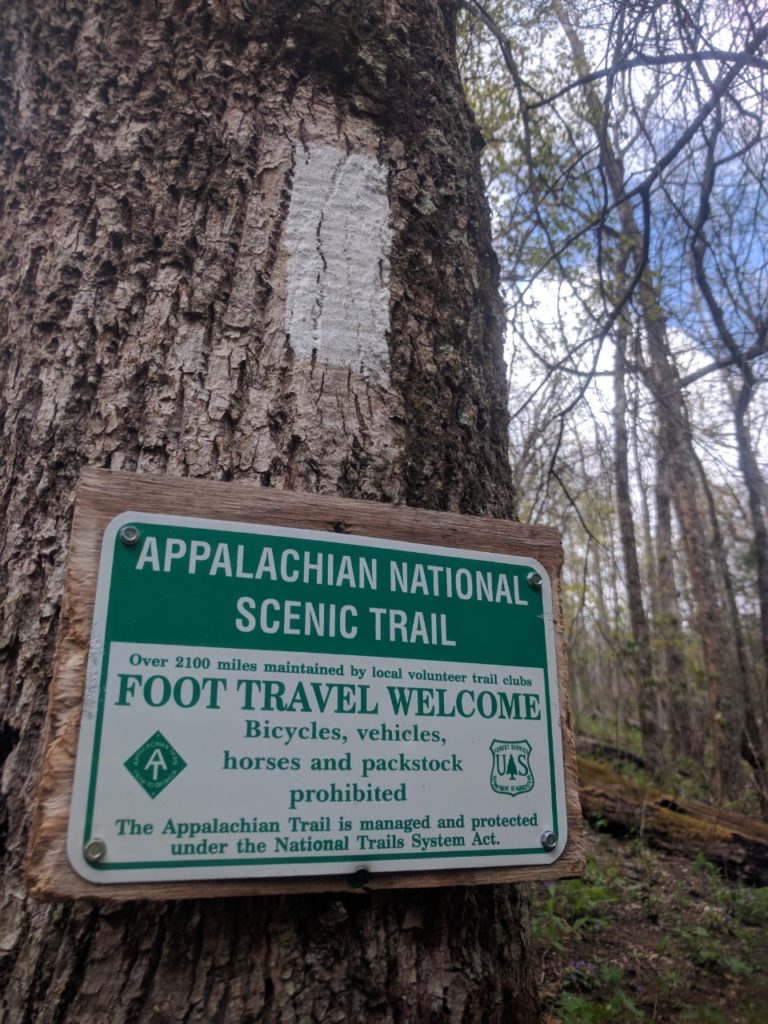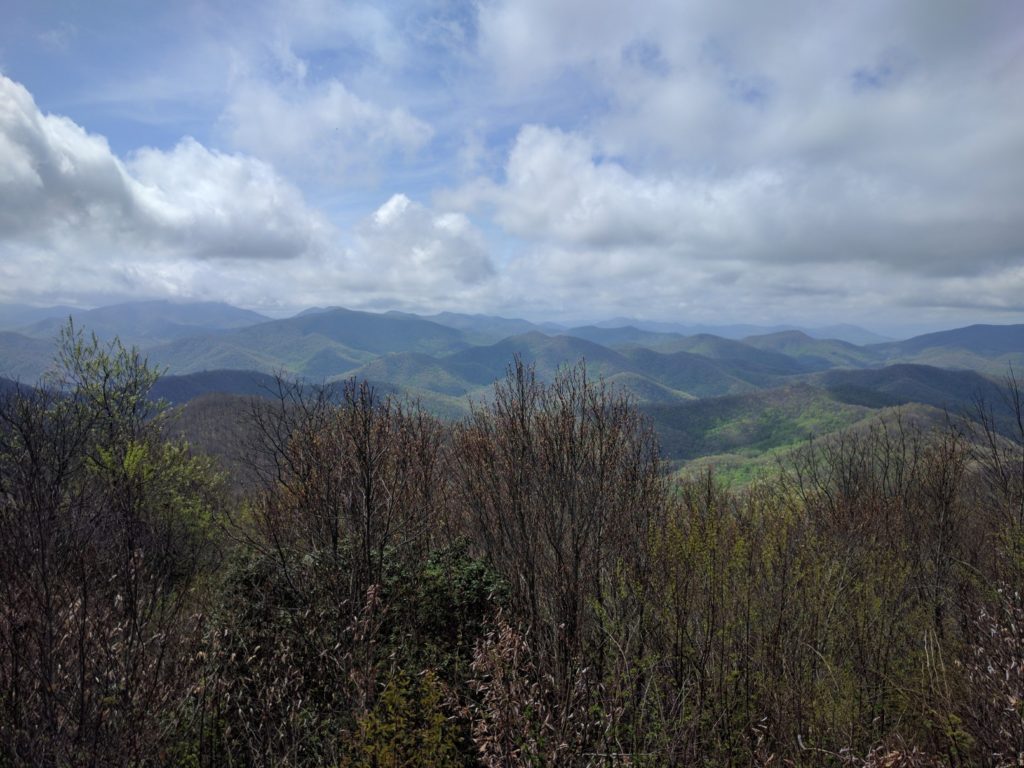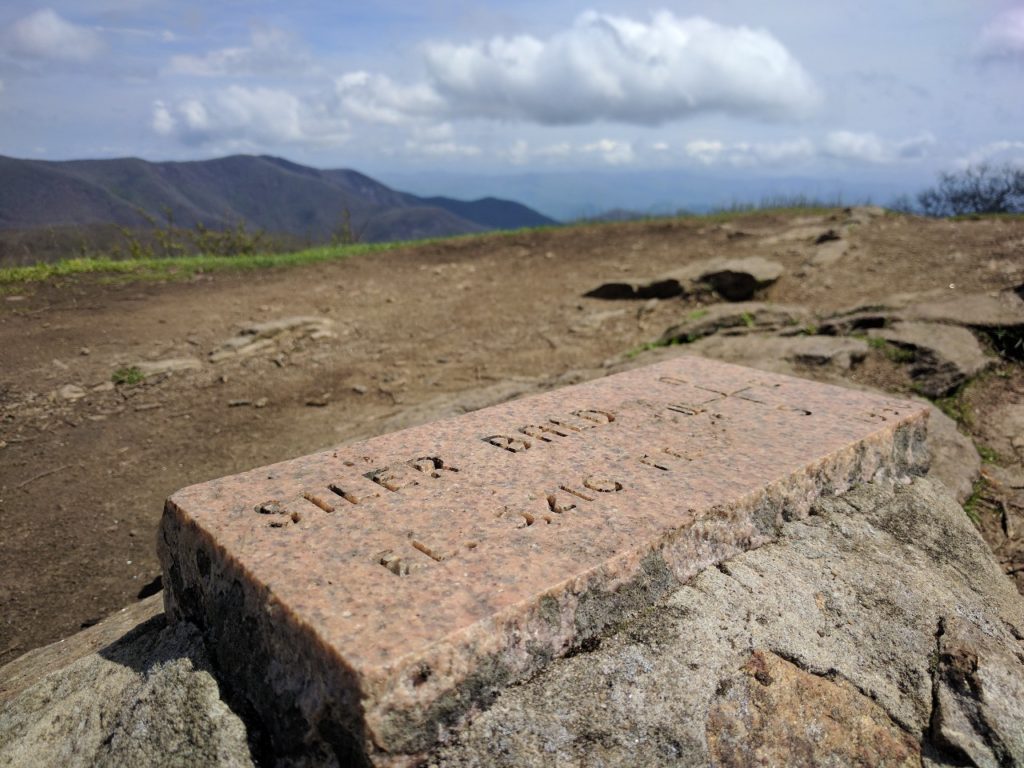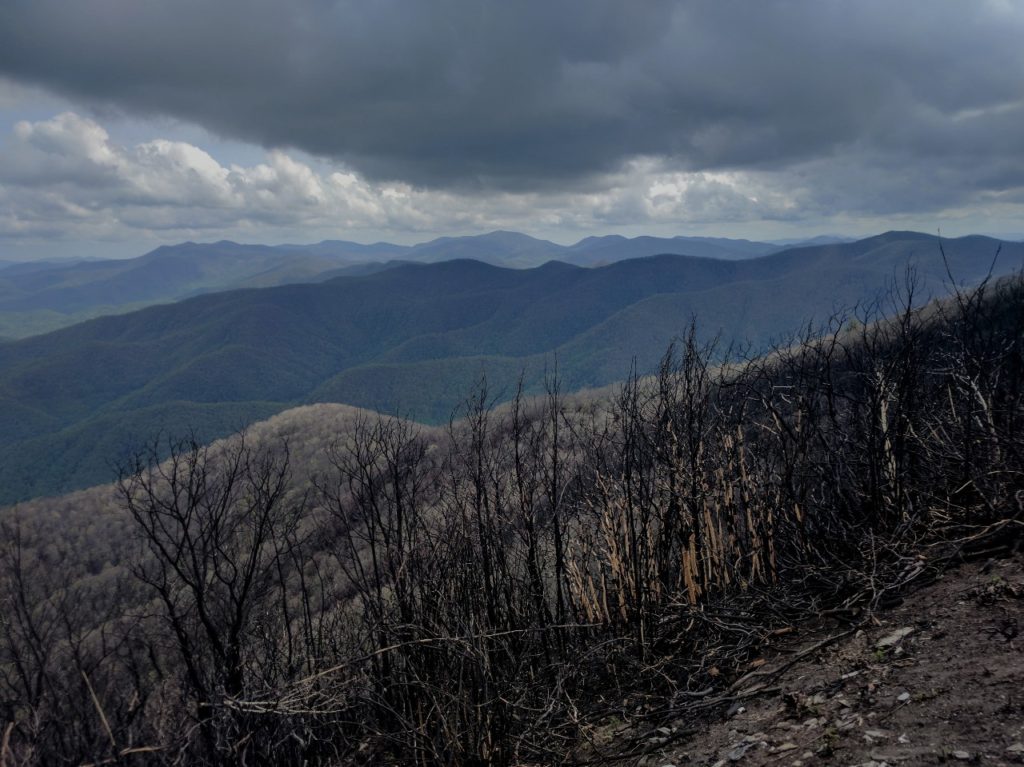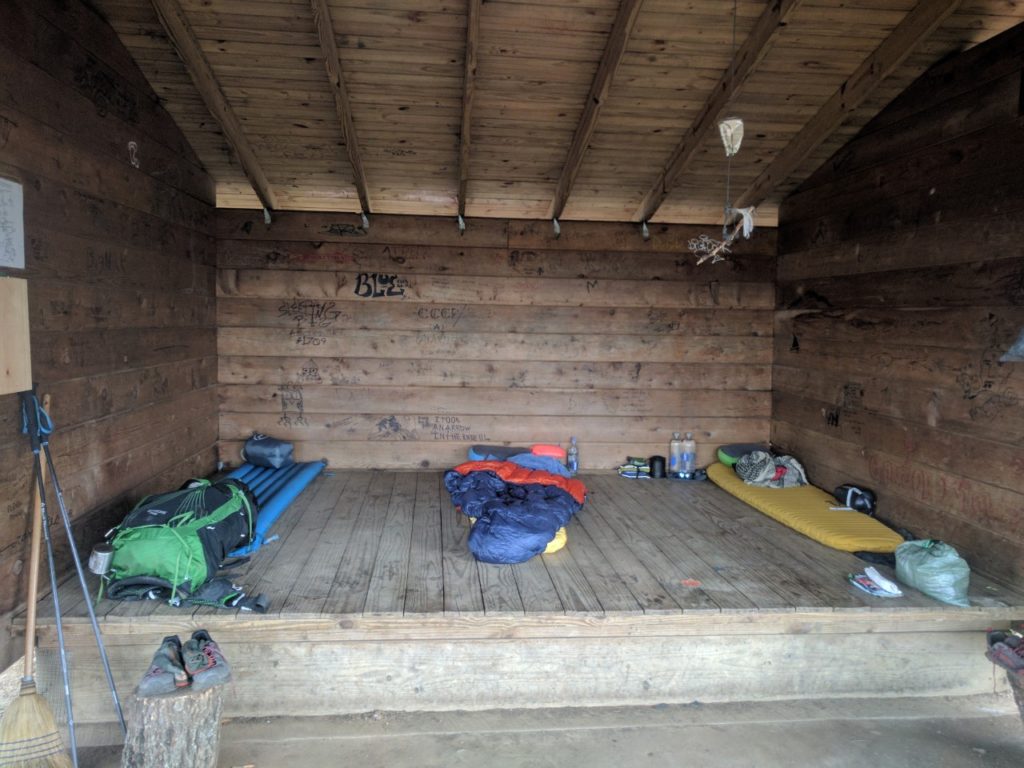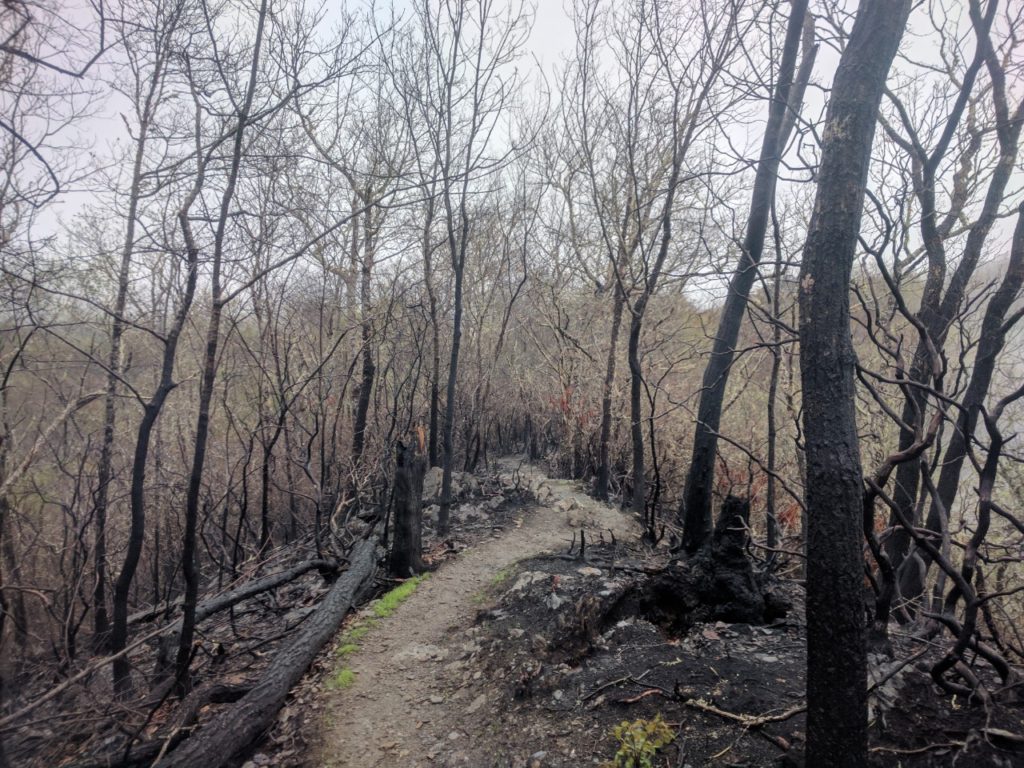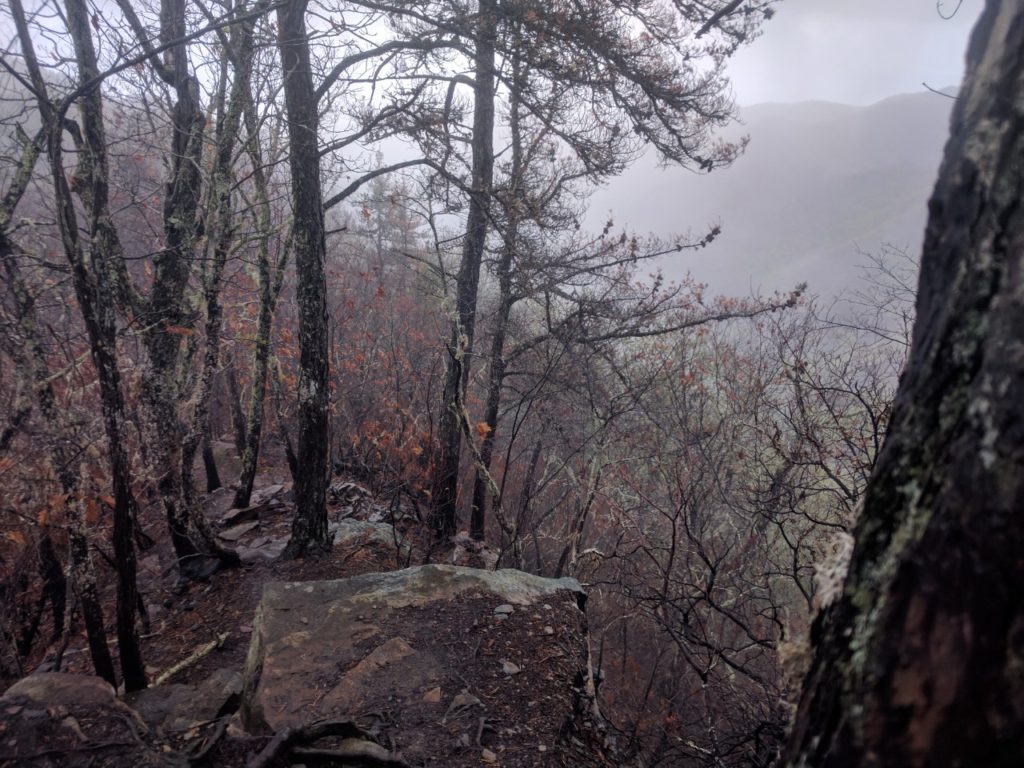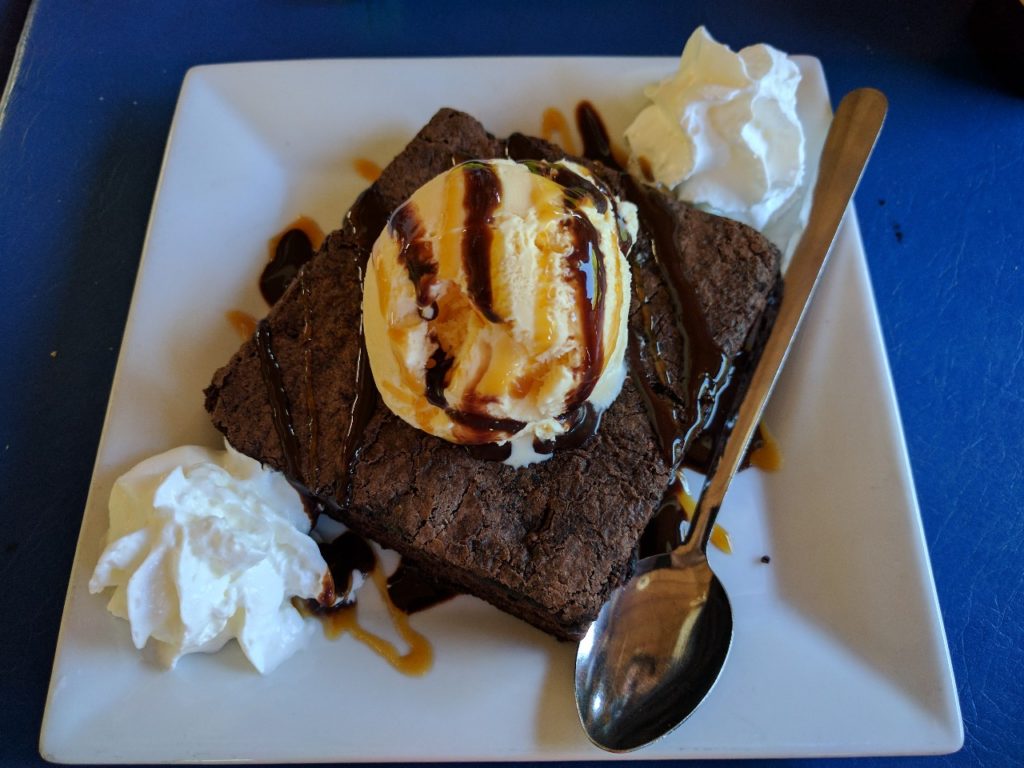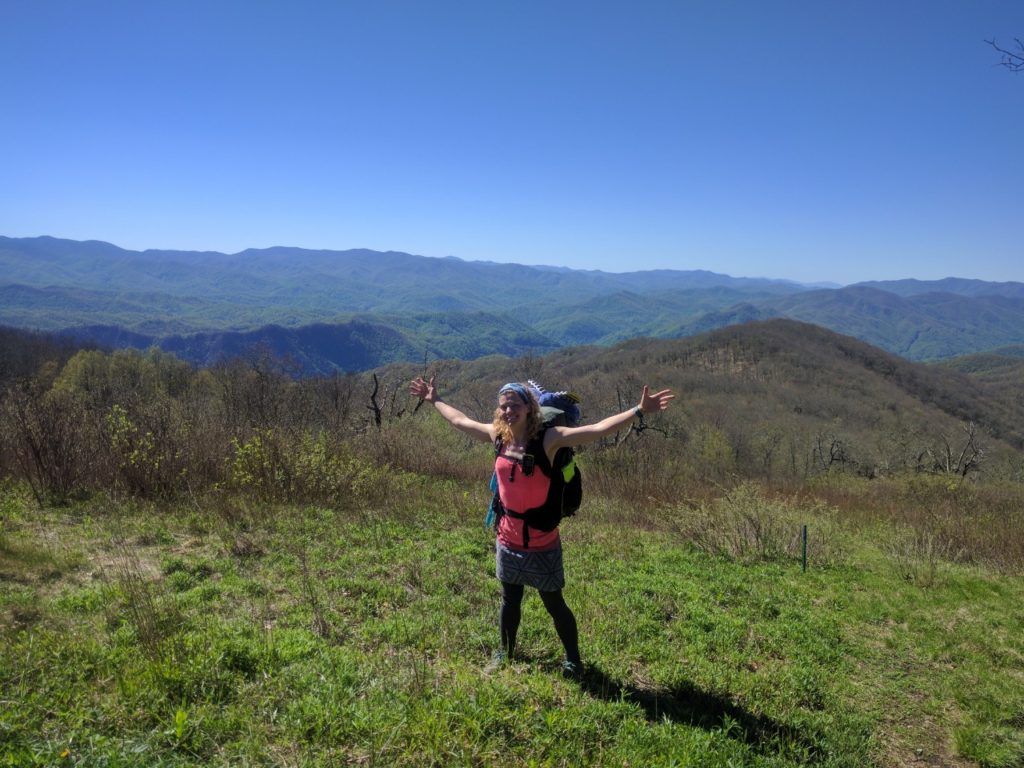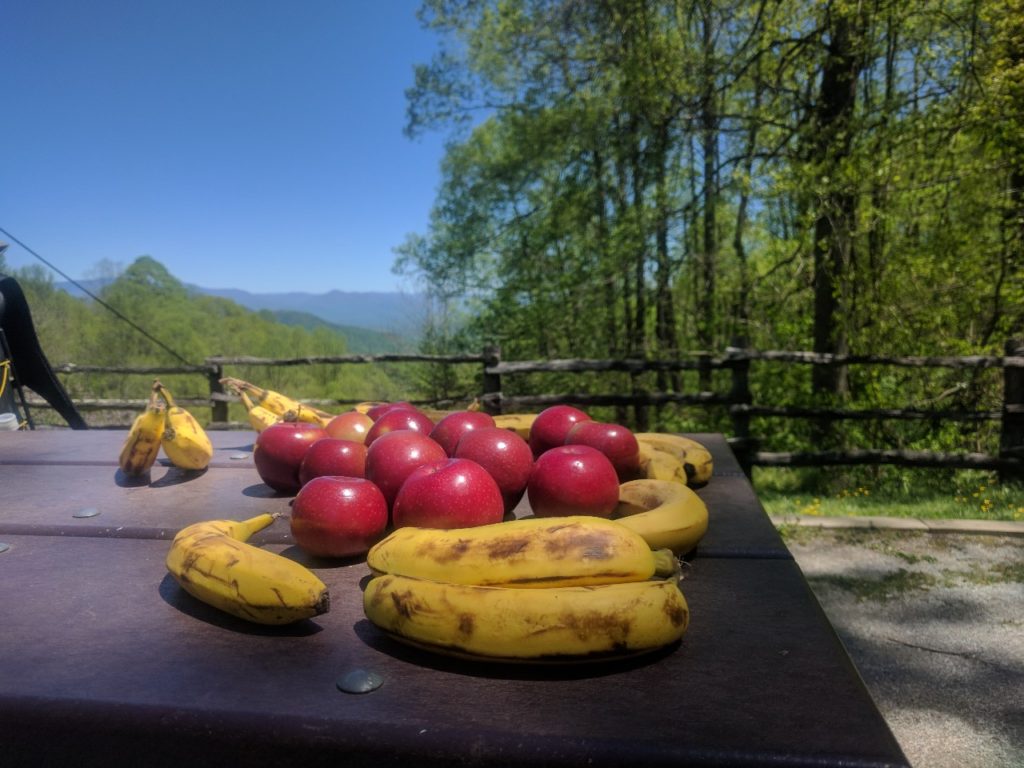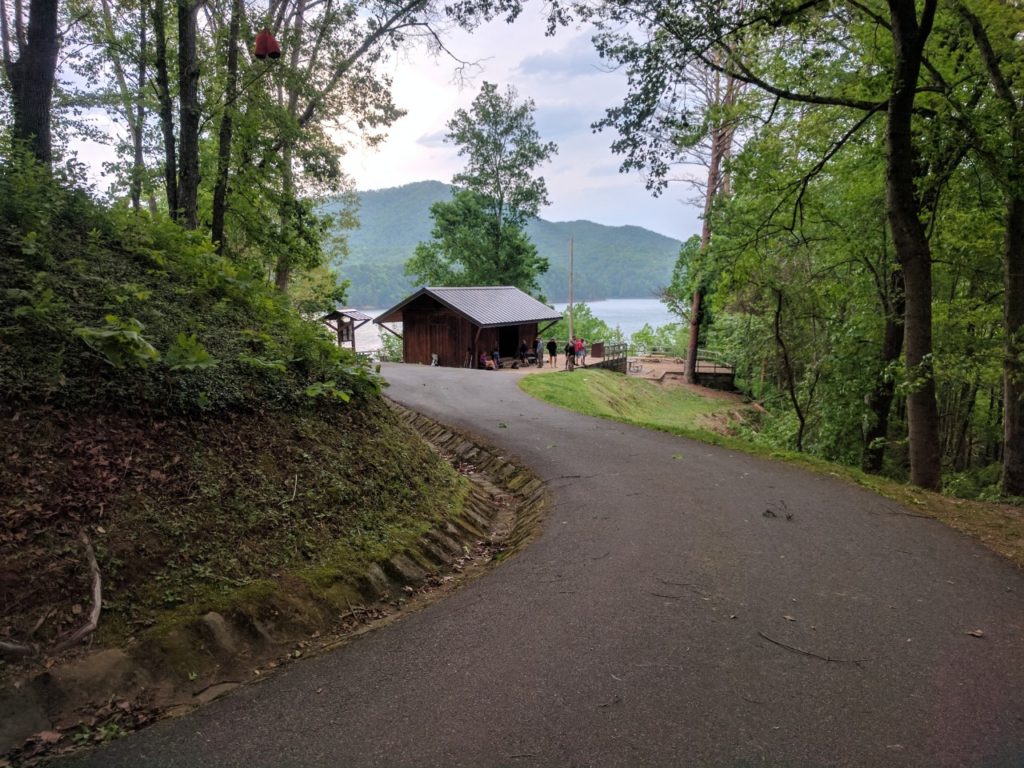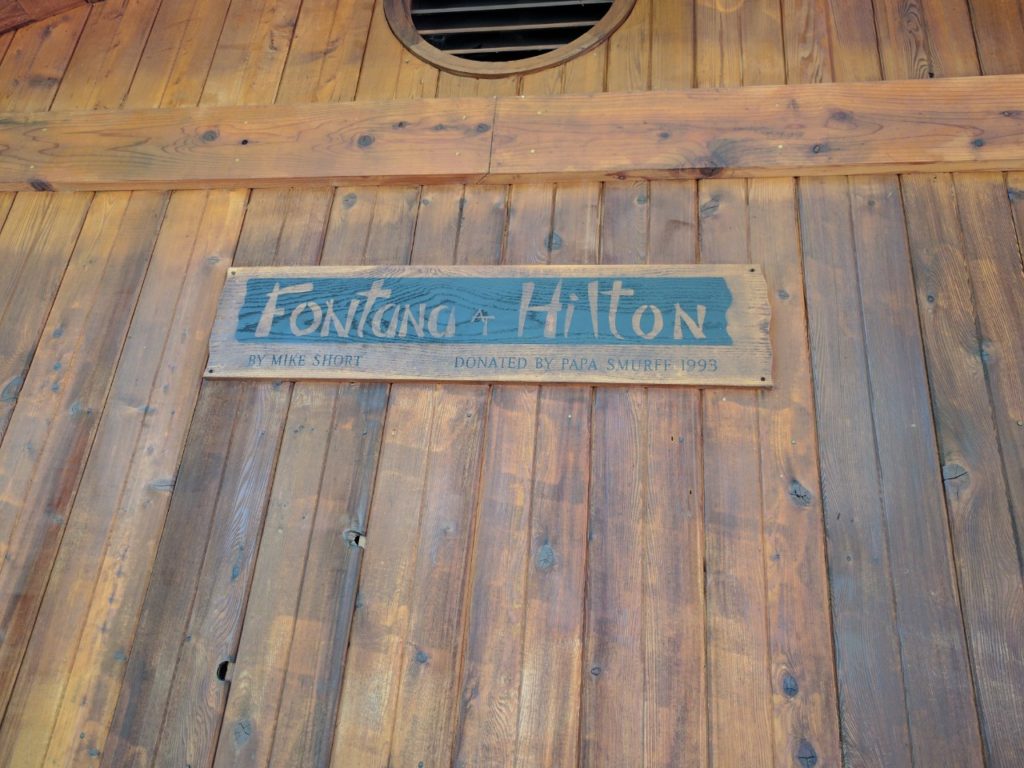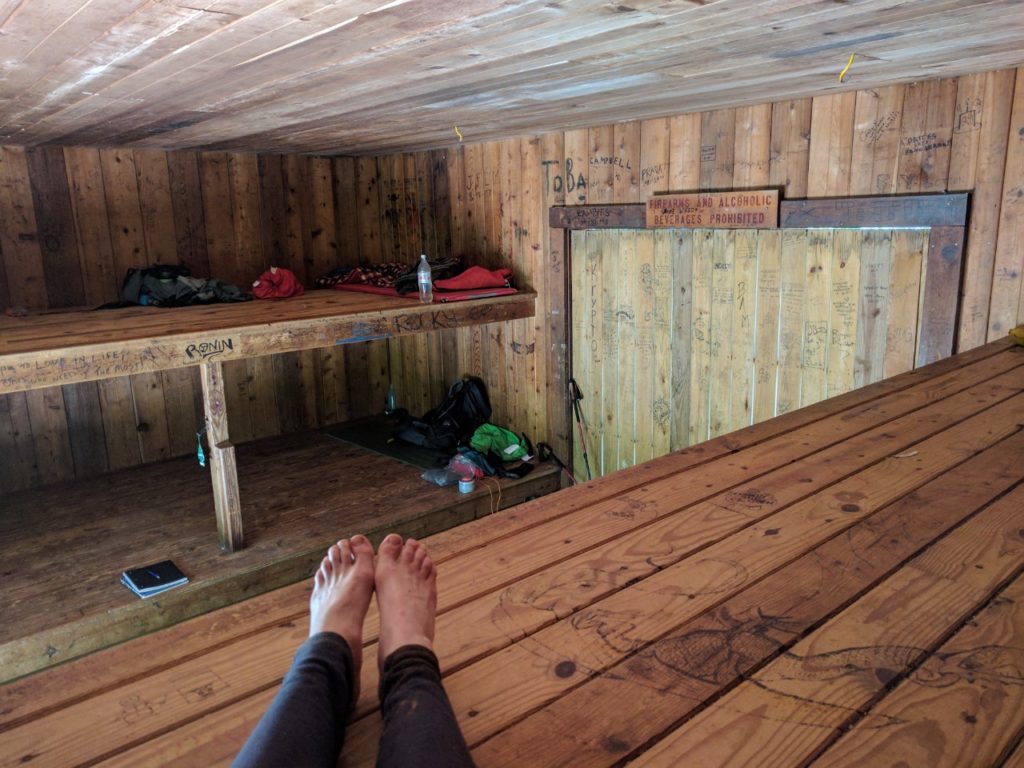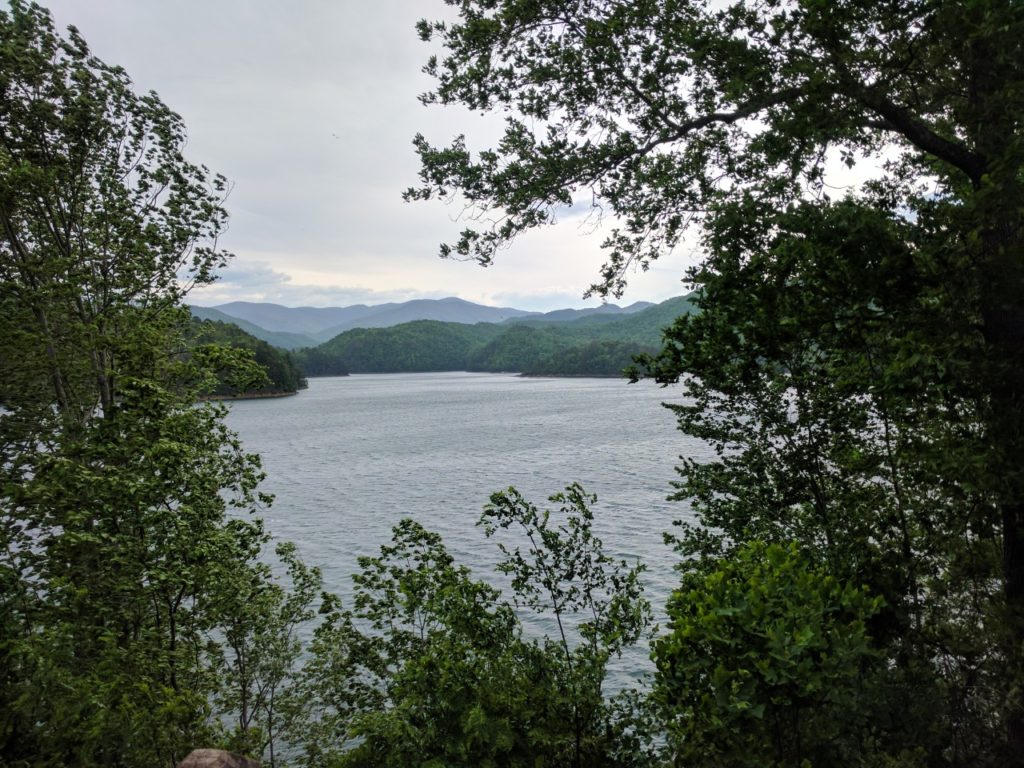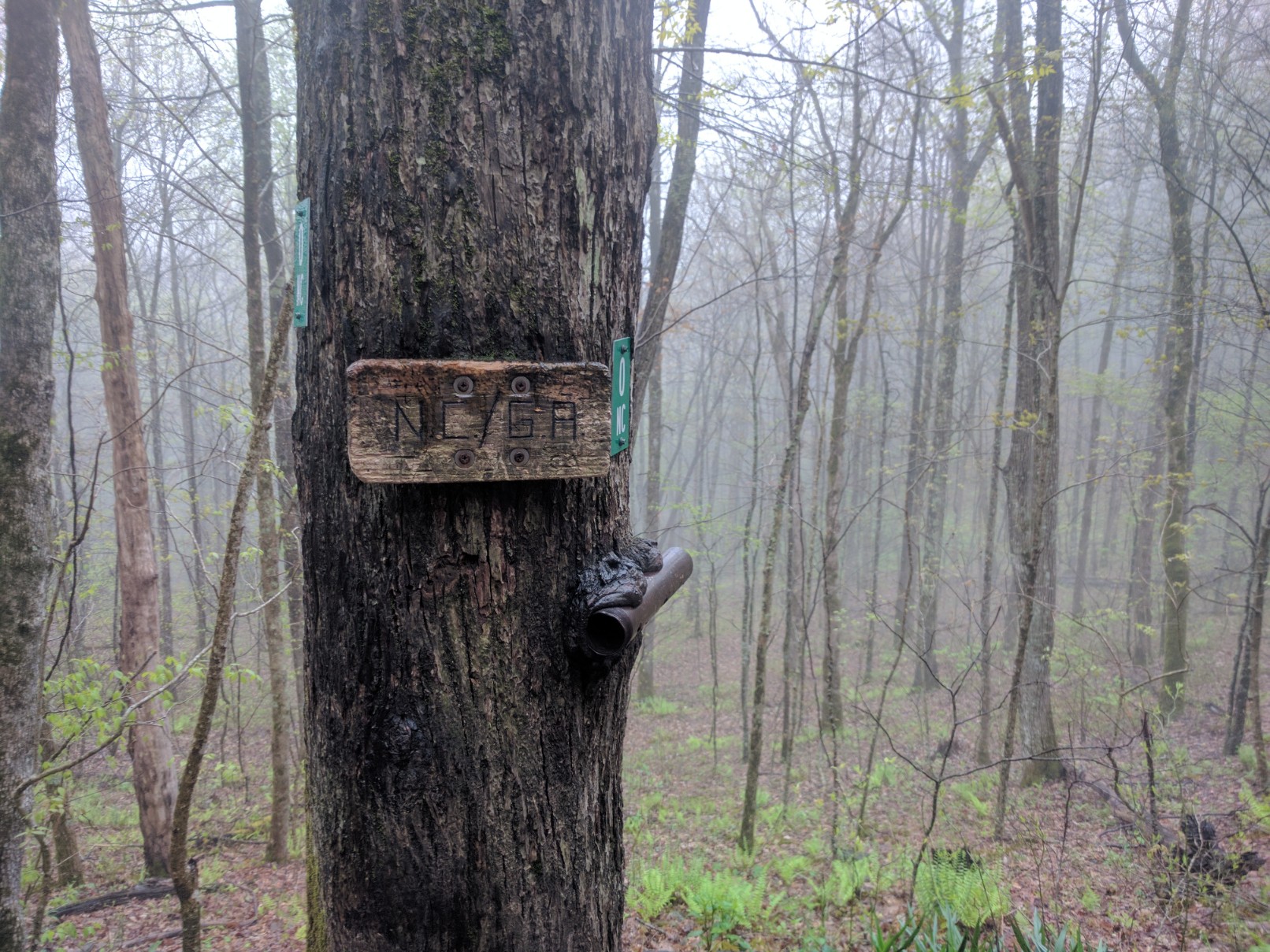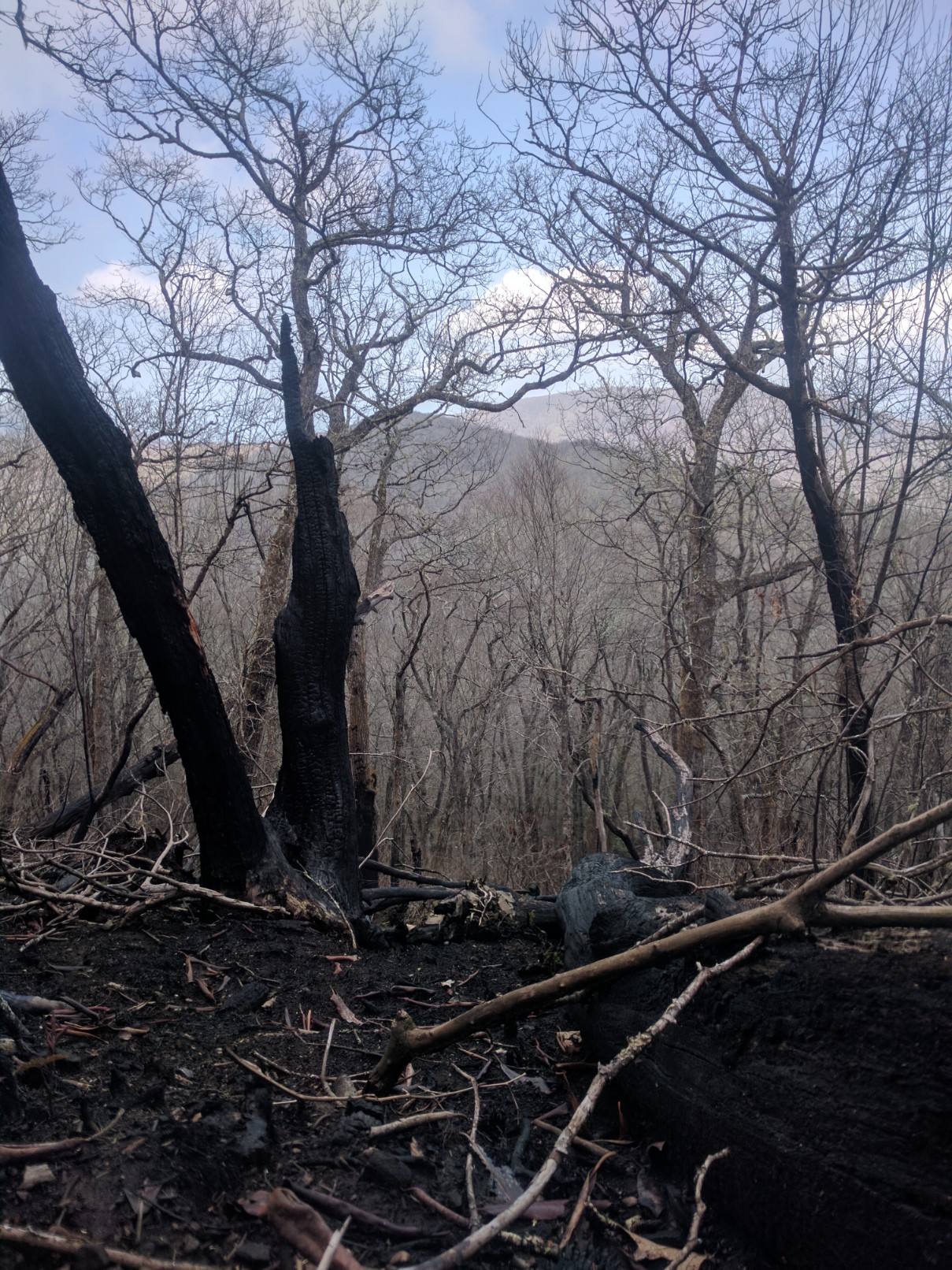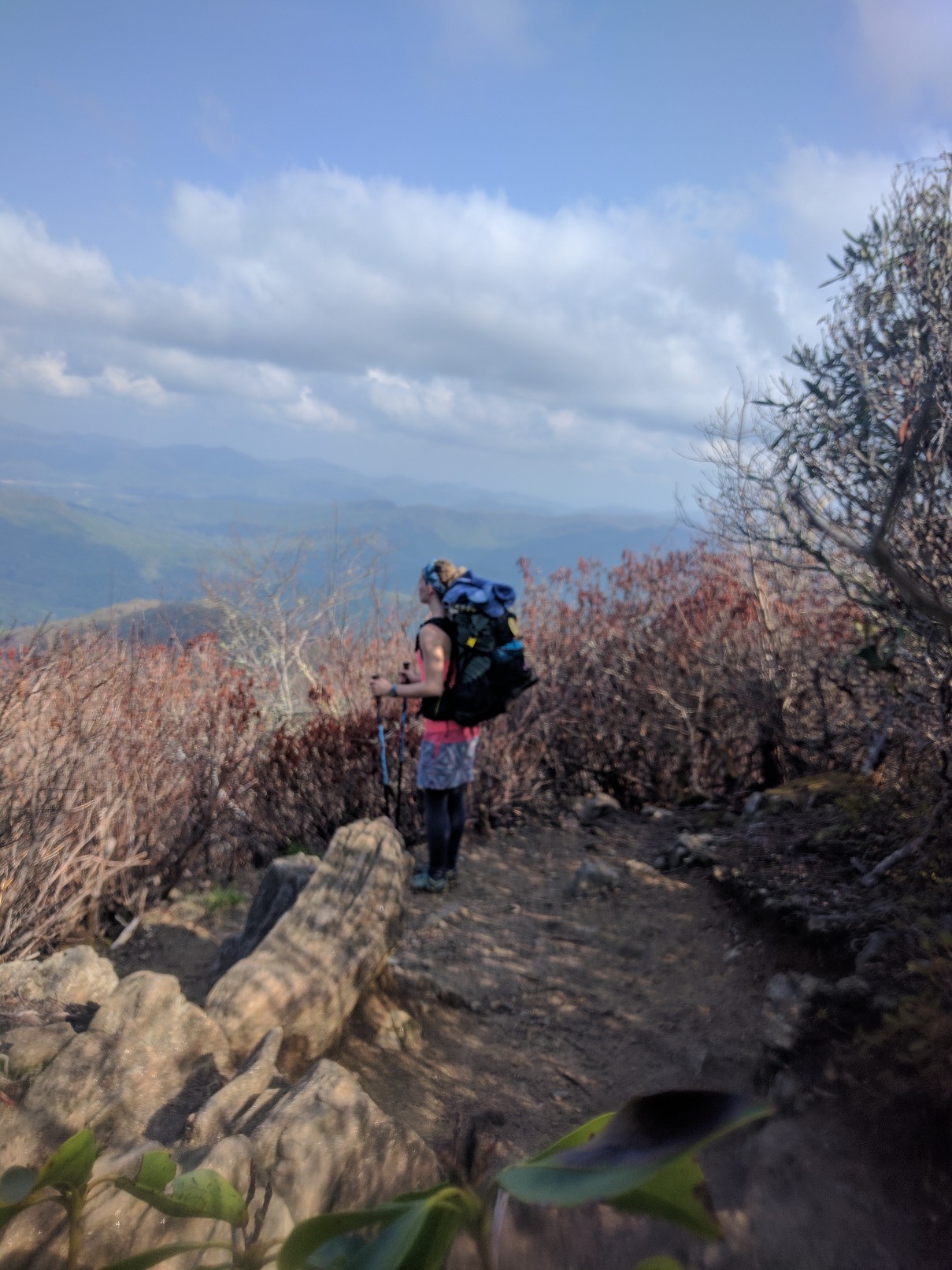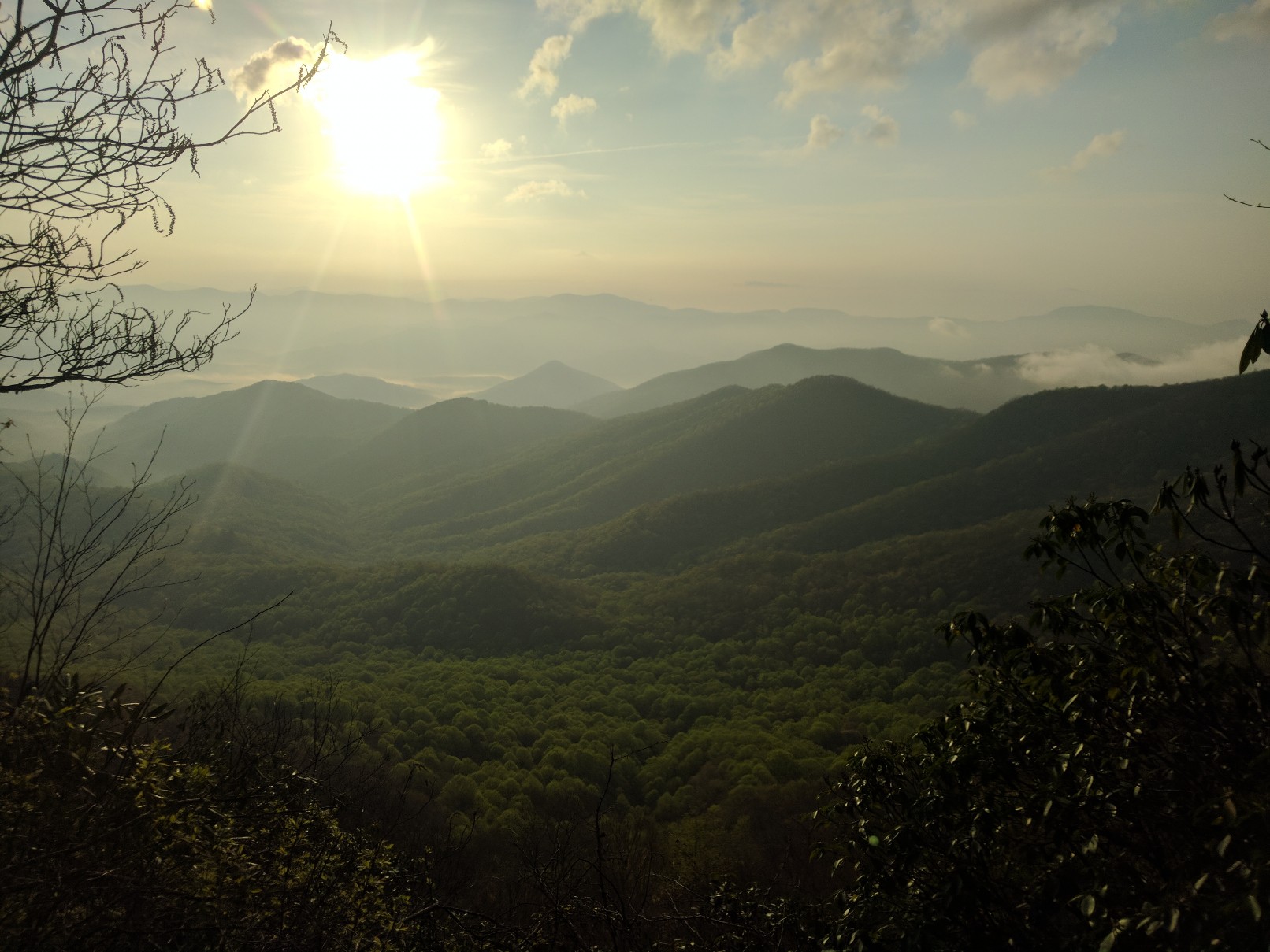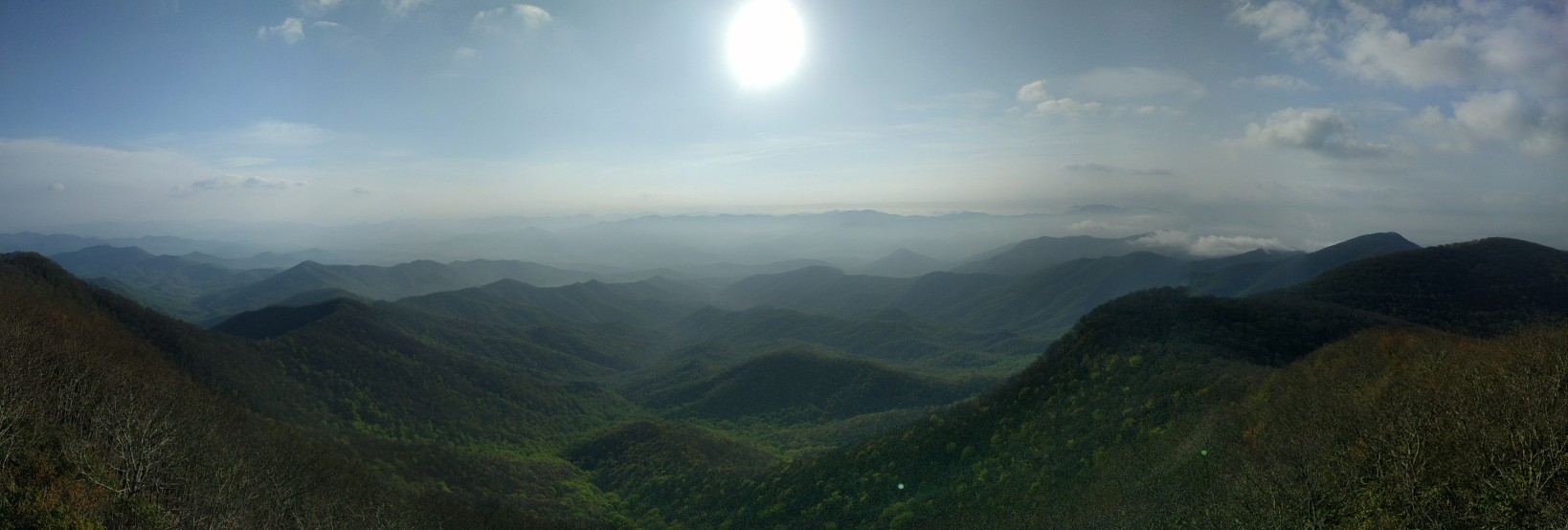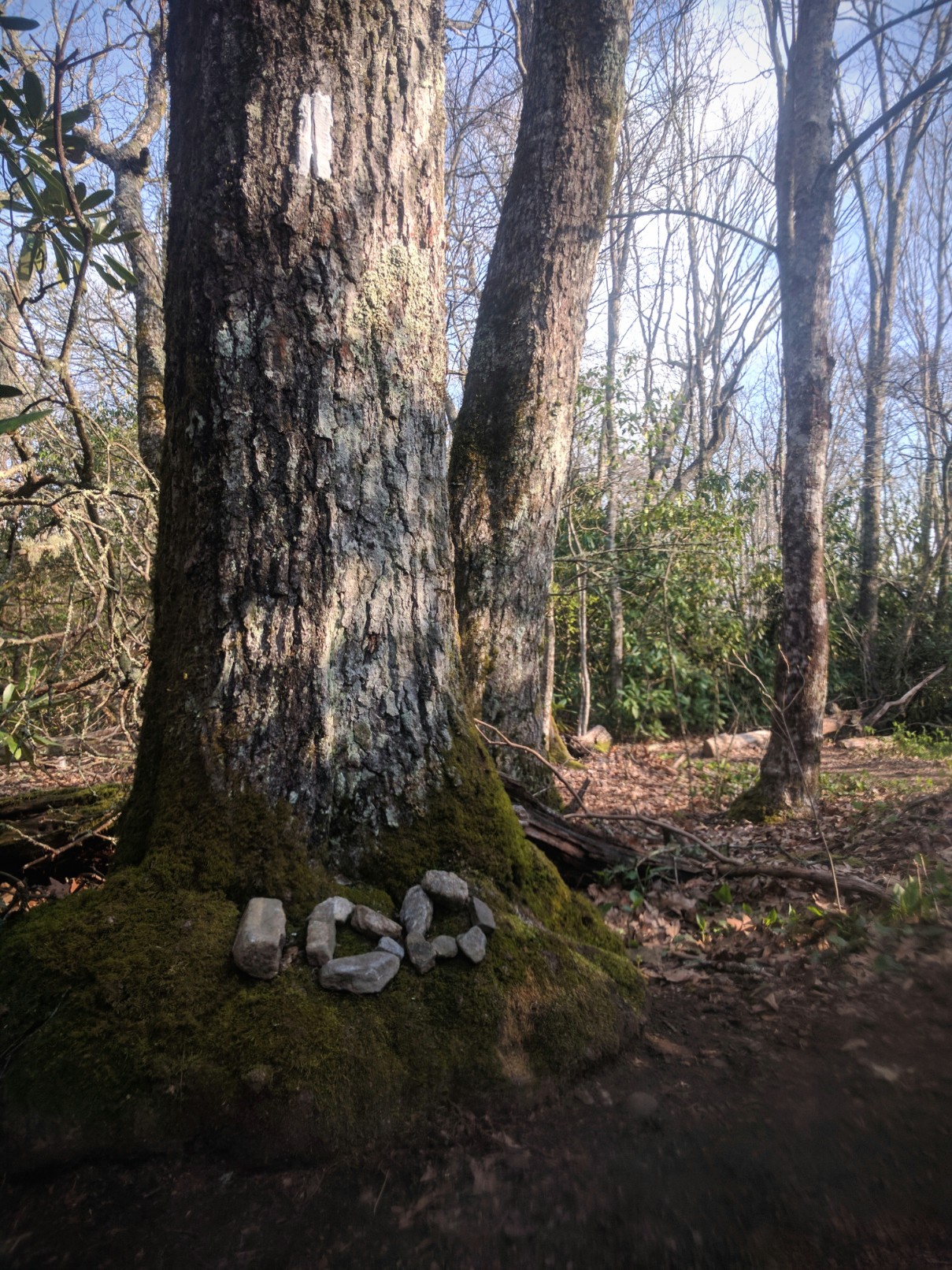Here I am at mile 69.3 of my trek, enjoying the wifi and bountiful grocery stores of Hiawassee, GA. I had intended to wait until my first week on the trail was complete to write a post, but the first few days have been eventful enough to warrant an update. I wish I could adequately describe all the people I’ve met and the experiences I’ve had, even in this short time. To do so in a single blog post would be impossible. So here are the highlights:
After a minor delay due to the vagaries of airline travel, I finally made it to the southern terminus of the AT on Springer Mountain, GA (Mile 0.0).
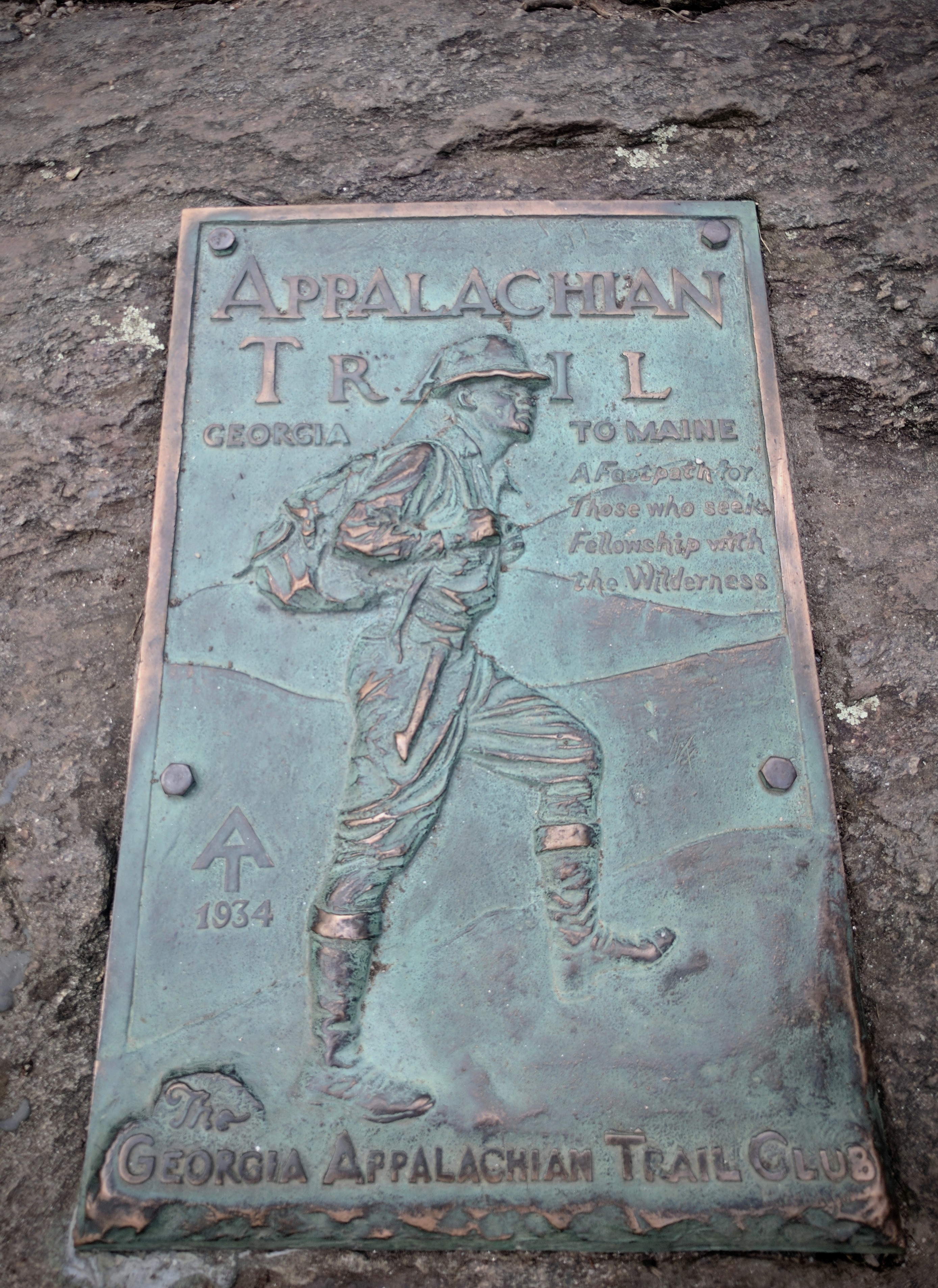
Southern Terminus: Springer Mtn., GA
Because I was already starting after the majority of thru-hikers, I opted to skip the 8 mile approach trail from Amicalola Falls (2,190 miles is plenty, thanks). Instead, I back-tracked 1 mile south from the Springer Mountain trailhead with my friend who graciously dropped me off (and probably regretted agreeing to do so after navigating the treacherous 7 miles of winding dirt road up to Springer). It was unbelievable to finally see that first white blaze.
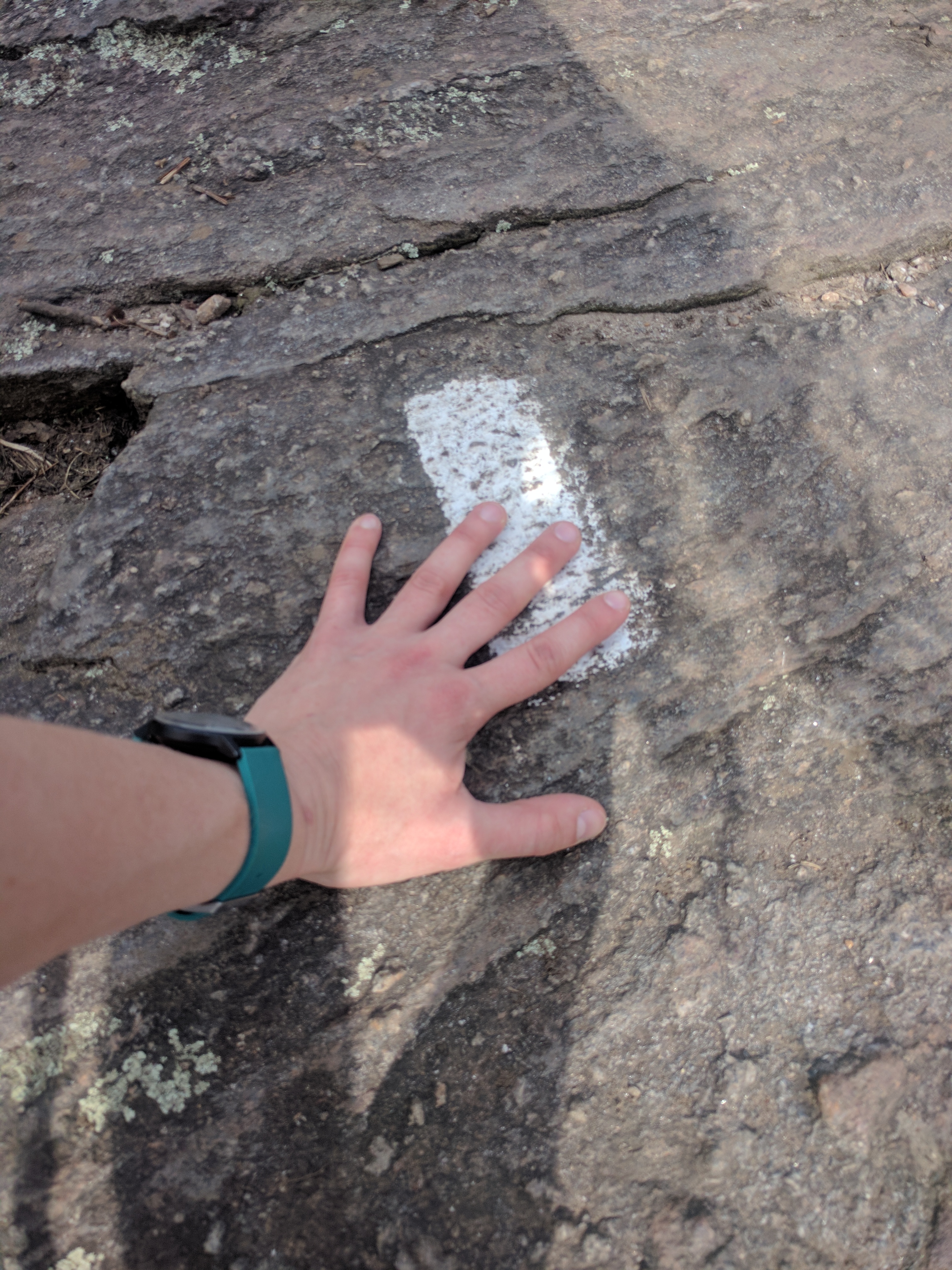
The first white blaze!
We then hiked back out to the trailhead, said our goodbyes, and I headed off into the woods alone at about 5pm. I had enough time to get to the Stover Creek Shelter (Mile 2.8) that evening. The group of hikers already at the shelter seemed to sense my trepidation; having never stayed at a shelter before, I was uncertain of the etiquette involved. They kindly directed me to a suitable tentsite, and I set up camp. In my haste to get to Springer with enough daylight to hike a bit, I forgot to pick up a fuel canister for my stove (fuel of any kind is unwelcome on an airplane, for obvious reasons). Fortunately, instant mashed potatoes will rehydrate just fine in cold water if given enough time. After dinner, I threw my food bag in the bear box and joined the other hikers at the shelter to chat. The majority of them were section hikers, with one other thru hiker from Switzerland. As we talked, light rain began to fall, turning into an unexpected torrential downpour that sent everyone dashing for their tents. I spent a damp first night on the trail, observing the many inadequacies in my tent setup.
The next morning I enjoyed some cold oatmeal (Really. No different than those trendy overnight oats. I swear.) Everyone discussed the daily weather forecast: severe storms followed by a full day of rain. One of the section hikers warned me that shelters fill up quickly on the weekends, especially in bad weather. I left camp early, trying to make up the miles I’d missed due to my late arrival the day before.
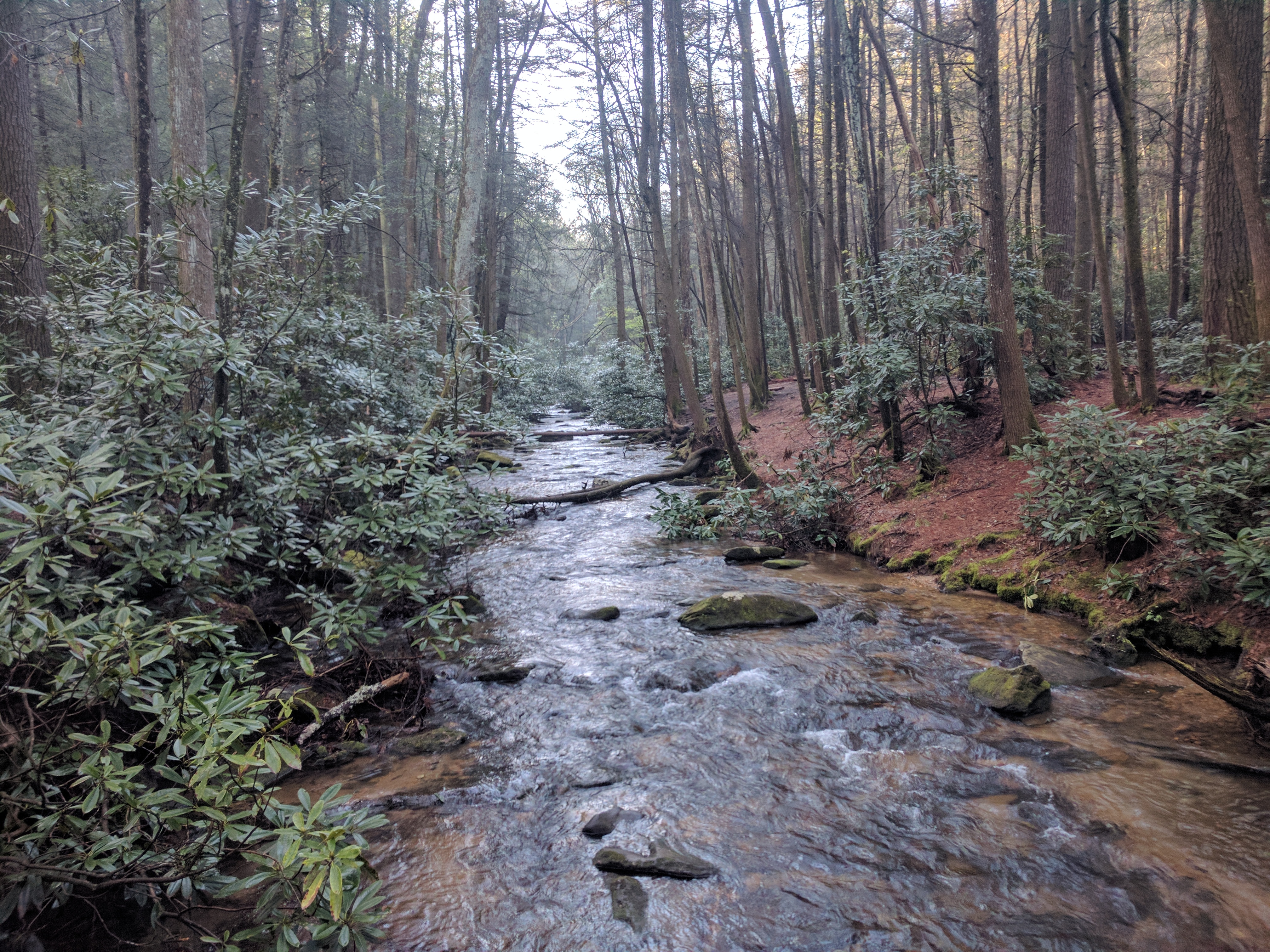
Stover Creek
After a beautiful day of hiking, I arrived at Gooch Mountain Shelter (Mile 15.8) to find almost 30 hikers jockeying for tent and shelter spots. I was fortunate to snag the last spot in the two-floor shelter. This particular shelter was under the supervision of one haggard-looking ridge runner. Ridge runners are volunteers for the Appalachian Trail Conservancy who live at assigned shelters during the peak hiking season in a given area. They coordinate hiker accomodations, enforce trail policies, and educate hikers on leave-no-trace principles. Unfortunately, this ridge runner had the unpleasant job of turning away exhausted hikers coming into the full shelter late in the day, sending them to a tent site a mile further along the trail. Most hikers begrudgingly acquiesced, although some were outright disrespectful. In addition to managing the shelter area, the ridge runner was also warning hikers about a possible norovirus outbreak that had likely originated in the region between this shelter and Neels Gap, where several hikers had fallen ill. He advised us to not only filter, but also to treat our water with iodine or chlorine tablets. I only have a filter. Most backpacking filters will remove particulate matter, bacteria, and protozoa, but not viruses. The best I could do was to avoid collecting water from the suspect sources (in this case, streams near crowded campsites). Fortunately I’m at the far end of the latent window for norovirus now, with no ill effects. Lucky me!!
The ridge runner left to go check on the folks he had sent down the trail to camp. As we cooked dinner (or, rehydrated in my case) and got ready for bed, the sky blackened and gusts of wind began to roar up the mountain, again scattering everyone to their respective tents. Those of us in the shelter packed in like sardines and tried to sleep (including a few people sleeping on the ground and the picnic table under the shelter roof because their hammocks weren’t storm-worthy). This was my first, and hopefully last, night voluntarily sleeping in a shelter. It was fortunate that the storm was so loud, to cover the sounds of people moving restlessly in their sleeping bags, snoring, and other noises that shall remain nameless. We were all awakened in the middle of the night by the sound of rodents gnawing on someone’s pack. Shelter mice are legendarily ravenous, destroying gear in their search for crumbs of food, or even for the salty residue on sweaty pack straps. I vowed to become an expert at storm-proofing my so that I could avoid ever sleeping in a shelter again (except for mandatory areas such as the Smokies, ugh).
I woke up before dawn on the third day, with the goal of reaching the hiker hostel at Neels Gap (Mile 31.4) for a hot shower and food resupply. One of the section hikers at the shelter kindly gave me his half-full fuel canister since he was finishing his hike that afternoon. It continued to rain steadily all day. I had never hiked in the rain for a prolongued period of time before. Everyone has told me that rain gear is useless; that you end up soaked anyways; that as long as you keep moving, it will be fine. These trail aphorisms proved to be true. By mile 5, I had given up on stepping over puddles and began to slog right through. My rain kilt peformed admirably, keeping me relatively dry from waist down. My rain coat, on the other hand, may as well have been a sauna. Perhaps the most difficult part of the day was forcing myself to stop and eat, since I would immediately begin shivering the moment I stopped hiking. Hiking in the rain is not something I would choose to do. But, there were still some pleasant moments from my 15 miles through the rain.
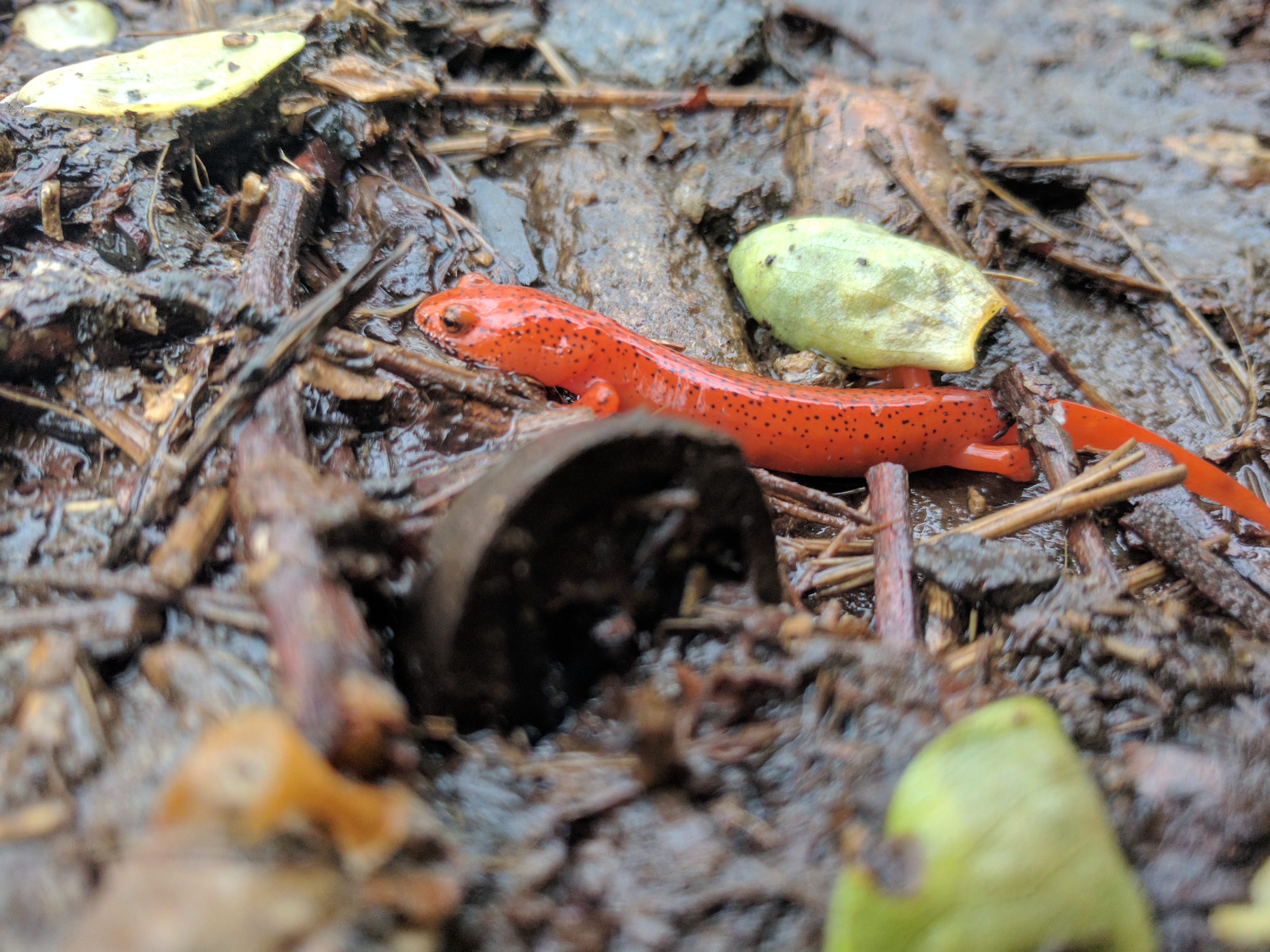
For example, I got to meet this fellow.
Eating a nutter butter with mud-slicked hands, water oozing out of my trail runners with every step, I finally began to feel like a real thru-hiker. In order to get to Neels Gap, I had to traverse Blood Mountain (4,442 ft.), the first formidable climb of the AT. Fortunately, I have hiked Blood Mountain before and knew what to expect. The northbound ascent was predominantly switchbacks, followed by sheer rock balds on the approach to the summit.
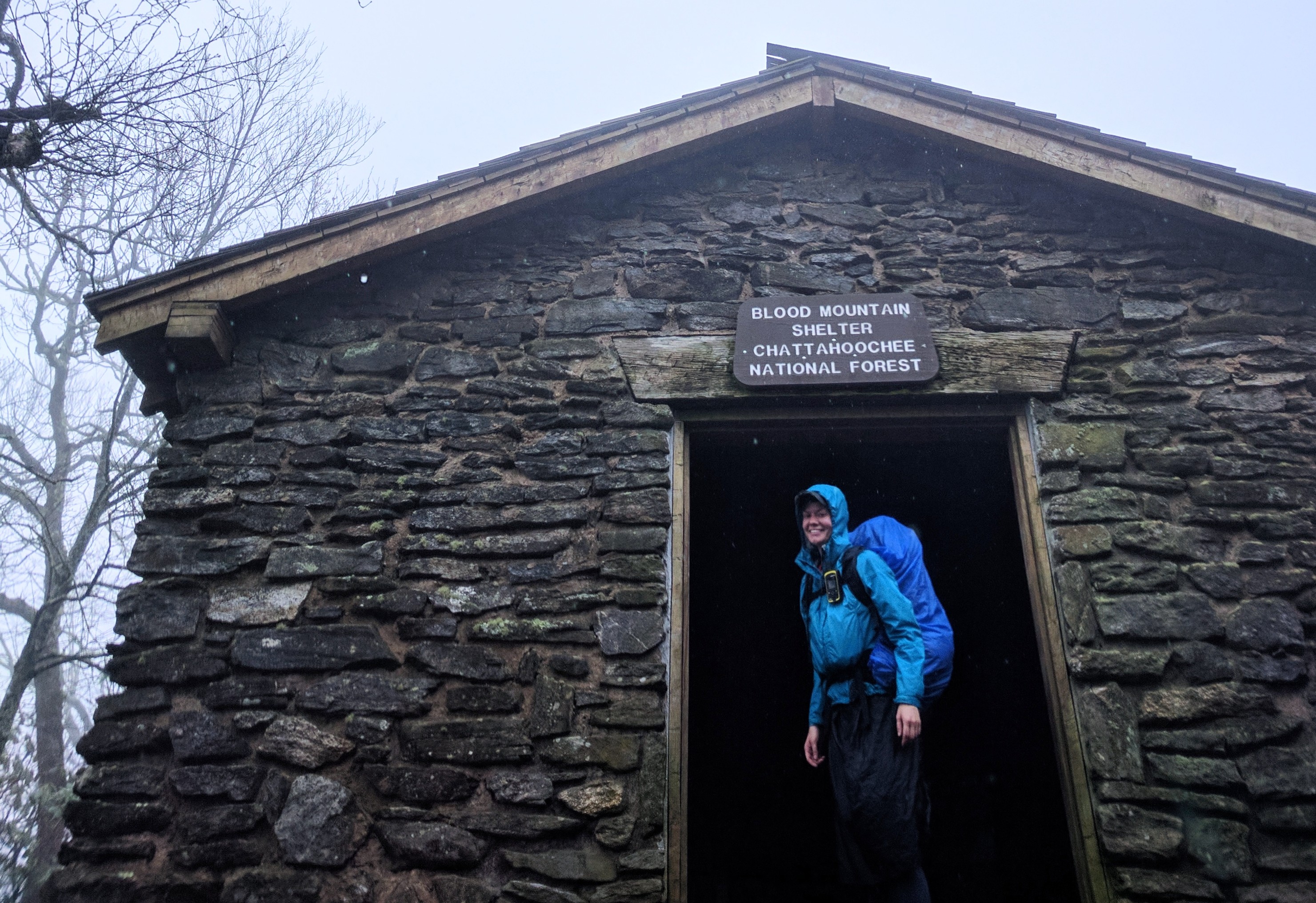
Feeling like a real thru-hiker in the rain
Just as I reached the shelter near the summit, it began to storm. With thunder crashing around me and gusts of wind threatening to topple me backwards on the slick bare rock, I ran-slid-shuffled the fastest half mile I have ever hiked across the summit and down towards the treeline. The trail descending from Blood Mountain is a rock scramble that had turned into a veritable waterfall from all the rain. During my adrenaline-fueled descent, I found myself smiling. Delirious with hypothermia? Perhaps a little bit. But mostly I was proud of myself for having persisted (and even having fun!) through a long arduous day, in spite of the rain.
When I arrived at the base of the mountain, I was excited to encounter the first white blaze that I ever saw during a weekend backpacking trip in 2014. Even in my haste to escape the rain, I couldn’t resist the urge to stop and recall how distant my dream of thru-hiking had seemed back then. And how real and cold and soaked to the skin it was in that moment as I stood transfixed by nostalgia. Sometimes I still can’t believe I’m really doing this.
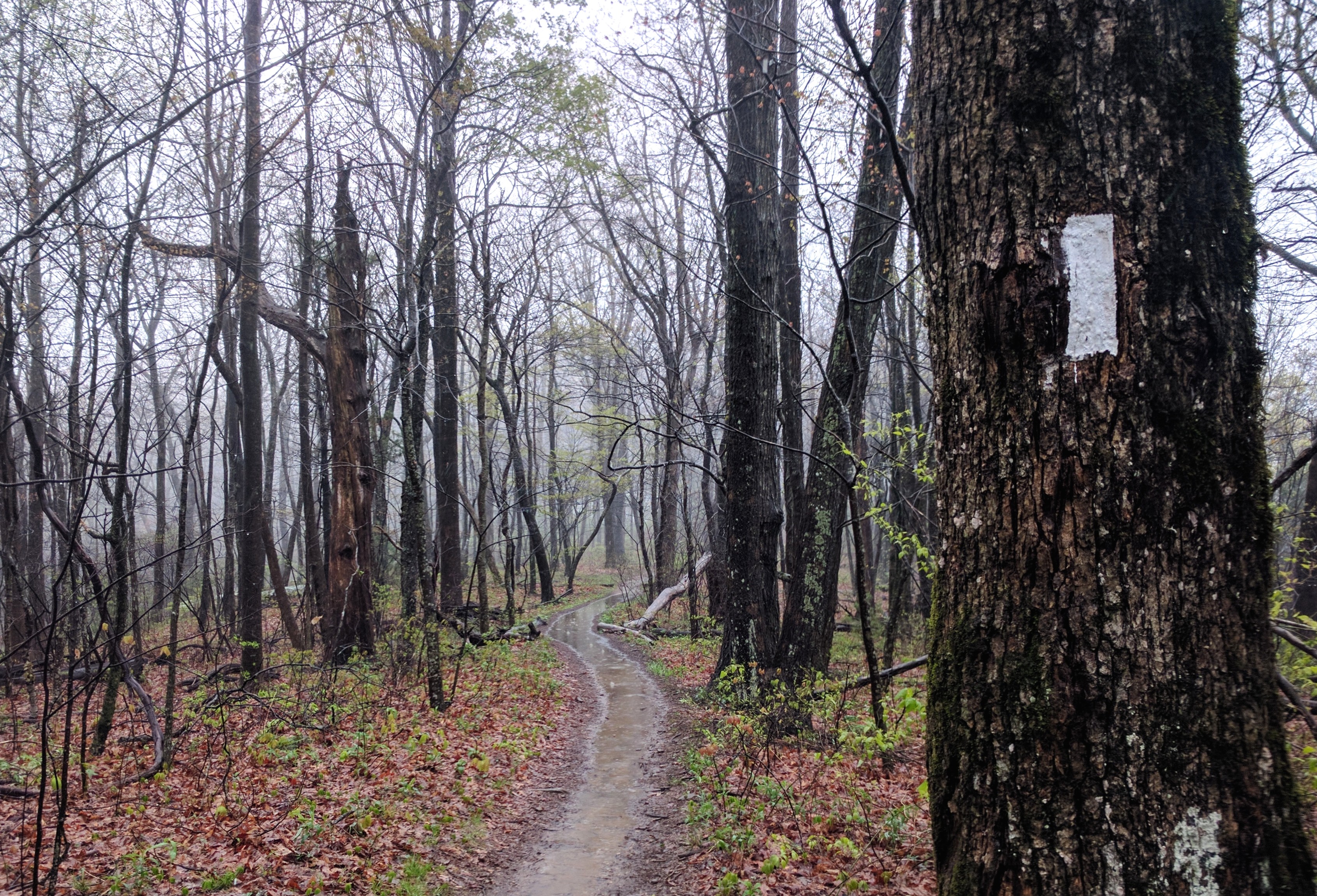
Little did I know in 2014 that I would be seeing this blaze again
By the time I reached Neels Gap, the hostel at Mountain Crossings was already full. However, I was able to find a few other soggy hikers willing to split the cost of staying at Blood Mountain Cabins down the road. Split between four people, these cabins cost the same as a stay in the hostel, and they provide laundry service which the hostel does not. I would highly recommend it over the hostel.
With clean clothes and dry gear, I set out in light rain the following morning. I stopped at Mountain Crossings outfitters to pilfer the hiker boxes (donated food and gear from hikers carrying too much weight or ending their hike) for food.
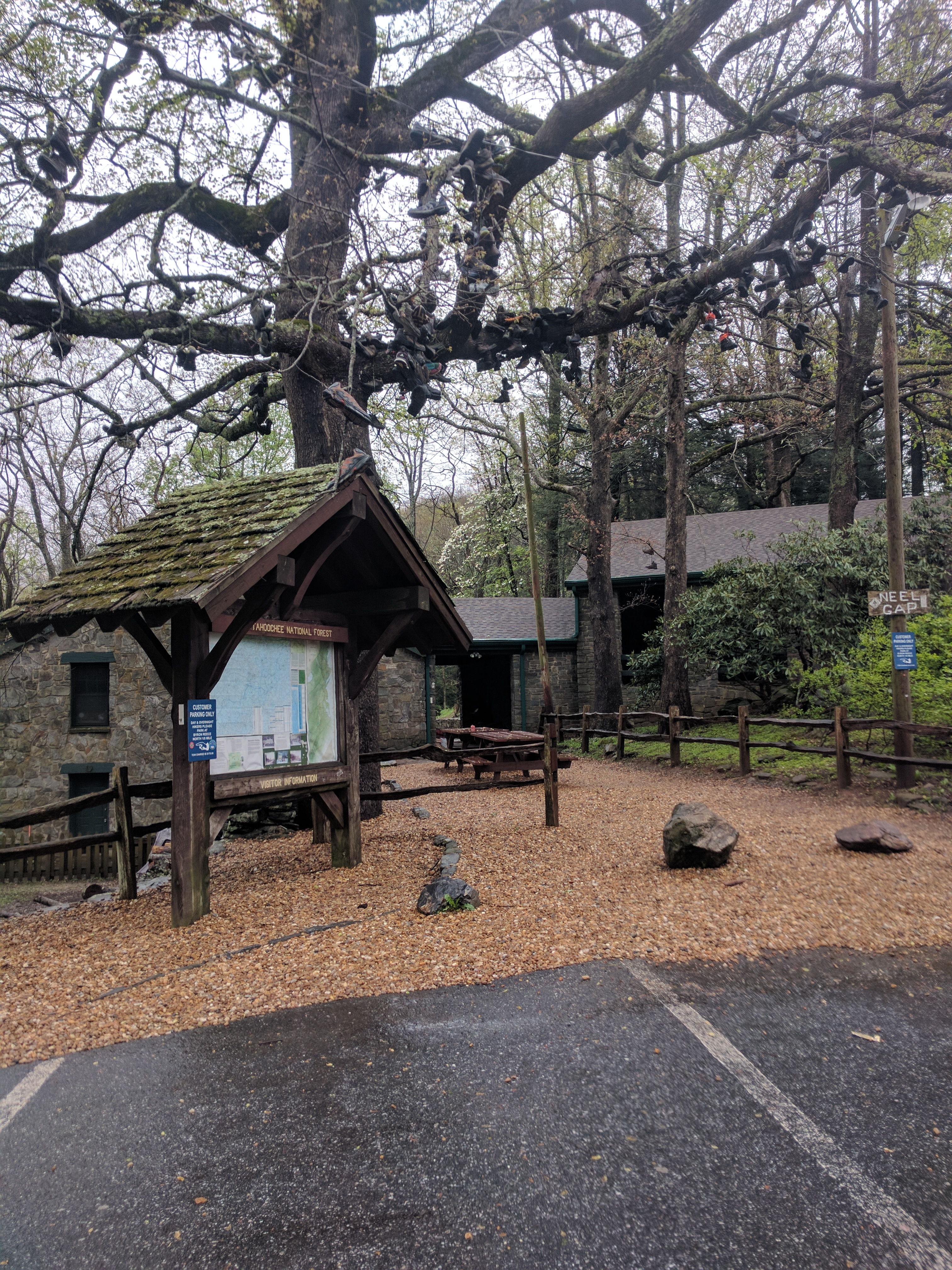
The infamous shoe tree at Mountain Crossings, decorated with the footwear of the many thru-hikers who quit here
The clouds finally began to clear as I reached Cowrock Mountain for lunch. The remainder of the hike to Low Gap Shelter (Mile 42.9) was relatively uneventful. I did get to enjoy my first hot meal, which was a geat morale booster ater a cool damp day.
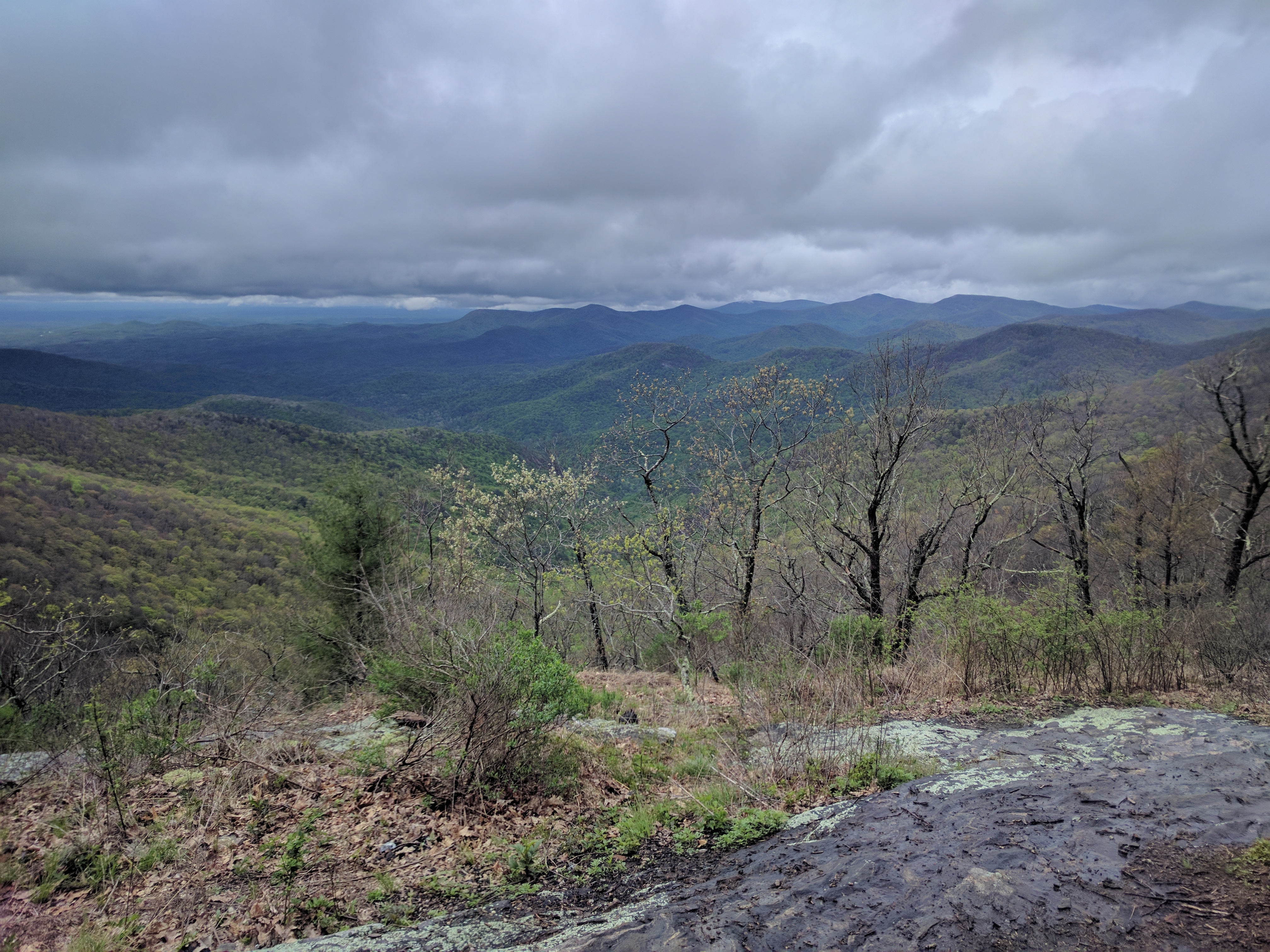
Clouds finally clearing off Cowrock Mountain
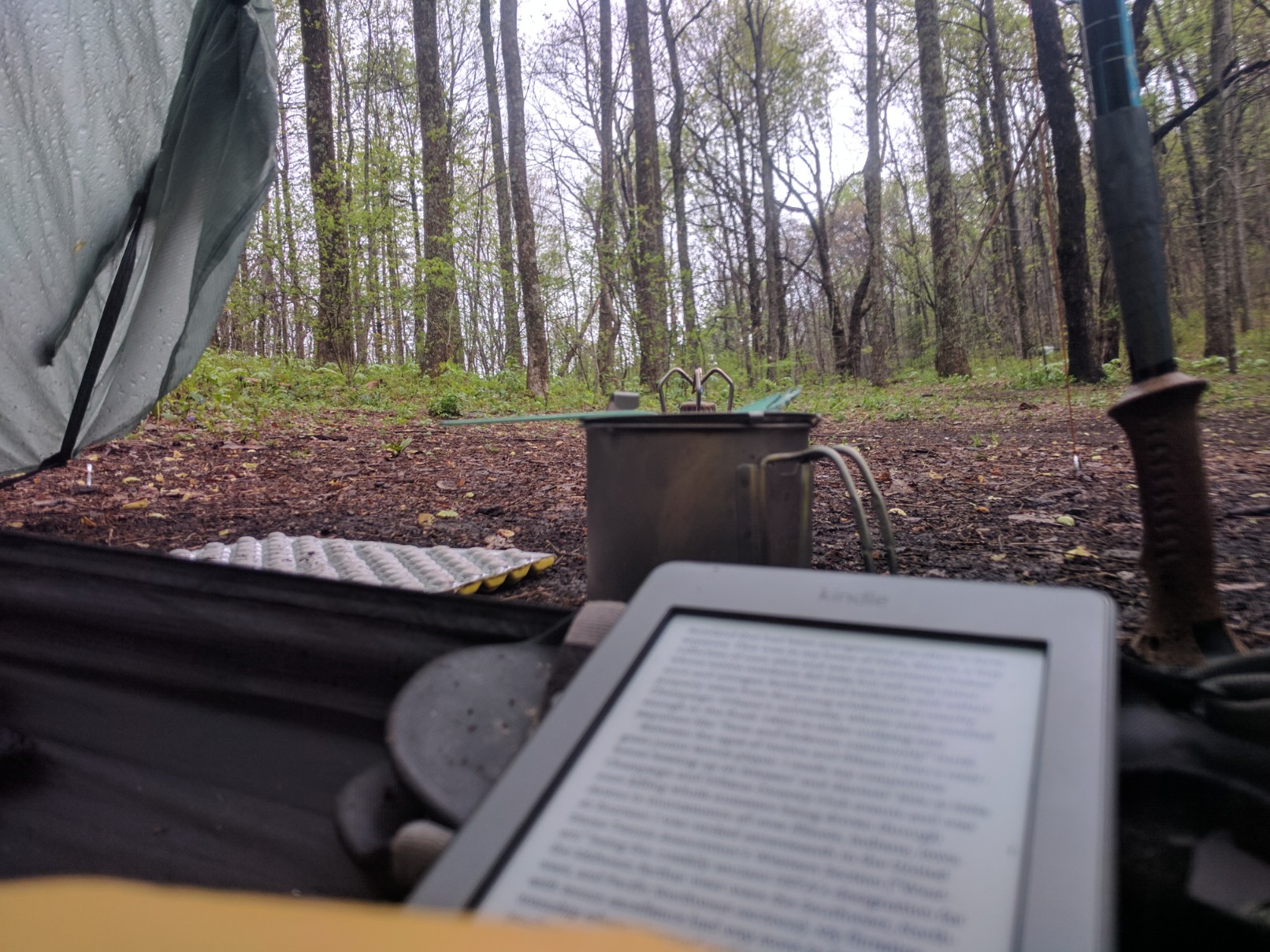
Reading in my tent while my dinner cools down. Cooked in the vestibule to avoid the rain.
It rained off and on throughout the night at Low Gap, and I awoke surrounded by dense fog. I again left camp around dawn with expectations of a high mileage day to Tray Mountain Shelter (Mile 58.3). The previous day, I had felt absolutely beaten down by a mere 10.8 miles. I was not feeling optimistic about the 4,669 feet of elevation gain on the docket for the day, with Blue Mtn., Rocky Mtn., and Tray Mtn. back-to-back. But, the fog cleared away and the sun came out. I kept putting one foot in front of the other. And before I knew it I was cruising along, crushing climbs, and enjoying the many beautiful views. Finally, my hiker legs had arrived!!
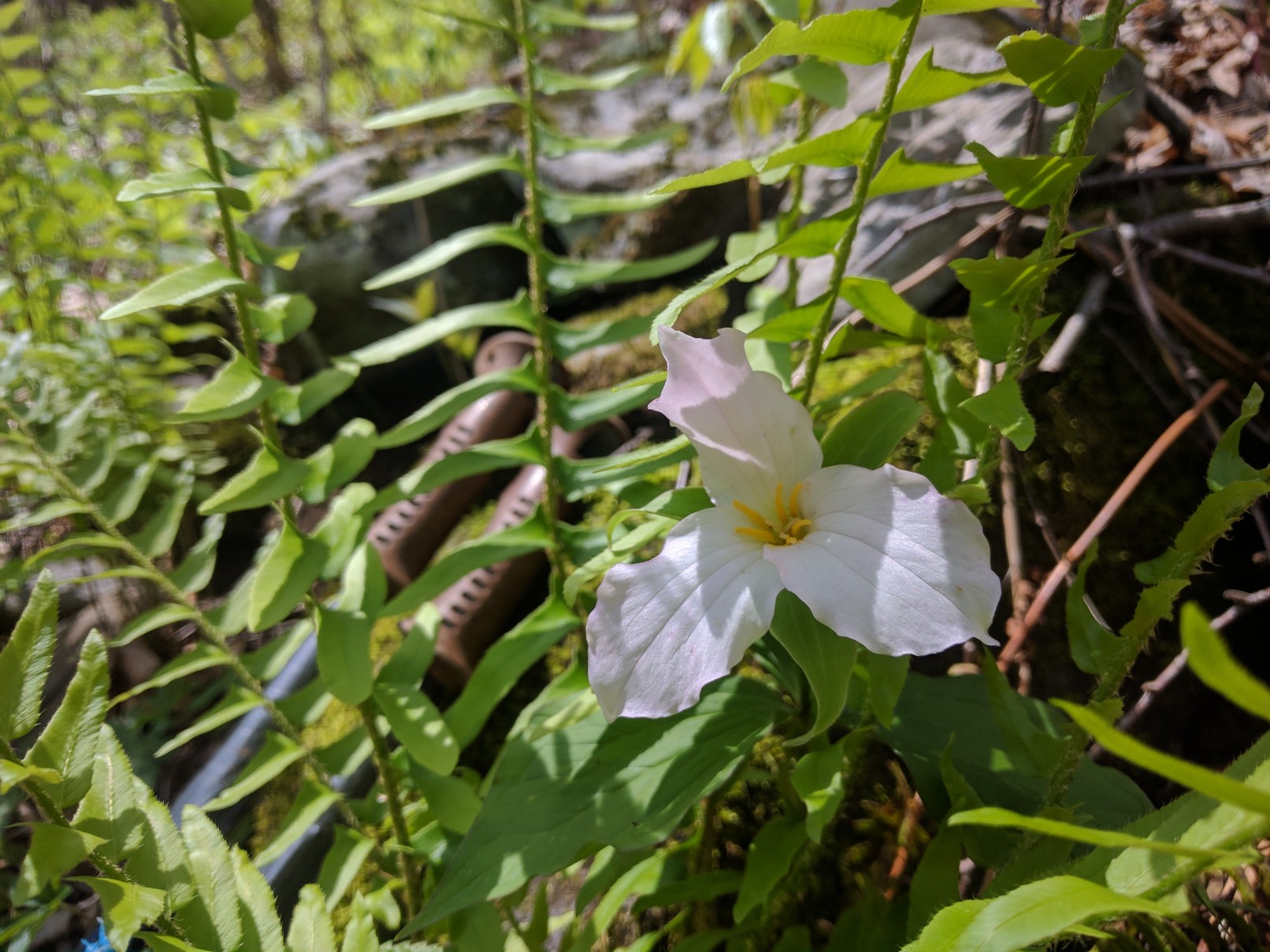
Wildflowers in full bloom along the trail in GA
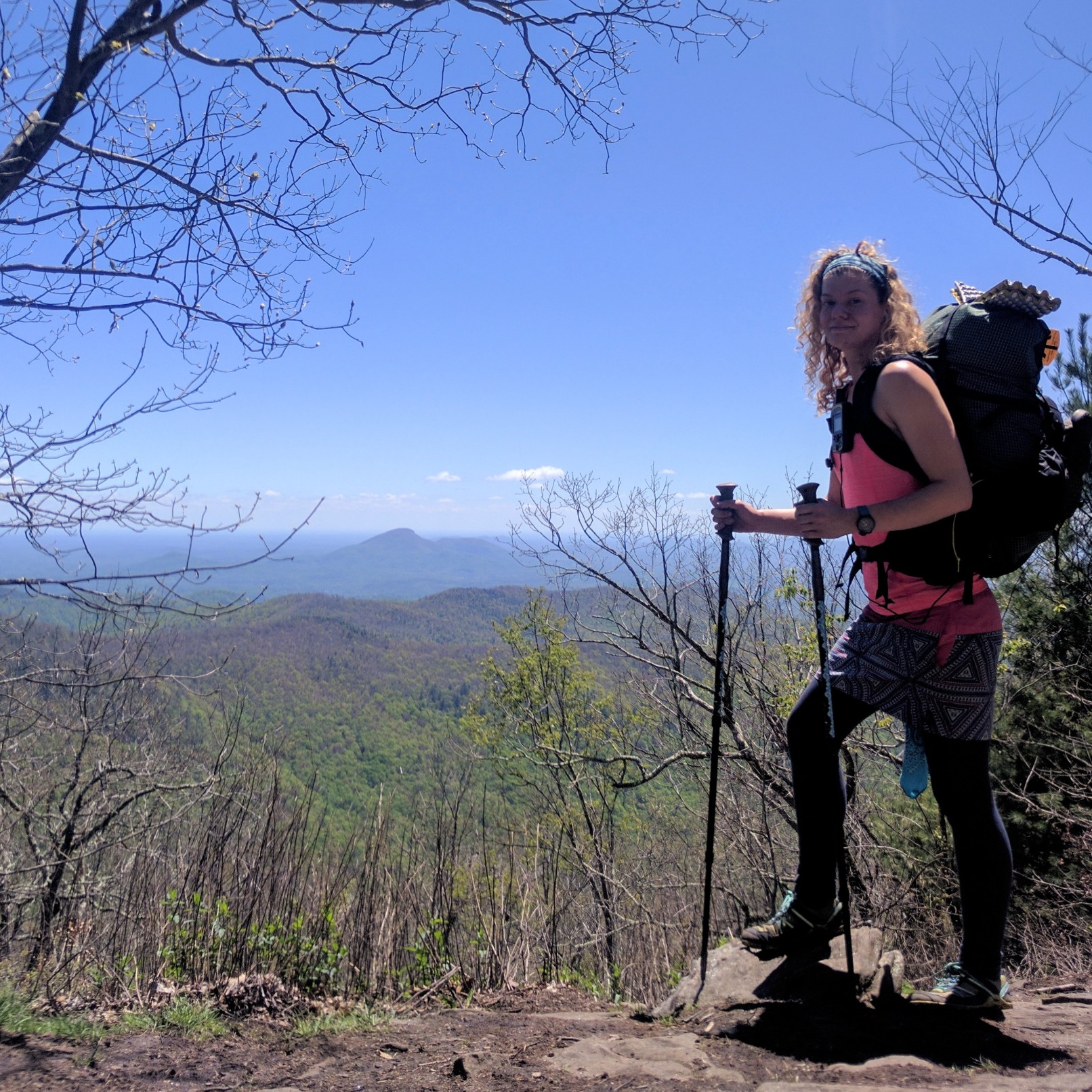
Starting to look a bit feral on Rocky Mtn.
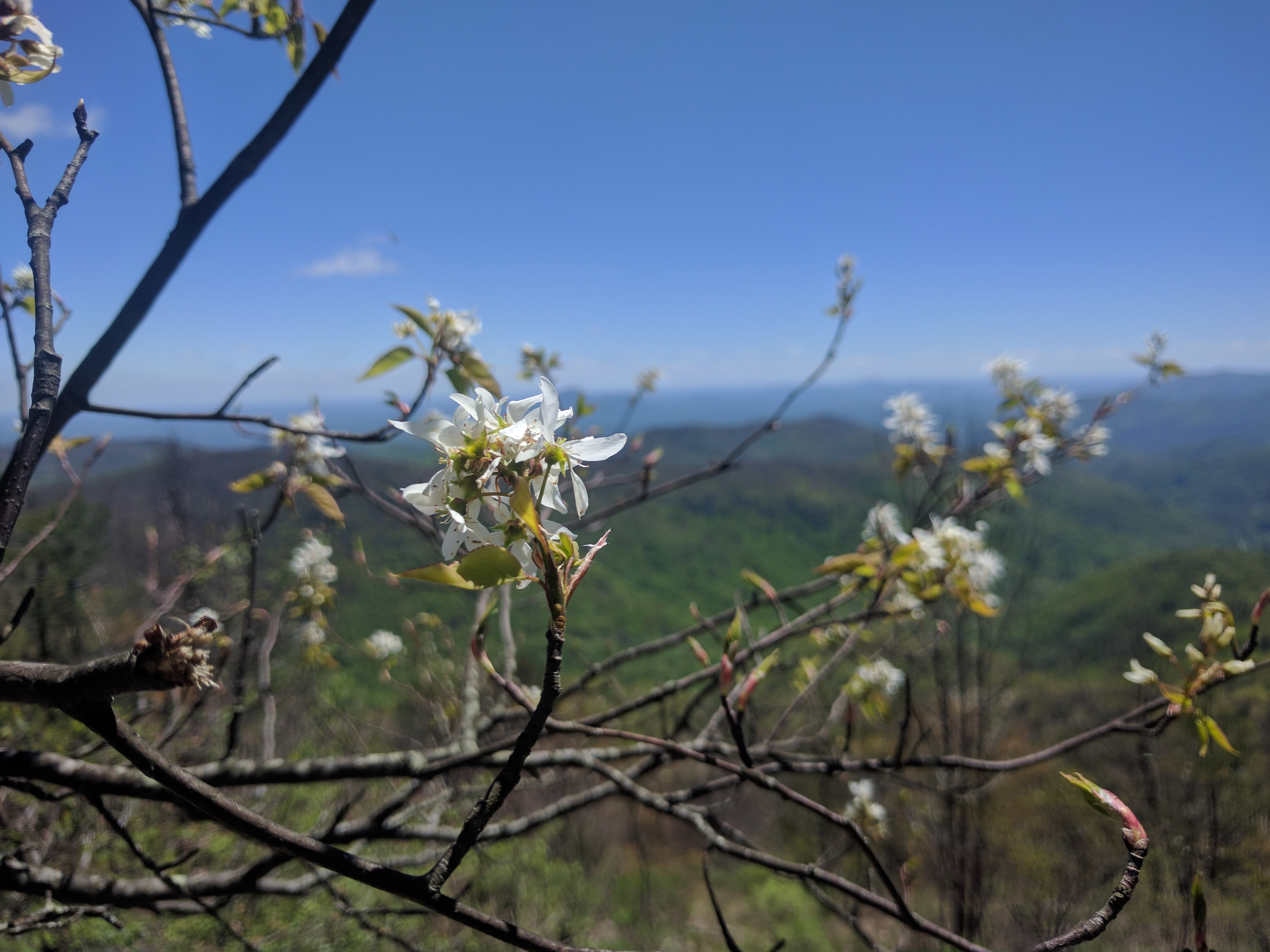
View from Rocky Mtn.
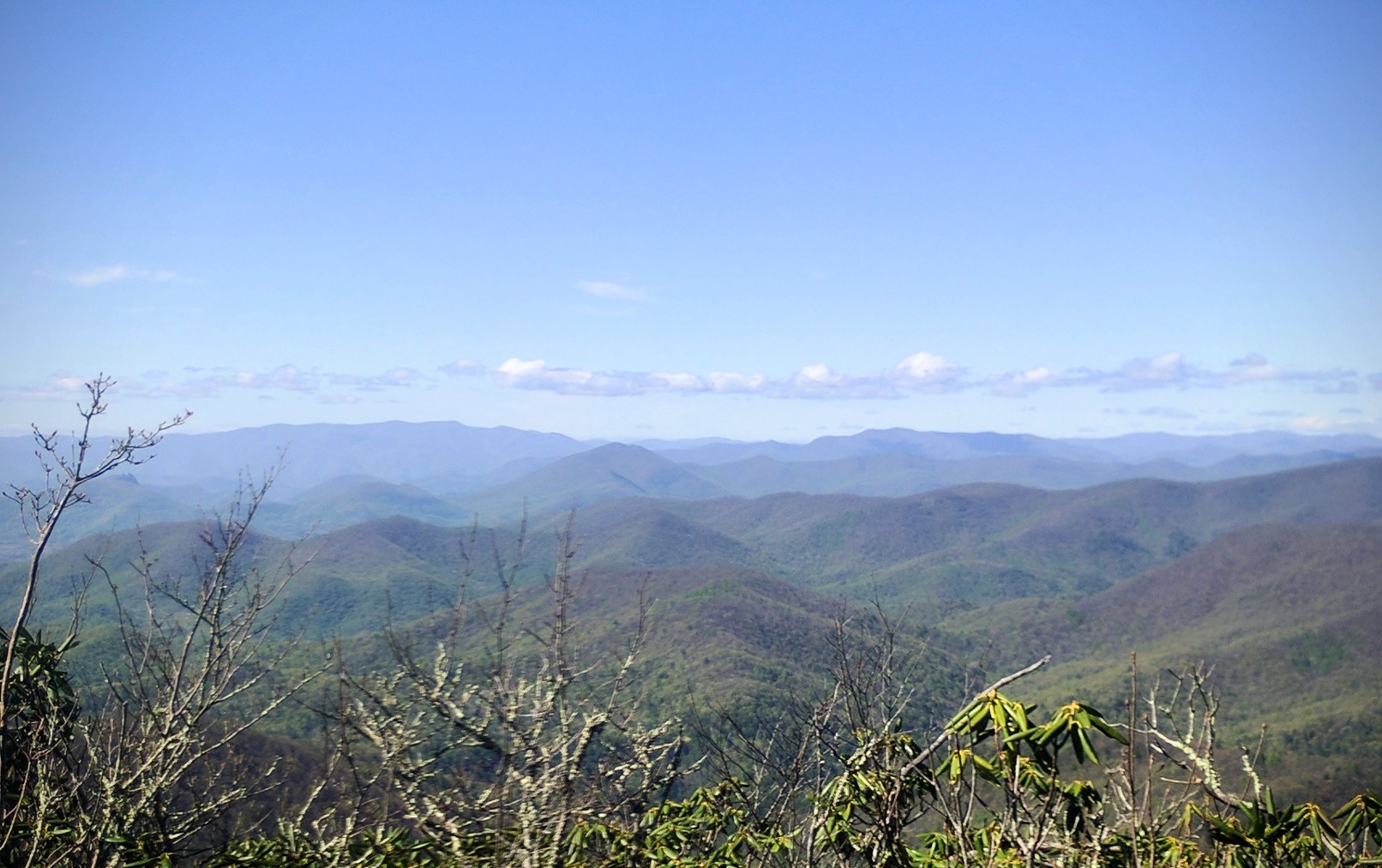
View from Tray Mtn. Summit
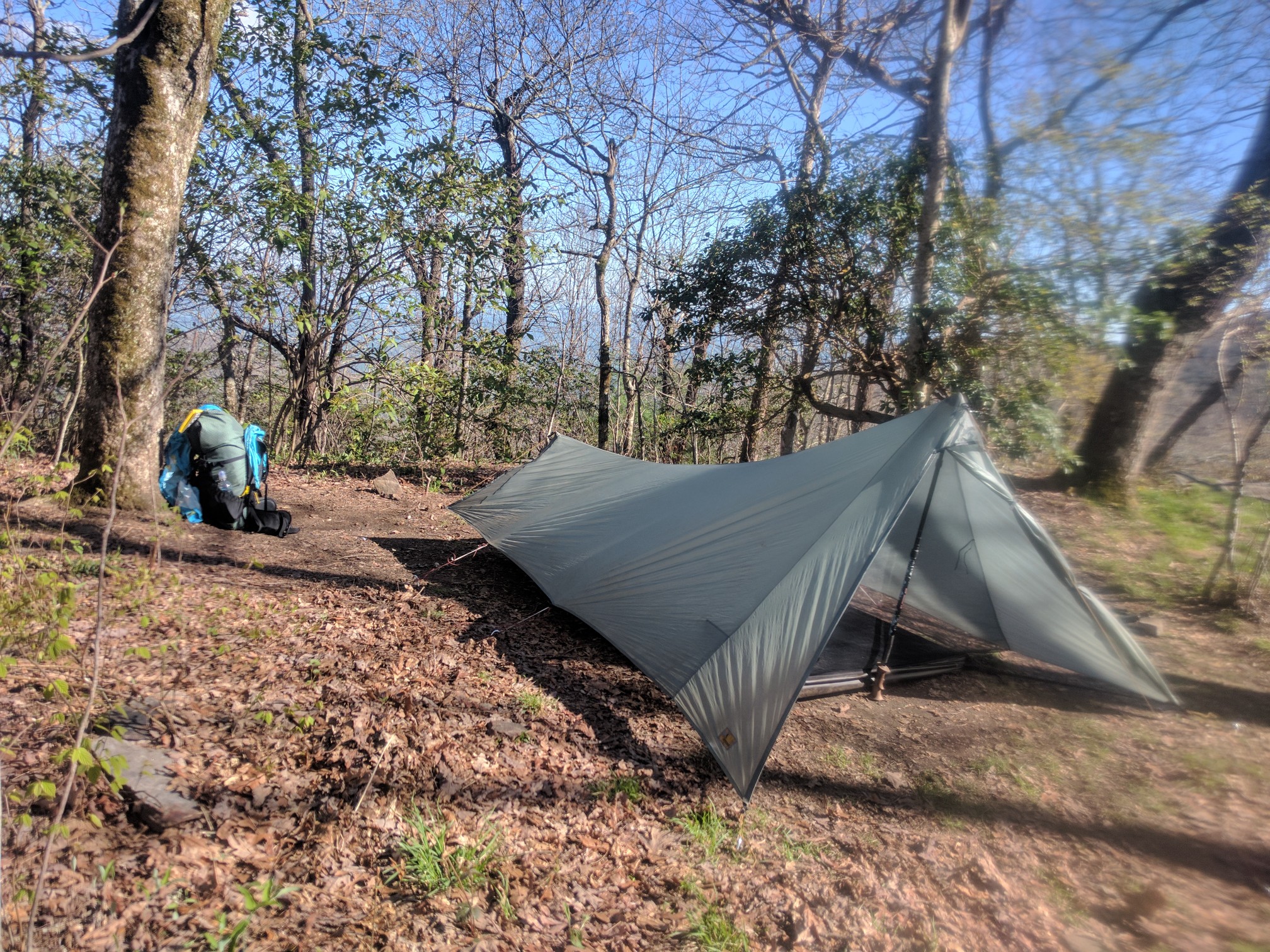
Getting better at pitching the tarptent every day!
This morning, I woke up to watch the sunrise from my campsite on Tray Mountain. As the many of the other thru-hikers left the shelter in the pre-dawn light, I indulged in some cliff-top sunrise yoga. I felt like the most fortunate person in the world. The previous day had been my best on the trail yet, despite the miles and the rugged climbs. I enjoyed taking my time and stopping to admire my surroundings. I am also extremely protective of my knees on descents and observe a mandatory pack-off shoes-off break in the middle of the day. This makes me slow, but seems to have saved me some aches and pains. Although I primarily hike alone, I have been meeting the same group of thru-hikers at each shelter. I realized this morning that I was at risk of getting caught up in the hurry-and-worry mentality of some of the younger speed-demons in my group. I decided that I would rather take my time and enjoy my hike than risk injury in some imagined race to Katahdin. I’ve been following a rough schedule that slowly increases mileage. I know I will get there if I stick to my schedule; I just need to resist the pressure to follow the herd as they push for higher mileage days. Georgia is too beautiful (and too steep!) to rush through.
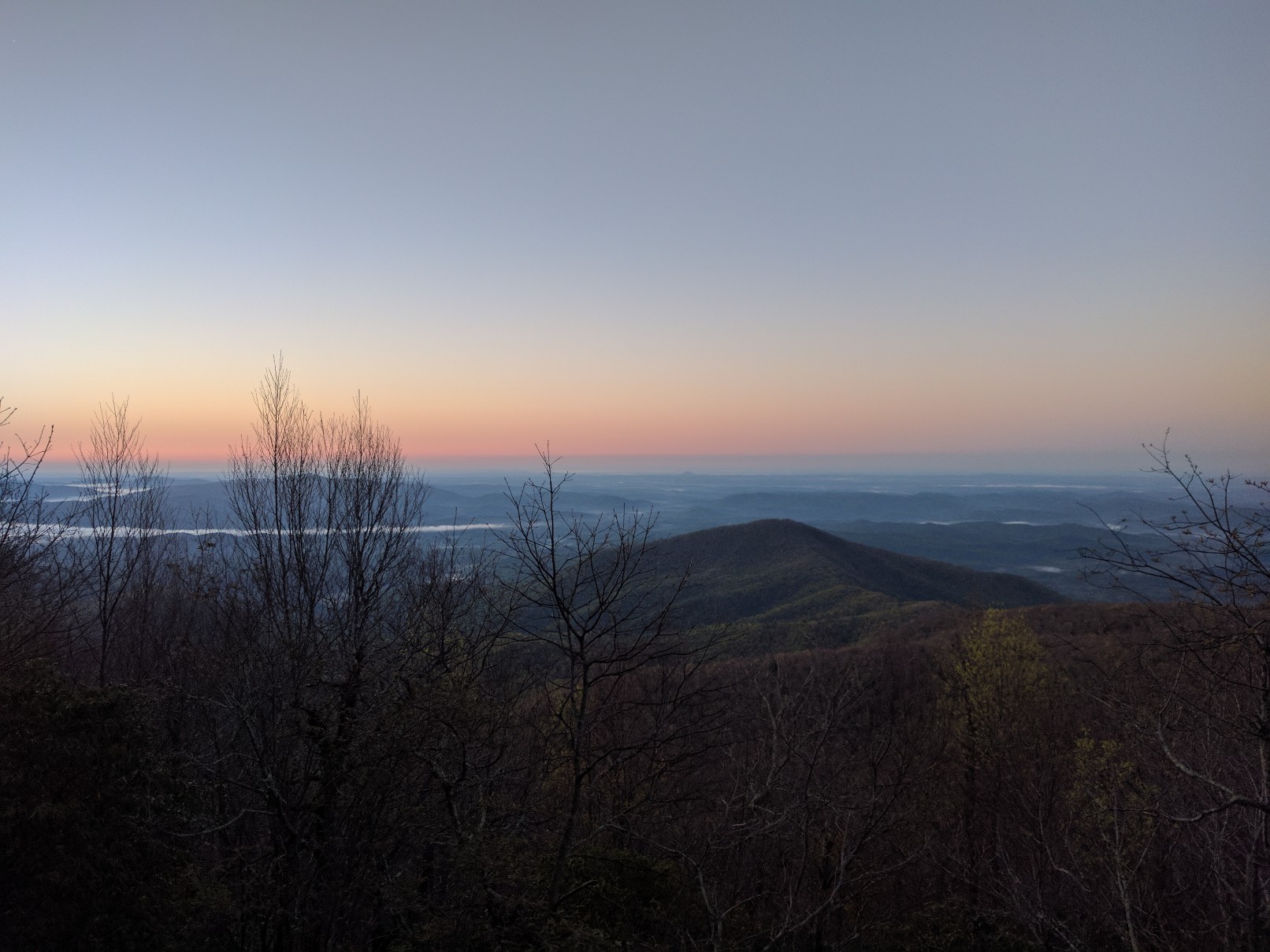
Sunrise from the cliffs near Tray Mtn. Shelter
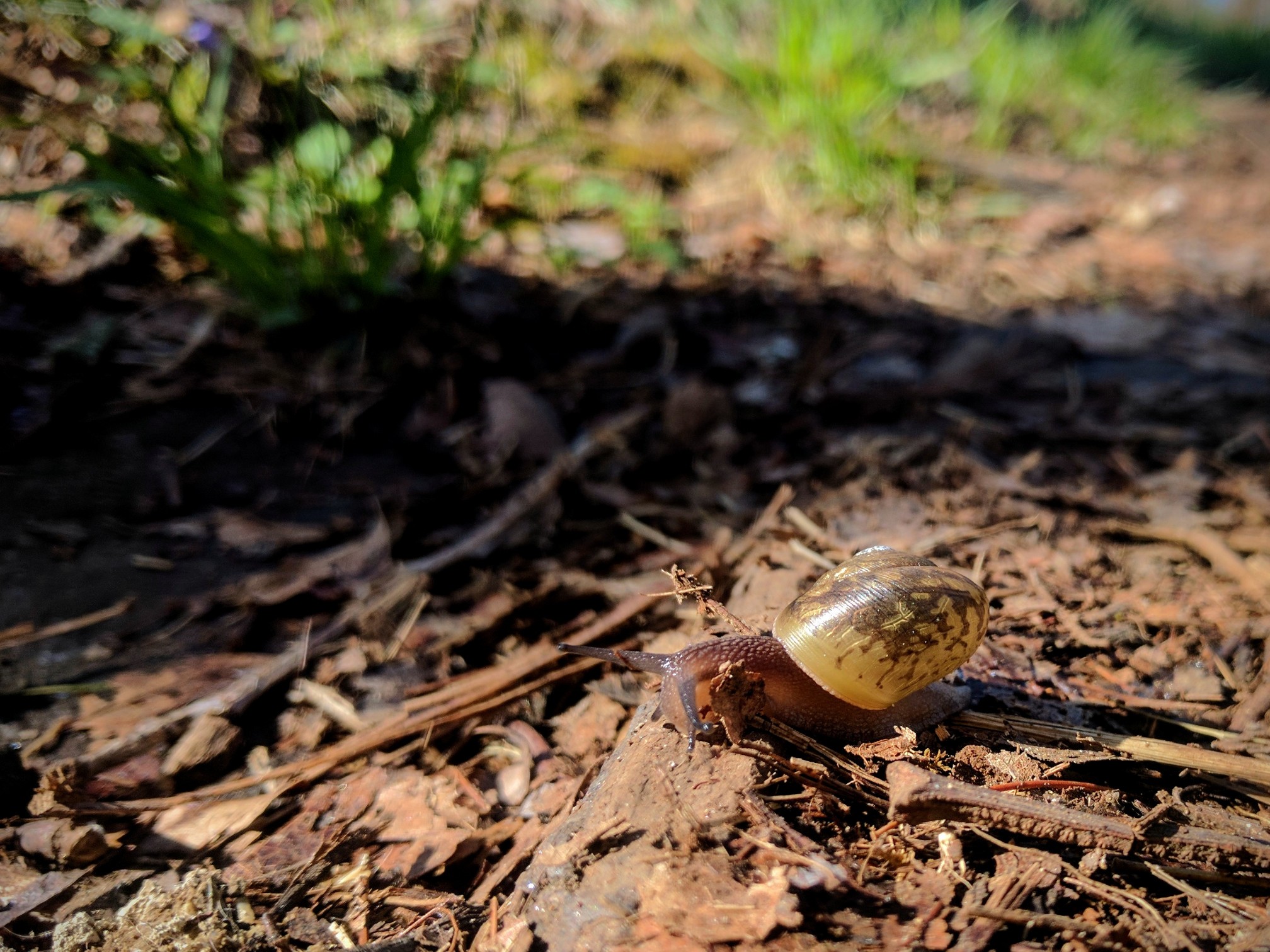
Slow and steady is the way to go.
Today was an easy 11.0 miles down to Dick’s Creek Gap (Mile 69.3) where I caught a shuttle into Hiawassee for my first resupply. I’m headed back out on the trail tomorrow morning. I should cross into North Carolina (Mile 78.2) tomorrow!! My next resupply is in Franklin, NC on Saturday. Hopefully I will have a slightly more concise trail update as well as a post about trail food by then!
